- € EUR

Art, Gardens and Temples: A Luxury Cultural Tour of Japan

Naoshima Island
Experience Japan's complex and fascinating cultures with a luxury tour through five destinations
Personalised journeys from start to finish
Every trip helps support Conservation
Every detail taken care of

What's included
At a glance.
Few countries can match Japan in terms of the variety of its culture. Although steeped in ancient traditions such as geisha and samurai, zen-inducing gardens, ornate temples and tea ceremonies, modern Japanese society is in a state of constant flux and renewal resulting in sci-fi cityscapes, avant-garde fashion, ultra-modern technology and cutting-edge art and design. We’ll show you all sides of this fascinating country with an in-depth luxury cultural tour, especially designed for aficionados of the arts.
We begin in cosmopolitan Tokyo to visit internationally acclaimed museums and destinations, tour the capital’s most fashionable districts, visit ancient shrines and Imperial Gardens and take part in traditional activities such as a tea ceremony or a calligraphy class. We then move onto the hidden gem of Kanazawa to explore ancient samurai and geisha districts, the wonderful Kerokuen Garden and modern art in the acclaimed Kanazawa 21st Century Museum. You’ll stay at a fine ryokan in the countryside, indulging in the hot spring onsen and a traditional multi-course kaiseki dinner.
The imperial jewel of Kyoto is next, where we get a feel for the ancient past with tours of the numerous UNESCO World Heritage Sites before being brought back to the present at the National Museum of Modern Art. A couple of captivating days on Naoshima, Japan ‘s “Art Island” follow, living alongside modern art from world-famous architects and artists such as Tadao Ando, Lee Ufan and Yayoi Kusama. There’s just time for a quick stop in Hakone to see the expansive open-air Museum and another onsen stay before your international flight home.
You’ll stay at luxury accommodation in each city with expert guides on hand and our insider recommendations to ensure that you get the most out of each destination.
Example trip itinerary
Meet and greet at Tokyo airport
Accommodation in Tokyo

- 84 rooms and suites
- Restaurant and bar
- Pool and fitness centre
- Visit the Senso-ji Temple
Embracing the minimalism of traditional Japanese architecture, Aman is a stylish, bespoke hotel that will offer you an array of amenities and easy accessibility to the city’s sights.
Each of the 84 guest rooms and suites have unique layouts with uncompromising city views and every contemporary convenience. You’ll find the design inspiration evident throughout the hotel, from traditional Japanese residential structures to the use of classical materials such as camphor wood, washi paper and stone alongside modern luxurious fabrics. The hotel also offers an exquisite dining experience in their elegant mediterranean fine dining restaurant on the 33rd floor with views of the Imperial Palace Gardens and Mount Fuji.
Take a dip in the infinity pool on the 34th floor, high above the hustle and bustle of the city or head to the spa to relax after a long day of exploring the city. You’ll also enjoy Ginza, the upmarket shopping area just a pleasant 15 minute walk away.

Built of amber Namibian granite, The Peninsula Tokyo is a construction of sheer opulence occupying a covetable position opposite the Imperial palace and Hibiya Park in the business district of Marunouchi. The hotels offers you commanding city views, elegant design, luxurious comfort, sophisticated facilities and extraordinary dining.
With 314 spacious guest rooms, this hotel is as large as it is luxurious. Designed by the renowned interior designer Yukio Hashimoto, the hotel intertwines rich earth tones, woods, stone and lacquers with modern design and functionality to create a stunning luxurious living environment. Customise your space with the use of the bedside panels allowing you to tweak the room’s ambience from the comfort of your bed.
Taste the delicious European Cuisine at Peter with stunning views from the hotel’s 24th floor over the Imperial Palace, or visit the Hei Fung Terrace for a sophisticated Cantonese dining experience. Make sure you don’t miss out on the sensational Japanese cuisine at Kyoto Tsuruya where you can watch the skilled chefs prepare Japan’s oldest and most loved culinary delights.

Relax in contemporary luxury at the Mandarin Oriental. Located in the heart of Tokyo, this hotel offers serenity above a ever-growing metropolis.
When you arrive in the 38th floor lobby, you’ll find yourself stunned by the dramatic views over the city’s skyline. The 157 guest rooms and 21 suites are heavily inspired by the Japanese aesthetic, blending futuristic luxury with a typical Japanese understanding of sense of space, aesthetically capturing the country’s rich culture within the modern luxury that Mandarin Oriental are renowned for.
Step out of your hotel and you’ll be in the middle of Tokyo’s metropolis, just a five minute walk from Ginza shopping district. After a busy day enjoying the buzz of Tokyo, relax in the Sense Tea Room or head to the Mandarin Bar and enjoy a signature cocktail by their award-winning chief bartender whilst listening to live jazz.

After a smooth and speedy trip on the world-famous bullet train, you’ll find yourself at the elegant Shangri-La Tokyo, a haven of refinement set amid the relentlessly buzz of Tokyo, just opposite Tokyo Station.
With some of the largest rooms in the capital, the Shangri-La is a calming, sleek retreat from the 24-hour energy of Tokyo. There’s one lobby bar and two restaurants, including the Japanese restaurant Nadaman, located on the level 29, where you can sample Chef Takehiro Yoshida’s sautéed eggplant wrapped in thin slices of Wagyu beef.
The palette of dark wood, chocolate brown and burnt orange is complimented by low, amber lighting, exuding a sense of elegance and sophistication. Many of the spacious rooms have views across Tokyo, a scene that is best viewed at night.
That’s ideal, because you’ll be spending your days out and about exploring the endless fascinations of Tokyo. Within walking distance of the hotel, you’ll find the Ginza shopping district and the Imperial Palace in its park surroundings, and a 20-minute train ride will deliver you to the Buddhist Asakusa Senso-ji Temple, Tokyo’s oldest temple.

An innovative collaboration between award-winning designers Tony Chi and Shinichiro Ogata, the Andaz Tokyo is a hotel that reflects Japan’s cultural emphasis on beauty and purity of form. Found in the heart of the metropolis that is Tokyo, this hotel sets the standard for design and luxury.
With 164 spacious guest rooms and suites located between the 47th and 50th floor, find yourself awestruck at the unparalleled panoramic views of Tokyo’s skyline. The decor emphasises the Japanese love for natural materials such as washi paper and wood and the bespoke design also includes partitions, allowing you to customise the space based on personal style.
When you are ready to dine, head to the Andaz Tavern for refined European provincial cuisine prepared with indigenous Japanese ingredients or enjoy sushi in the Rooftop Bar. For those wanting something more relaxed head to Bebu for their signature burger, tapas and grill menu.
With historic landmarks such as the Atago Shrine, Zojoji Temple and Hamarikyu Gardens on your doorstep and some of Tokyo’s best shopping just a stones throw away, discover the charm and uniqueness of this eclectic city.
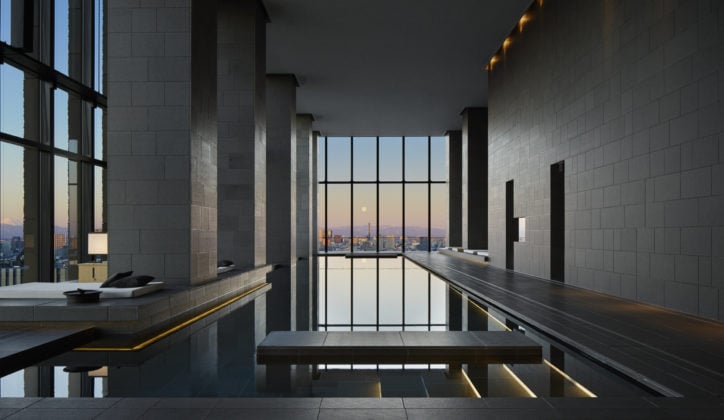
Enjoy your time exploring the incredible metropolis of Tokyo, a city with an infectious energy that is like no other.
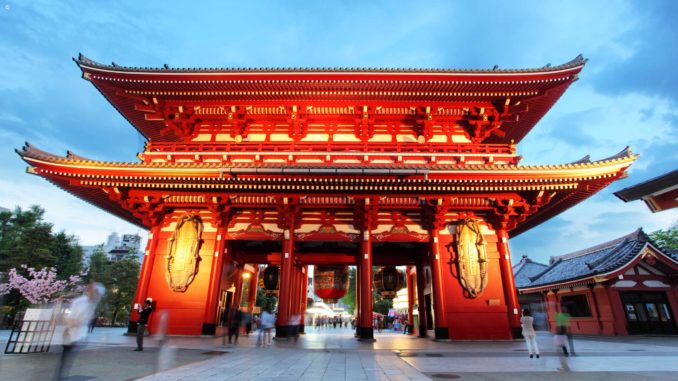
Early this morning, you'll meet your guide who will drive you in a private vehicle to the Tokyo National Museum (TNM), located inside Ueno Park. It is the oldest and largest museum in Japan, holding over 110,000 pieces of art, of which 87 are recognised as Japanese National Treasures and 610 as Important Cultural Properties. The collections are divided into thematic galleries and your guide will show you a selection of the best pieces in several galleries, including the gallery of Horyu-ji Treasures. After your visit, transfer to Asakusa District, one of Tokyo oldest and best-preserved districts. Take a brief stop at Sensoji Temple, with its huge lantern and the Nakamise, dating back to the Edo period when the temple’s neighbours were given special permission to open their shops in the approach to the temple. Your guide will show you the small streets of Asakusa where you can still feel the presence of Ancient Japan.
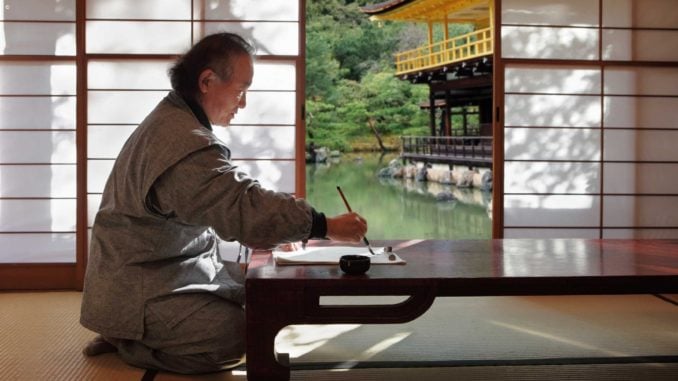
After lunch, you will have the opportunity to take part in your choice of either a calligraphy workshop or a traditional tea ceremony. More than just an art form, calligraphy ("shodo" in Japanese) is thought to cultivate your inner self. Particular emphasis is placed on the combination of the strokes, the movement of the brush and the shades of the ink, as you write your chosen “Kanji”, the Chinese characters on which the Japanese writing system is based. Each kanji is a symbol for a concept and reflects a historical connecting to the word’s meaning. Tea ceremonies are one of Japan's traditional cultural practices and encompass not only the making of tea, but also tea-room architecture, the appreciation of tea utensils and bowls and Zen Buddhism. After this peaceful experience, enjoy a walk in the East Gardens of the Imperial Palace, a verdant oasis covering 115 hectares in all and home to one of the most beautiful gardens in Tokyo. After entering from the Otemon Gate, which once served as the main gate to Edo Castle, you will be within the Sannomaru grounds where the Sannomaru Shozokan, a very small museum, displays various items that were gifted to the Imperial Family. Continue to the Ninomaru Garden another beautiful area with a coy pond and a small waterfall.
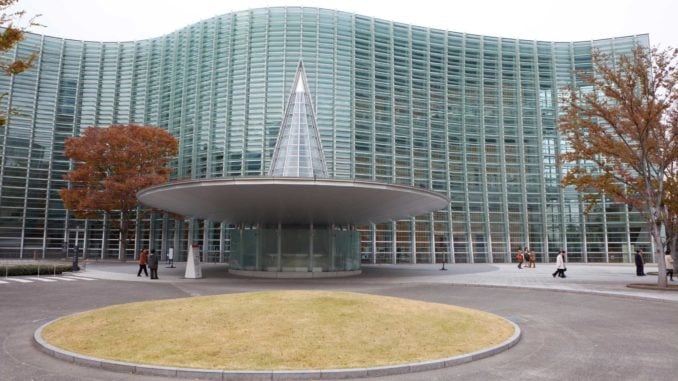
This morning, you will meet your private guide in the hotel lobby and leave in a chartered vehicle to discover a very different side of Tokyo. First, we visit the “National Art Center”, interesting both for its architectural design and its exhibits. Rather than maintaining a permanent collection, it offers fresh angles by showing a great variety of art expressions in the 14,000 square meters of exhibition space available. The museum is also worth the visit simply to enjoy the amazing interior architecture. Alternatively, you can choose to visit the 21_21 Design Sight musuem by Issey Miyake which focuses on design and modern arts. Next we move onto the busy streets of Omotesando, Harajuku and Aoyama followed by Shibuya, lined with fashionable shops and architectural wonders. We'll discover international brands, countless smaller boutiques and designer shops tucked away in smaller streets. Alternatively, your guide can also take you to some of Tokyo’s most interesting art galleries. We'll enjoy lunch in the Shibuya area.
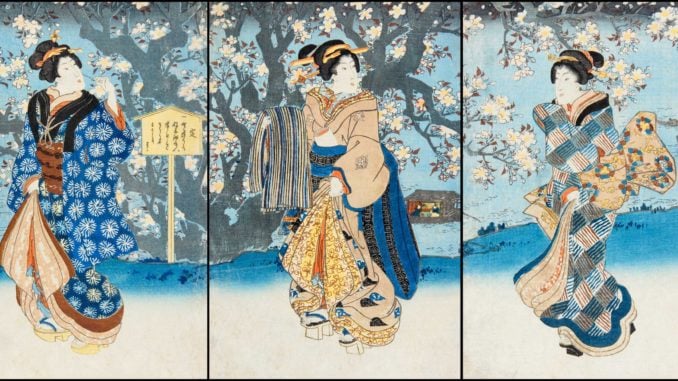
At the Ukiyo-e Ota Memorial Museum of Art you'll get the chance to see ukiyo-e woodblock prints and paintings. This genre of art flourished in Japan from the 17th through to the 19th century and was aimed at the prosperous merchant class in the urbanising Edo period. Amongst the popular themes were depictions of beautiful women, kabuki actors and sumo wrestlers, scenes from history and folk tales, travel scenes and landscapes, flora and fauna and erotica. Its exotic two dimensional style has attracted many European painters, especially impressionists including Van Gogh. What makes the Ota collection especially remarkable is its depth, with representative masterpieces from the birth of the ukiyo-e tradition to its height. The colours and materials of the originals have been perfectly preserved at the museum.
Private transfer to Tokyo station
Train from Tokyo to Kanazawa
Kanazawa & Yamashiro and Yamanaka
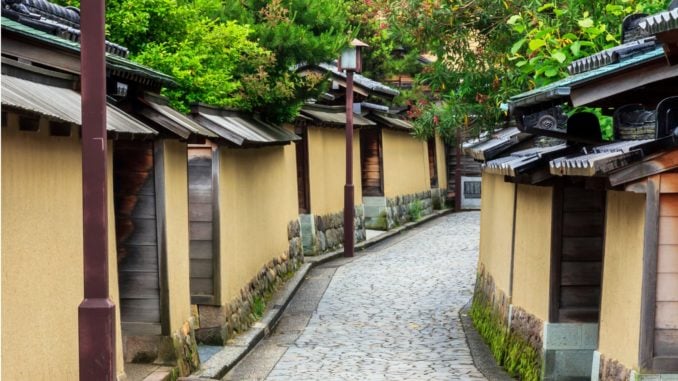
You will be met by your private English speaking guide from your bullet train. Start your excursion by private chartered vehicle to the Omicho Market, which local people regard as the “Kitchen of all Kanazawa”, for a short visit before lunch.
Move on to the ancient Samurai district of Nagamachi. Walking through this traditional part of Kanazawa, you'll see tangible evidence of Kanazawa’s prosperous past. In a tranquil setting, the narrow, rock-laid street bordered by earthen walls and decorative gates exude an ambience of feudal times. A visit to Nomurake, a former Samurai House, gives a great insight into Traditional Architecture.
Finally, stroll the magnificent Kenrokuen Garden, reputedly one of the three most beautiful landscape gardens in Japan. Admire the harmonious coexistence of six Chinese attributes of perfection, evolving as seasons unfold.
You'll be transferred in a private vehicle to your hotel in Yamanaka and Yamashiro.
Accommodation in Yamashiro and Yamanaka
Yamashiro and Yamanaka

Dating back over 800 years, this ryokan is immersed in Japanese history. Relax in the hotel’s onsen which have won international acclaim.
In authentic Japanese Sukita style, the 18 luxury guest rooms face the tranquil zen-designed garden. The natural beauty of the garden is echoed in the rooms, where the traditional Japanese use of light and space is evident, from the washi-paper sliding doors and tatami-mat flooring, you’ll find yourself emerged in this rich culture.
During your stay you will dine in on an abundance of local cuisine, tasting delicacies from the nearby sea and the bountiful land that surrounds the area. Find yourself totally emerged in local culture, even down to your clothing, this will be an experience you will never forget.

This luxury ryokan is located in the small hot springs village of Yamanaka, which is untouched by time. Surrounded by thick forested hills and stunning natural beauty, find yourself immersed in rich Japanese culture whilst you unwind at this tranquil inn.
The 10 guest rooms and suites are arranged in the traditional sukiya style of a tea ceremony pavilion. The decor is discreet and elegant from the tatami walkways to the original painted screens, the luxury and exclusive ambience of this ryokan is undeniable. During your stay relax in the natural hot springs renowned for their soothing and curative properties.
The piece de resistance of this ryokan is the cuisine. During your stay you will be served in your room, feasting on the delicious true Japanese kaiseki cuisine. Taste the exquisite local ingredients you are in for a true culinary delight.

Unwind in the calmness of this luxury Japanese ryokan, and it wont take you long to feel like you’re immersed in tranquility. You can start your day with yoga, take part in a traditional tea ceremony and finish it the hotel’s hot springs.
Combining Japanese and western decor, the 17 guest rooms and suites are all decorated uniquely. Comprising of solely Japanese-style rooms, Western-style rooms and some of which are a hybrid between the two, this ryokan is like no other. The hotel’s architecture elegantly emphasises contrast between light, shade and neutral colours creating a peaceful atmosphere for total relaxation.
During your stay taste the phenomenal Kaiseki cuisine in the inclusive 10-course meal. With a strong cultural emphasis on fresh, local produce enjoy the exquisite flavours of this region.
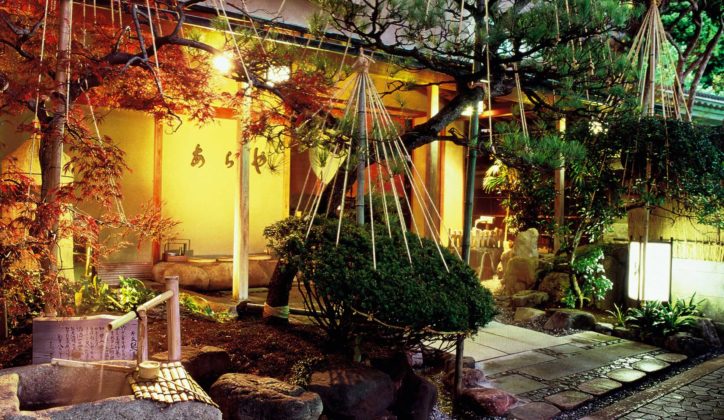
Spend the remainder of the day relaxing in your ryokan's onsen, soaking up the benefits of the mineral-rich waters. Once you've built up an appetite, you'll be served a traditional kaiseki dinner consisting of between 12 and 15 dishes made with fresh seasonal ingredients and carefully presented on beautiful plates.
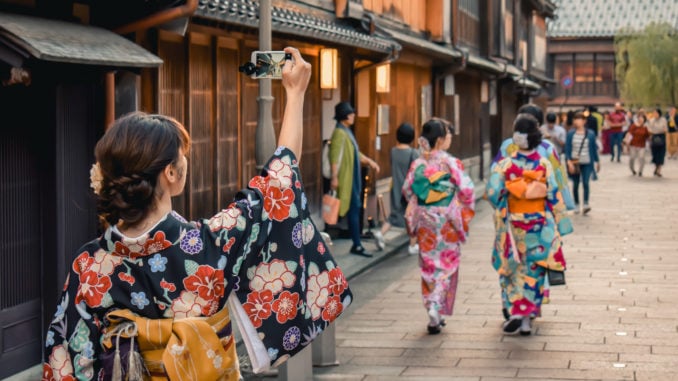
Spend your time in the historical centre of Kanazawa discovering the Nagamachi samurai district and the Chaya geisha entertainment quarter. There's also the 17th century castle to explore alongside a horde of other cultural attractions such as the Ishikawa Gate, the Sanjikken Longhouse and the celebrated Kenroku-en Garden. Your travel designer can help you to experience the city at its best with private guided tours and excursions.
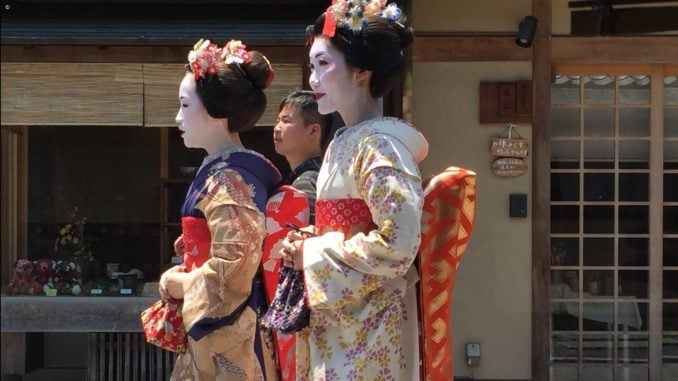
This morning your private English speaking guide and your driver will meet you at your onsen in Yamashiro and Yamanaka and transfer you to Kanazawa. First, discover the magnificent Kenrokuen garden, reputedly one of the three most beautiful landscape gardens in Japan. The garden was designed to reflect the harmonious co-existence of six Chinese attributes of perfection which evolve as the seasons unfold. Then visit the D.T. Suzuki Museum, dedicated to the prominent Buddhist philosopher Daisetsu Suzuki. After lunch, visit the ancient Higashiyama Geisha District. Built in 1820, it still preserves Kanazawa’s feudal heritage with wooden lattice fronts of old geisha houses. Many buildings have been converted into shops, showcasing Kanazawa’s sophisticated craft heritage: ceramics, lacquer ware and gold-leaf decorated items. Well worth a visit is Kaikaro, where you'll discover a traditional teahouse in which Geisha still entertain their clients. Enjoy the privileged opportunity (upon availability) to meet and discuss freely with the “Okami-san” around a cup of tea and get a better understanding of the world of Geisha. (Your guide will translate). Enjoy strolling around the old streets in the Geisha district before transferring to Kanazawa station with your private chartered vehicle.
Shinkansen "Bullet Train" from Kanazawa to Kyoto
Private transfer from Kyoto Station to your chosen hotel
Accommodation in Kyoto

Sail along the banks of the Hozugawa River and tucked away in the hills of the Arashiyama district, you will find a series of traditional Japanese-inspired houses clinging to a mountainside, which make up the HOSHINOYA luxury hotel. Upon entering the hotel changed into slippers and silk robes and unwind in this retreat, which will make you feel miles away from the bustle of Kyoto.
The 25 rooms at this exclusive resort infuses classic Japanese interiors with contemporary style, creating a tranquil, comfortable atmosphere. During your stay savour the creative multi-course Japanese kaiseki dinner, combining Japanese and foreign flavours for a totally unique culinary experience.
Explore the local Arashiyama district and marvel at the famous cherry blossom or venture into Kyoto itself and discover the rich culture of this city. After a busy day treat yourself to a spa treatment at the hotel, relax in the gardens or visit the tea rooms. Unwind at the luxury, peaceful oasis.

- 134 guest rooms and suites
- Four dining outlets
- Indoor pool
- Niko castle
- Imperial Palace
- Retail and entertainment in downtown Kyoto
With 134 guest rooms, the Ritz-Carlton is Kyoto ’s first urban luxury resort. Sitting on the banks Kamogawa river, the hotel boasts astounding views of the famous Higashiyama mountains.
The hotel has four restaurants and you can take your pick from traditional Japanese dishes, Italian cuisine or go for the seafood private dining option. Enjoy brunch or sweet treats by the French patisserie Pierre Hermé Paris next to a cascading waterfall in the terrace, or retire to the library where a range of Japanese art and architecture books are available for you to thumb through at your leisure.
Situated in close proximity to Kyoto’s popular downtown areas, retail and entertainment districts, this hotel will allow you to enjoy the rich culture of Japan’s ancient capital within modern luxury. Explore the Imperial Palace, Nijo Castle or the atmospheric dining of Pontocho, all of which will be on your doorstep.

Located in the heart of Kyoto, the stylish Hyatt Regency offers spacious rooms and excellent hospitality. This hotel is perfect for those looking for a relaxed atmosphere whilst exploring the rich culture of Kyoto.
Each of the elegant 189 guest rooms and suites are decorated in light neutral tones combining the aesthetics that Japan is famed for with the style and comfort of western living. During your stay marvel in the culinary excellence offered by the Hyatt, from authentic Italian cuisine to a French grill to flavourful Japanese dishes, there is something for everyone at this luxury hotel.
Explore the wonders of Kyoto, with countless temples and shrines and other historical structures, marvel in this city’s fascinating culture. After a busy day of exploring why not visit the hotel’s spa for a relaxing massage or visit The Touzan Bar to taste the hotel’s boutique sake collection.
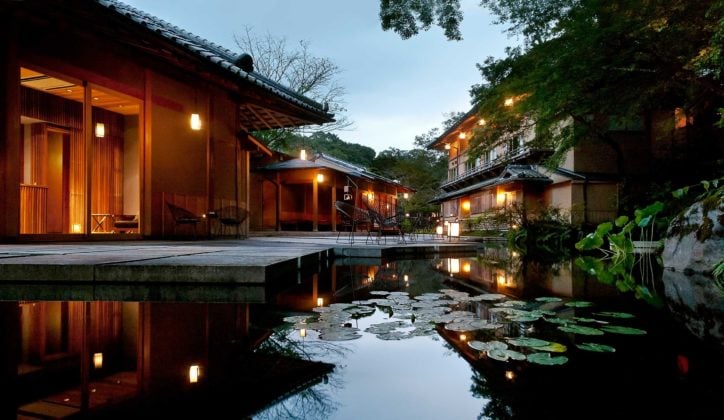
Spend your time in Kyoto admiring the impressive imperial beauty of the city, evident in the abundance of prewar buildings such as grand palaces, traditional "machiya" townhouses and ornate shrines. See kimono-clad geisha on their way to engagements and stroll in the celebrated Ryoan-ji rock garden. Make sure you visit the magnificent wooden Kiyomizu-dera and the Golden and Silver Pavilion Temples. Your travel designer can help you to experience the city at its best with private guided tours and excursions.
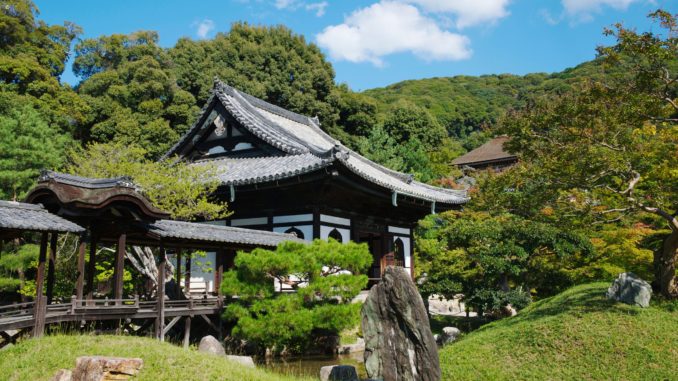
This morning your private guide will meet you at your hotel and transfer you by chartered vehicle for your first day of Kyoto excursions. Start your visit at Sanjusangendo which was founded in 1164 and is famous for its 1001 statues of Kannon, the goddess mercy. Entering the main hall, guests can notice a centrally located large Kannon, flanked on each side by 500 smaller statues standing in neat rows side by side. Next we move onto to Kodaiji Temple, a temple of the Rinzai (Pure Land) school of Zen Buddhism which was founded during the Momoyama-period by the wife of Toyotomi Hideyoshi, the powerful general who unified Japan at the end of the 16th century. Kodaiji is interesting for both its formal gardens which include “artificial mountains" and a dry rock garden but also for its bamboo grove that leads to two famous teahouses and the splendid Maki-e, which give this temple its nickname as “Maki-e Temple. We then reach Yasakajinja shrine which is one of Kyoto’s most famous shrines and funds the annual Gion Matsuri Festival. Enter the peaceful grounds to see the offerings made by local people and businesses. If time permits, we'll also see a ceremony performed by the shrine’s maidens (advance notice is required). The shrine is also very pretty at night when its numerous lanterns are lit.
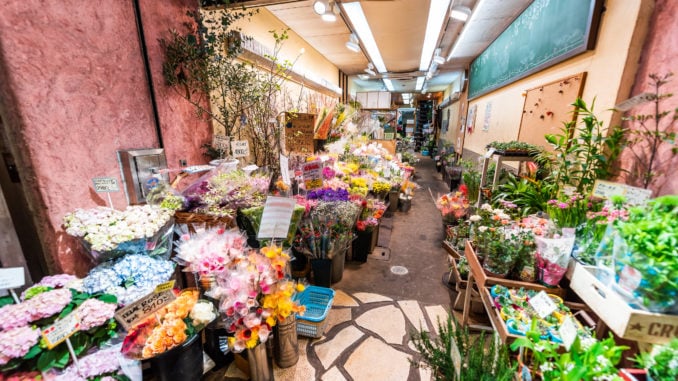
After lunch, we visit the National Museum of Modern Art, a wonderful place to spend an afternoon. The permanent collection has several galleries, displaying selected works of nihonga (Japanese-style painting), yoga (Western-style painting), prints, sculpture, crafts (ceramics, textiles, metalworks, wood and bamboo works, lacquers and jewellery) and photography from the museum's collection. Also shown are works of Japanese modern art as well as modern and contemporary European and American art.
Then take a stroll in Teramachi, a quiet and relaxing district, offering great shopping opportunities. Seikado (traditional Japanese metal craft) and Ippodo (exclusive Japanese tea) and other time-honoured shops have long made Teramachi Street a popular yet distinctive area.
If time allows, we will end with a visit to Nishiki Market, a narrow shopping arcade only 400m in length with over 100 vendors. Here, guests can discover Kyoto’s distinctive culinary delicacies. “Aritsugu” which features a variety of excellent kitchen tools, is a recommended shop to visit.
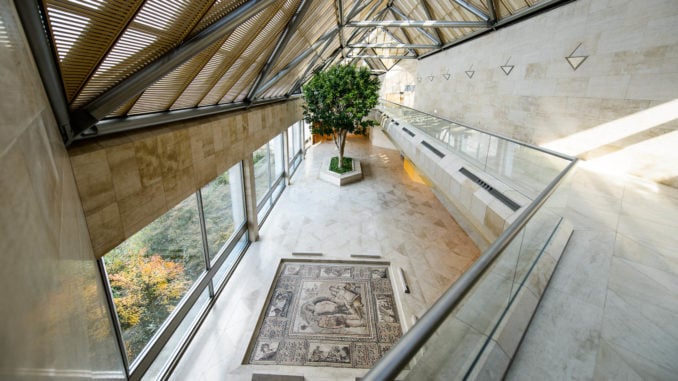
Meet your guide in your hotel lobby and be transferred in a private chartered vehicle to the Miho Museum (1.5 hour drive from Kyoto). Although not a contemporary art museum, it is well worth a visit, both for its architecture and its exhibitions. The museum was designed by I. M. Pei who also designed the glass pyramid at the entrance to the Louvre. More than 80% of the museum's structure is beneath the earth so as to preserve its natural environment and the surrounding scenery.
The museum comprises of two wings: the South Wing focuses on the Silk Road and contains a collection of treasures from the old-world civilizations of Egypt and Eurasia, such as a Statue of Queen Arsinoe II (Egyptian) and a standing Buddha from Gandhara, one of the largest in the world. The North Wing periodically hosts various exhibits and displays of Buddhist art, tea-making utensils, maki-e and other lacquer works.
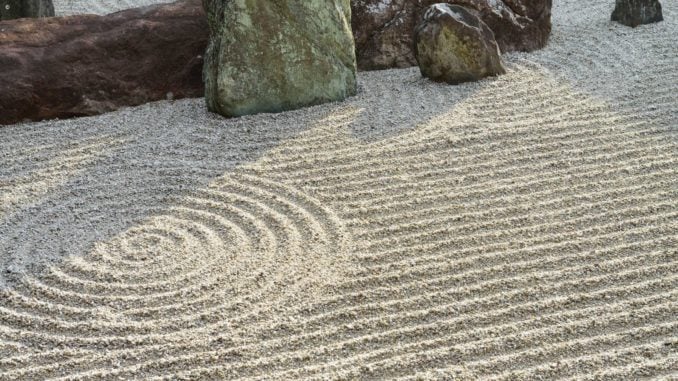
Visit the Kinkaku-ji 'Golden Pavilion' temple. Built in 1397 to serve as a retirement villa for Shogun Ashikaga Yoshimitsu, Kinkaku-ji served as the inspiration for the Ginkaku-ji the Silver Pavilion which was built by the Shogun's grandson.
We then continue to the serene Ryoan-ji Temple which is celebrated for its rock garden, comprised of nothing but clay walls, raked sand and 15 rocks.
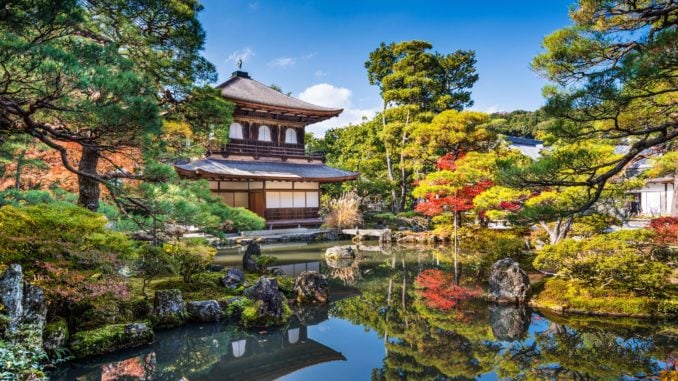
Today is yours to spend at your leisure. Relax at your hotel or venture out to the western outskirts of Kyoto to see the natural beauty of the Arashiyama district and its famous bamboo groves. Stroll in the gardens of the Ginkakuji Silver Pavilion temple or visit the Nanzenji Temple. Your travel designer can help you to experience the city at its best with private guided tours and excursions.
Private transfer to Kyoto Station
Shinkansen "Bullet Train" from Kyoto to Okayama
Private transfer to your hotel on Naoshima Island
Accommodation in Naoshima Island

Minimalist design, contemporary cool, modernist chic. This hotel/museum fuses nature and art together with its striking architecture and artwork dotted all over the secluded Benesse House complex. Sculptures, installations and paintings are dispersed throughout the hotel; in bedrooms, on the grounds, and in the main galleries.
With just 11 guest rooms and suites, most of which offer an expansive view of the stunning, Seto Inland Sea, guests can enjoy the natural beauty and remote setting of this luxury complex. Four different buildings are centred around the museum, each with its individual style and distinctive suites.
Benesse House Hotel is ideally located in the heart of a buzzing, developing art scene, on Naoshima island. Numerous art projects, programs and exhibitions are fast emerging and can be easily visited during your visit. Hotel guests can also enjoy exclusive, after-hours access to the Benesse House museum.
After a day of exploring the island, or the surrounding islands for that matter, relax in the spa and wine and dine in one of their excellent on-site restaurants, each offering fresh, local produce and fine cuisine.
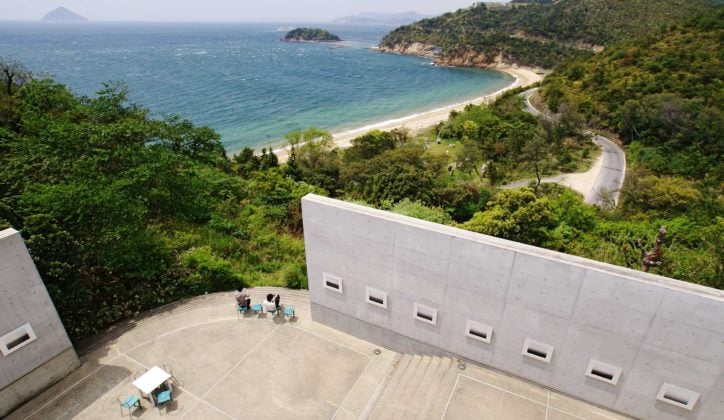
Spend your time on Naoshima Island visiting the numerous, internationally acclaimed contemporary museums. Designed by world famous Japanese architect Tadao Ando, Benesse House is the island's original museum and features works by Andy Warhol, Richard Long and Bruce Nauman. The Art Project is also a fascinating exhibition, comprised of old village houses that have been converted into art spaces showcasing Japanese and international artists. Naoshima is also a beautiful beach and mountain destination so make sure to leave some time to enjoy the island's golden sands, warm water and enjoyable hikes.
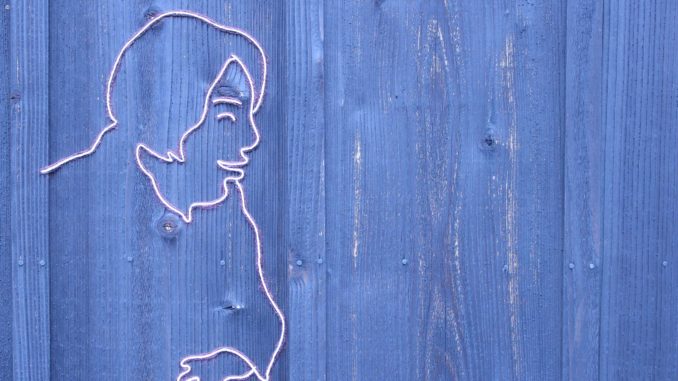
Today, enjoy a full day at leisure on Naoshima Island. Visit the island's numerous museums and art installations which are mostly accessible on foot or with your hotel's shuttle bus service. Recommended visits include ?Benesse House which is both a luxurious hotel and a contemporary art museum housing site-specific works and a permanent collection. Outdoor artworks and a temporary exhibition can be seen at the Ping Pong Gallery in Honmura.
Chichu Museum is similarly a must see and like Benesse House, was also designed by Tadao Ando. It is mostly buried underground except for apertures that let in natural light. The Lee Ufan Museum which offers a harmony between nature, architecture and art is a pleasant option, and the Art House Project is a very interesting work where artists have transformed vacant houses into artworks while taking into consideration space, history and memory accumulated at the site. Please note that many exhibitions must be booked in advance. Speak to your travel designer to find out more.
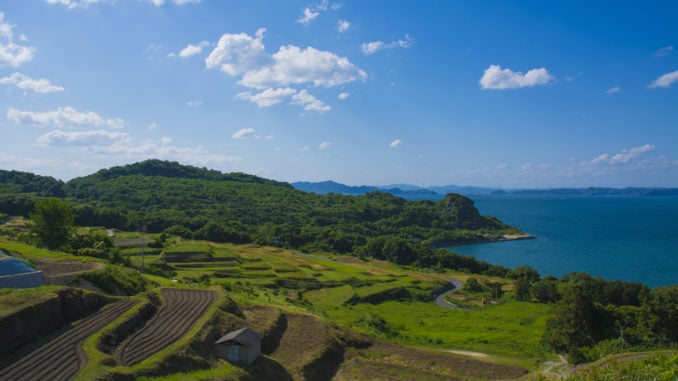
Today is yours to spend as you wish. We recommend that you discover the nearby island of Teshima. Take a courtesy shuttle bus from Benesse House to Miyanoura port and board the ferry to Leura Port. A bus will then take you to Les Archives du Coeur. This exhibition by Christian Boltanski compiles recordings of heartbeats from around the world. The project consists of three elements: an installation using recordings of heartbeats, a listening room where visitors can listen to archived recordings and a room where your own heartbeats can be recorded.
Then take a bus or a taxi to Teshima Art Museum which is located on a hill overlooking the Inland Sea. Shaped like a drop of water, the museum lies in a corner of the spacious grounds surrounded by once-fallow rice terraces that have been restored with help from local residents.
We recommend lunch at Shima Kitchen, a semi-outdoor space with an open and welcoming atmosphere, where Island women collaborate with chefs from Marunouchi Hotel to make delicious cuisine from local fish and products. After lunch, visit the Pipilotti Rist installation house. This small storehouse in the yard of Shima Kitchen exhibits Video Art that focuses on nature.
Next, Stroll around the area and visit Particles in the AIR by Noe Aoki, which consists of rust-covered shafts of Corten steel straddling a water tank that's been embedded in the ground. Circular hoops hover in the air above like dancing particles.
Afterwards you can visit Storm House. This experiential work employs light, water and sound to recreate an approaching storm. Then, take a bus or a taxi to Leurako Port to see Il Vento restaurant which was renovated and designed by Tobias Rehberger. Teshima Yokoo House is your final visit. This museum is dedicated to artist Tadanori Yokoo and consists of 11 paintings, including a series of three large works entitled “The Primitive Universe”, as well as installations in a circular tower and garden. Return by ferry and shuttle bus to Naoshima and Benesse House.
Private transfer from Naoshima Island to Okayama Station
Shinkansen "Bullet Train" from Okayama Station to Odawara in Hakone
Private transfer to your hotel or ryokan in Hakone
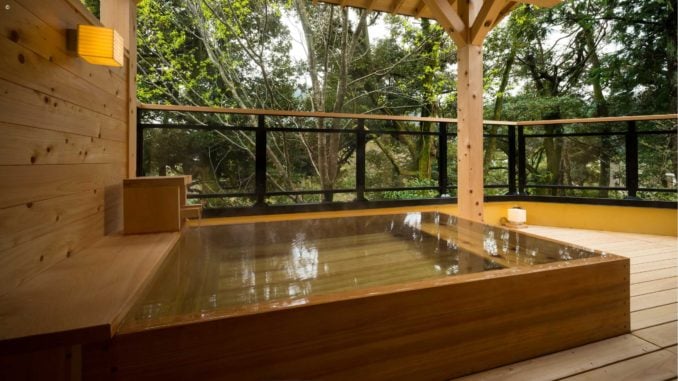
This evening, you'll enjoy a delicious a traditional kaiseki dinner consisting of between 12 and 15 dishes made with fresh seasonal ingredients and carefully presented on beautiful plates. Spend the rest of the evening relaxing at your comfortable ryokan. You'll have our recommendation for the best things to see and do during your time.
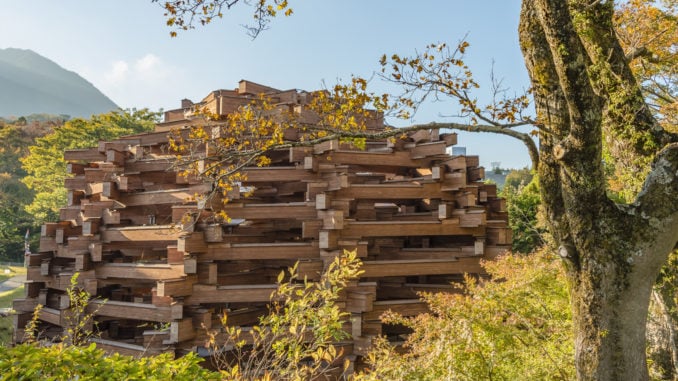
This morning, meet your English-speaking guide and visit the unique Hakone Open Air Museum where we can enjoy the balance of nature and art through a variety of sculptures in perfect harmony with picturesque views of the surrounding valley and mountains. We'll also take a look at the indoor galleries, including works from world famous artists including Rodin, Bourdelle and Miro and one of the largest collections of British sculptor Henry Moore. There is also a Picasso Pavilion with a collection of over 300 pieces. Then, we take a cable car and ropeway ride to Owakudani Valley which formed around a crater created in the last eruption of Mount Hakone 3,000 year ago. Experience the views of sulphurous fumes, hot springs and rivers while walking around the area. On arrival on the other side of the mountain, board a boat for a lake cruise while enjoying the magnificent views of Mount Fuji in the background. Look for reflections of the surrounding mountains in Lake Ashi, formed in the caldera of Mount Hakone after the volcano’s last eruption. Alternatively, we can arrange for you to visit Hakone's many museums, including the POLA Museum, the Hakone Museum of Arts and the Lalique Museum. You will then be driven in a private vehicle to Tokyo where you will check-in and enjoy the rest of the evening at leisure.
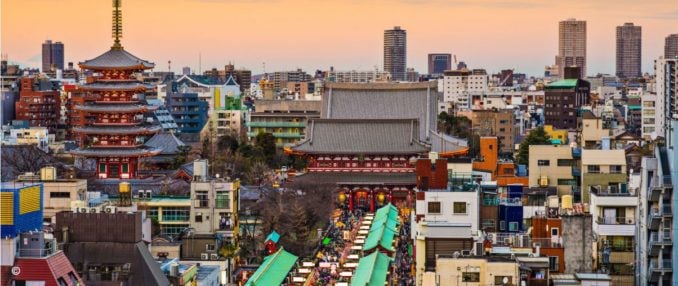
Enjoy your last evening exploring the incredible metropolis of Tokyo, a city with an infectious energy that is like no other.
Private Transfer from your Tokyo hotel to the airport
We design private journeys for people who wish to go beyond the typical and experiencing something truly special. Our amazing team of travel designers, concierges and local guides work together to create unique journeys that get deep under the skin of where you’re visiting.
Other trips you may be interested in
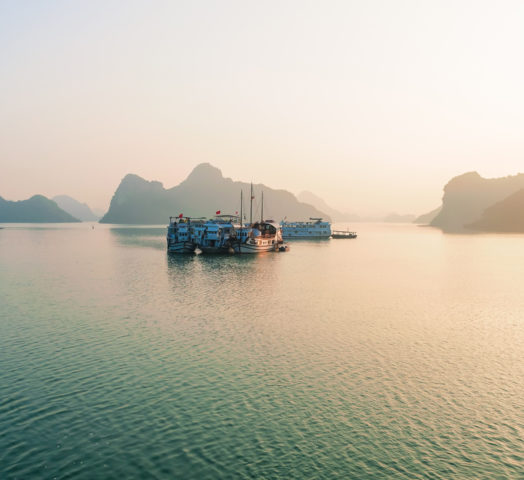
13 Day trip
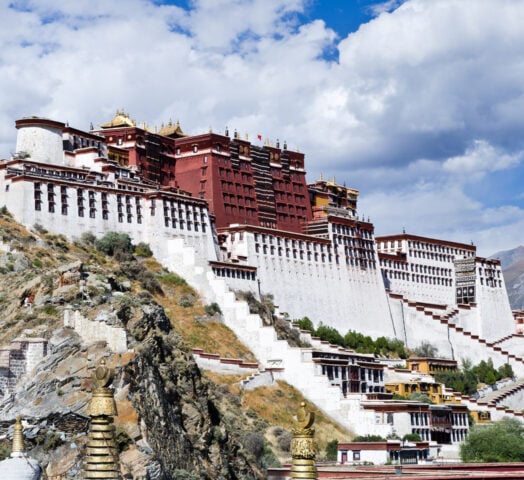
12 Day trip

15 Day trip
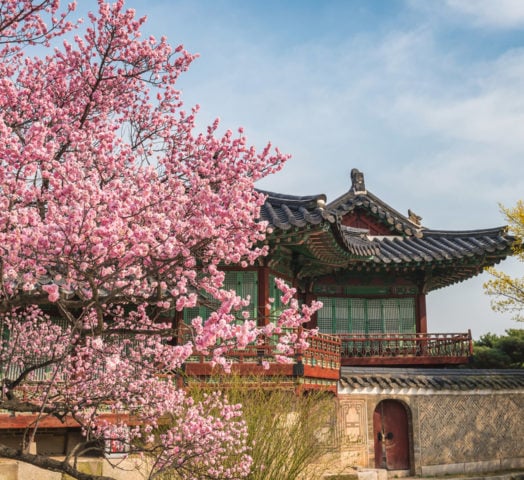
14 Day trip
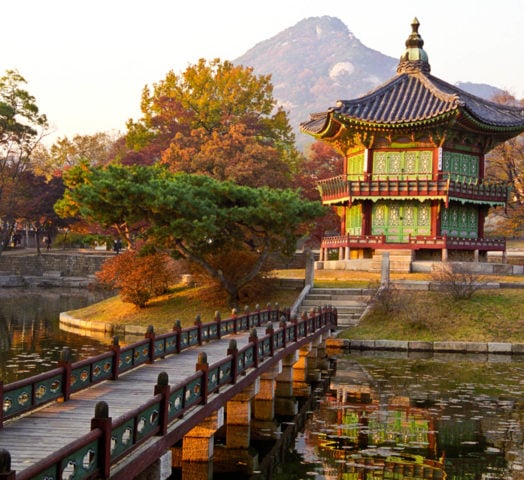
11 Day trip
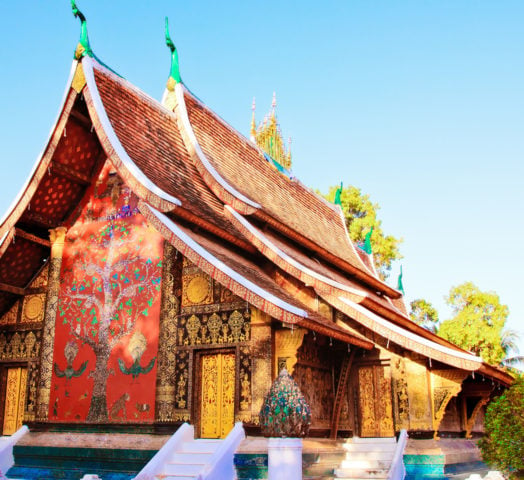
Get in touch
Art, gardens and temples: a luxury cultural tour of japan, how we work.
We create fully personalised trips from start to finish, working with you to pick locations, accommodation and guides that suit you.
Every trip helps support Conservation.
From in-depth private tours to restaurant reservations, we take care of every detail so you can make the most of your journey.

- Media & Industry
- Meetings & Events
- Select Language 简体中文 繁體中文(香港) 繁體中文(臺灣) India (English) Bahasa Indonesia 한국어 ภาษาไทย Tiếng Việt Singapore (English) Philippines (English) Malaysia (English) Australia/New Zealand (English) Français Deutsch Italiano Español United Kingdom (English) Nordic countries(English) Canada (English) Canada (Français) United States (English) Mexico (español) Português العربية Japan(日本語) Global (English)
- India (English)
- Bahasa Indonesia
- Singapore (English)
- Philippines (English)
- Malaysia (English)
- Australia/New Zealand (English)
- United Kingdom (English)
- Nordic countries(English)
- Canada (English)
- Canada (Français)
- United States (English)
- Mexico (español)
- Global (English)
- Fujiyoshida
- Shimonoseki
- Ishigaki Island
- Miyako Island
- Kerama Island
- Tokyo Island
- Koka & Shigaraki
- Hida Takayama
- Ginza, Nihonbashi
- Beppu & Yufuin (Onsen)
- Ginzan Onsen
- Nagasaki Islands

- Kumano Kodo
- Shikoku Karst
- Amami Oshima
- Hachimantai
- Omihachiman
- Aizuwakamatsu

- Diving in Japan
- Skiing in Japan
- Seasonal Flowers in Japan
- Sustainable Outdoors
- Off the Beaten Track in Japan
- Scenic Spots
- World Heritage
- Home Stays & Farm Stays

- Japanese Gardens
- Japanese Crafts
- Temple Stays
- Heritage Stays
- Festivals and Events
- Theater in Japan
- Japanese Tea Ceremony
- Cultural Experiences in Japan
- Culture in Japan

- Local Cuisine Eastern Japan
- Local Cuisine Western Japan
- Local Street Food
- Japan's Local Ekiben
- Japanese Whisky
- Vegetarian and Vegan Guide
- Sushi in Japan Guide
- Japanese Sake Breweries

- Art Museums
- Architecture
- Performing Arts
- Art Festivals
- Japanese Anime and Comics
- Japanese Ceramics
- Local Crafts

- Scenic Night Views
- Natural Wonders
- Theme Parks
- Samurai & Ninja
- Iconic Architecture

- Wellness Travel in Japan
- Japanese Ryokan Guide
- A Guide to Stargazing in Japan
- Relaxation in Japan
- Forest Bathing (Shinrin-yoku)

- Experiences in Japan
- Enjoy my Japan
- National Parks
- Japan's Local Treasures
- Japan Heritage
- Snow Like No Other
- Wonder Around Japan

- Visa Information
- Getting to Japan
- Airport Access
- COVID-19: Practical Information for Traveling to Japan
- Anime Tourism
- Countryside Stays
- Accessible Tourism
- Hokkaido Great Outdoors
- Scenic World Heritage in Tohoku
- Shikoku’s Nature and Traditions
- Southern Kyushu by Rail

- Traveling by Rail
- How to Travel by Train and Bus
- JR Rail Passes
- Scenic Railways
- Renting a Car
- Sustainable Travel in Japan
- Travel Brochures
- Useful Apps
- Online Reservation Sites
- Eco-friendly Accommodation
- Luxury Accommodations
- Traveling With a Disability
- Hands-free Travel
- How to Book a Certified Tour Guide
- Volunteer Guides
- Tourist Information Center

- Japanese Manners
- Spring in Japan
- Summer in Japan
- Autumn in Japan
- Winter in Japan
- Cherry Blossom Forecast
- Autumn Leaves Forecast

- Japan Visitor Hotline
- Travel Insurance in Japan
- Japan Safe Travel Information
- Accessibility in Japan
- Vegetarian Guide
- Muslim Travelers
- Safety Tips

- JAPAN Monthly Web Magazine
- Arts & Cultures
- Nature & Outdoor
- Festivals & Events
- Insider Blog
- Things to do
- Local Guides
- Food & drink
- Traditional
- Hokuriku Shinetsu

My Favorites
${v.desc | trunc(25)}
Planning a Trip to Japan?
Share your travel photos with us by hashtagging your images with #visitjapanjp
- Roppongi & Akasaka
- National Art Center Tokyo
- Art & Design
The National Art Center, Tokyo 国立新美術館

7-22-2 Roppongi, Minato-ku, Tokyo-to
- View on Google Maps
- Get Transit Info
©The National Art Center, Tokyo
A world-class exhibition space that's visually striking inside and out
The National Art Center, Tokyo, is Japan's fifth national art museum. The National Art Center, Tokyo, opened in 2007 and is one of the country's most important art spaces. A variety of exhibitions are held here, making use of one of the largest exhibition spaces in the country (14,000 m2). The gallery works under three major policies:
Exhibitions: The NACT presents a large variety of art expressions and offers fresh perspectives on artistic creativity.
Information Collection and Dissemination: The NACT connects people and art through the gathering and sharing of information and resources.
Education and Public Programs: The NACT serves as a site of participation, interaction, and creativity.
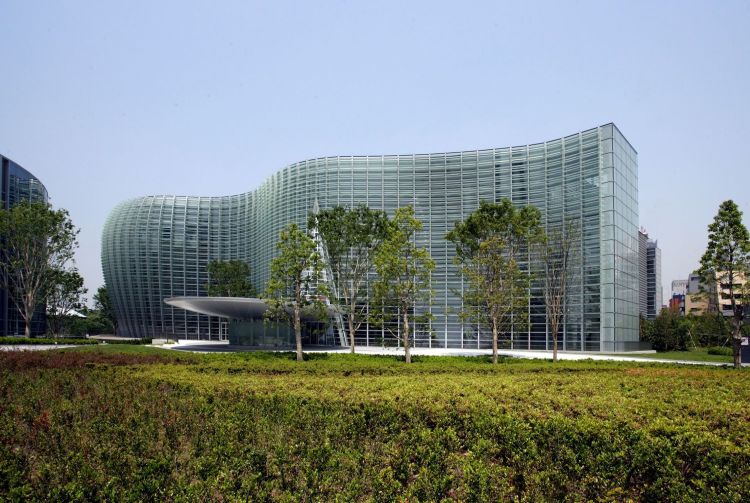
- Fine French dining with a view at Brasserie Paul Bocuse Le Musee
- The extensive third-floor Art Library, exclusively devoted to art
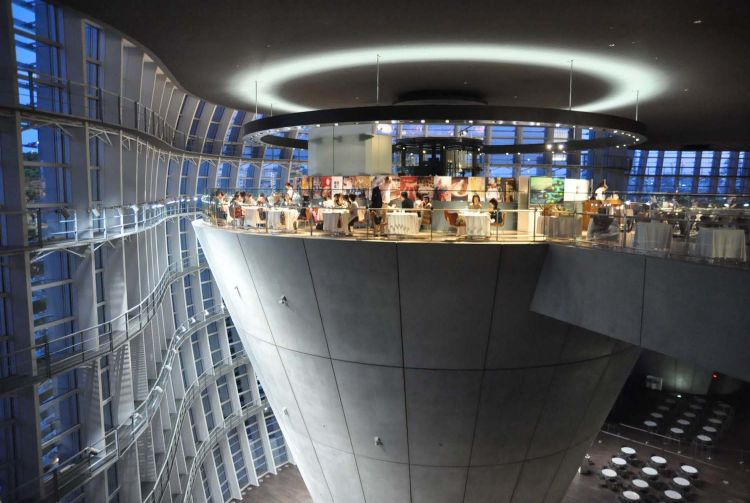
How to Get There
The nearest stations to The National Art Center, Tokyo, are Nogizaka or Roppongi subway stations.
Take the Chiyoda Line to Nogizaka Station and leave through exit 6 for direct access. Alternatively, take either the Hibiya or Oedo Line to Roppongi Station and walk about five minutes.
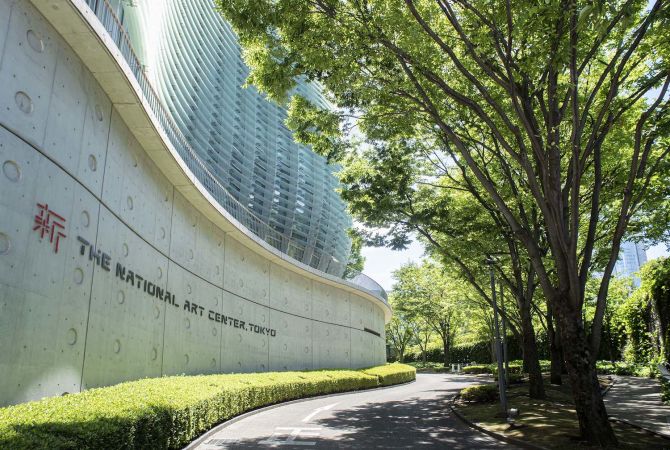
Quick Facts
The space houses three cafes and a restaurant
There are 14,000 square meters of exhibition space
The National Art Center, Tokyo, has temporary exhibitions across various genres
The museum is closed on Tuesdays
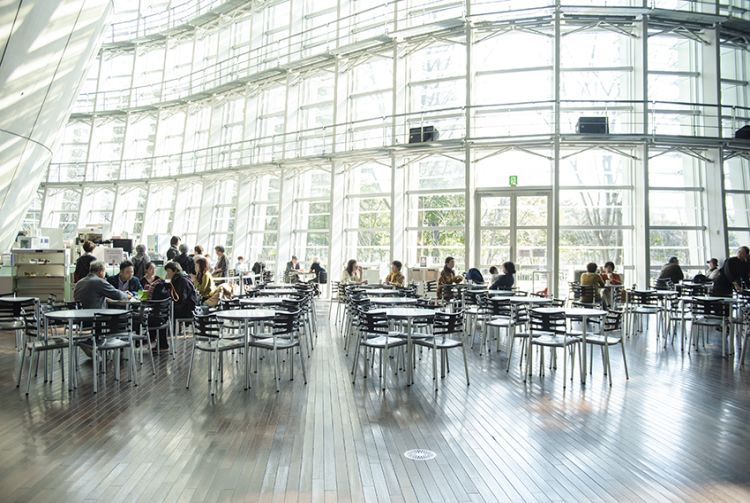
An impressive building
Since opening in 2007, this stunning structure designed by Kisho Kurokawa has been considered one of Tokyo's most impressive and flexible art spaces. On first approaching, visitors admire the light-filled atrium at the entrance, formed by glass and steel waves.
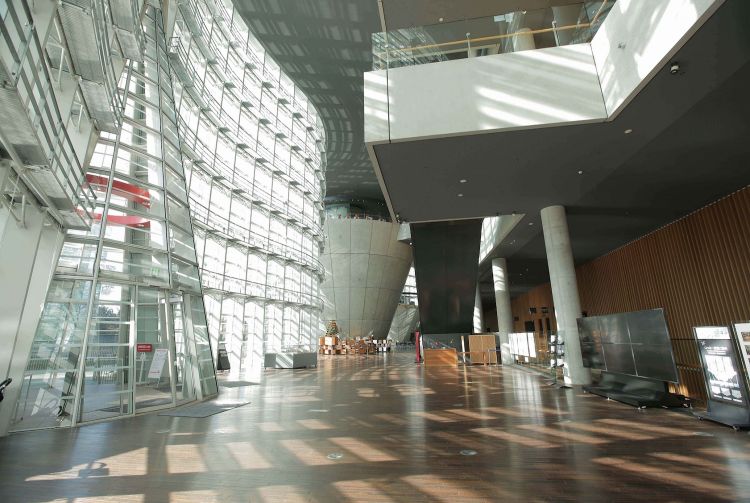
Built on the old campus grounds of the Institute of Industrial Science, University of Tokyo, the museum is one of the most celebrated designs of Kurokawa's final years. Kurokawa was a renowned architect and an exponent of the Metabolism movement. He designed many other art galleries, and his work also includes prominent structures outside of Japan.
A transformative concept
Unlike most other national art museums and galleries, The National Art Center, Tokyo has no permanent exhibition. Rather than hosting one major permanent collection, the gallery is adaptable, transforming its rooms to host a number of rotating art exhibitions simultaneously as well as public events like artist talks and workshops.
Because there's nothing permanent, make sure to explore all three floors fully, as what's there now may not be on display the next time you visit. The special exhibition spaces host regularly changing exhibitions. Previous exhibitions have included works from avant-garde artist Yayoi Kusama, animation director Makoto Shinkai, and architect Tadao Ando.
Art Triangle Roppongi
The National Art Center, Tokyo, is part of “Art Triangle Roppongi," along with Mori Art Museum and Suntory Museum of Art. These three museum spaces in the district which can sometimes be visited at discounted rates if you retain your ticket from one museum and show it when entering the next. This affordable scheme lends for a day of art and culture, perfect before a Roppongi night out.
* The information on this page may be subject to change due to COVID-19.
- National Art Museum
- Modern Architecture
Recommended for You
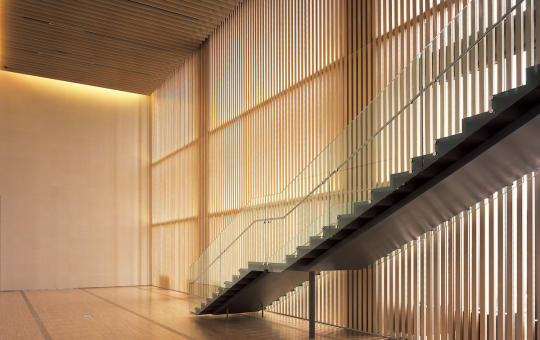
- The National Art Center, Tokyo
Please Choose Your Language
Browse the JNTO site in one of multiple languages

Some of Japan’s Best Art Is Found on These Rural Islands
The best place to see contemporary art in japan is not where you’d think..
- Copy Link copied

Several works by the famed artist Yayoi Kusama, including her iconic, polka-dotted pumpkin, are on Naoshima.
Photo by Anson Fan
It well may be the world’s most photographed gourd. The yellow polka-dotted pumpkin on a pier—the creation of the 94-year-old pop-art grandma Yayoi Kusama —is the unofficial symbol for Japan ’s contemporary art center. But you won’t find this giant gourd in the ultra-modern metropolis of Tokyo . Instead, it’s in an unlikely haven for world-class contemporary art—a cluster of small and sparsely populated islands in Japan’s Seto Inland Sea.
Here, a group of 12 remote islands (including Naoshima, the island on which Kusama’s pumpkin sits) and two port cities have become a destination for art lovers around the world. It all started in 2010 when the Setouchi Triennale , an art festival held every three years, was launched in an effort to revitalize these sleepy rural islands that have suffered from massive depopulation, an aging population, and dying industry.
Since then, creators from around the world and younger generations of Japanese are breathing new life into these islands. Once shut-down elementary schools are turning into art galleries, and abandoned homes are now filled with contemporary artwork made in collaboration with the local people. These islands’ unique history and way of life are not being painted over and forgotten; they are being preserved and reimagined for future generations.
Travelers on an art pilgrimage are also putting these once-overlooked islands back on the map. Even if you aren’t able to make the Setouchi Triennale, the permanent art on these islands—from a subterranean modern art museum to the pop-art installations along the sea—is well worth the 90-minute flight from Tokyo. Here’s how to visit.
Islands not to miss

Yayoi Kusama’s Narcissus Garden is one of many sculptures and art installations you can find on Naoshima.
Many first-timers to the area might think they’ll be able to see every piece of art or even every island, but unless you have unlimited time, it’s going to be difficult. Instead, focus on one of these islands a day and try to enjoy the slow pace and natural beauty of the region, as well as the local food.
This is the island where it all began. Japanese billionaire Soichiro Fukutake opened Benesse House Museum in 1992, bringing contemporary architecture and art to abandoned homes and beaches on the island. Twenty years ago, Naoshima was an isolated and sleepy island, but Fukutake saw the island’s natural beauty as a perfect backdrop for art and art as a salvation for the island’s suffering economy. Designed by architect Tadao Ando, the Benesse House overlooks the Seto Inland Sea and doubles as both a museum and boutique art hotel. Spend a night at the museum under the same roof as works by Hiroshi Sugimoto, David Hockney, Gerhard Richter, Shinro Ohtake, and Richard Long.
While there, be sure to visit Tadao Ando’s Chichu Art Museum , a subterranean space a five-minute drive up the road from Benesse House; it was designed underground so it wouldn’t tamper with the natural landscape.
But the most powerful art here is the unseen and the unsnapped. Put your camera away and experience the pitch-black darkness of famed American light artist James Turrell’s sensory twisting Back Side of the Moon . No cameras are allowed in Japanese digital artist Tatsuo Miyajima Sea of Change 98 permanent exhibit either. Made in collaboration with the island’s residents, it encourages you to pause and reflect by the shallow pool of glowing numbers. Local residents—from age 5 to 95—set these LED counters to a speed that indicates how they view the passage of time. End the day soaking up the art and culture at “I♥YU” ( yu means hot water or bath in Japanese), a funky colorful sento (bathhouse) designed by Shinro Ohtake.
Teshima and Inujima
The Benesse Art Site Naoshima , the collective name for all art-related activities by Benesse Holdings, Inc. and Fukutake Foundation on these islands, also includes sites on the two nearby islands of Teshima and Inujima, which are less crowded and more laid-back. While you’ll have to take a 30- to 40-minute ferry ride from Naoshima to each island, it’s worth it to see the water droplet–shaped Teshima Art Museum , as well as the Inujima Seirensho Art Museum and mini “ Art House Project ,” a series of stand-alone galleries scattered throughout the island.

Little Shops on the Island Laundry Six Cycles 2018 by artist Leandro Erlich
Photo by HOW Art Museum / © Leandro Erlich 2018
Just east of Teshima and Inujima lies Shōdoshima (also known as Shōdo Island), the second largest island in the Seto Inland Sea. For art, don’t miss the Georges Gallery , a gallery and café that displays the works of French photographer Georges Rousse, and the Hishio no Sato Museum of Contemporary Art across the street. In between, keep an eye out for various sculptures scattered throughout the island , including the Gift of the Sun , a wreath-like structure by Choi Jeong Hwa that greets those arriving at the port.
Be sure to enjoy the island’s edible delights as well. Also known as “Olive Island,” Shōdoshima was the first place in Japan to successfully cultivate olives. In addition to producing creative olive-infused edibles, it’s also the last place still making Japan’s 400-year-old traditional wood-barreled soy sauce. End a day of art-hopping with an imaginative treat—soy sauce–covered ice cream at the café at Yamaroku Shoyu , a soy sauce brewery that was featured on Netflix’s Salt, Fat, Acid, Heat .
Megijima and Ogijima
Megijima and Ogijima are the two closest islands to the port of Takamatsu. Megijima offers a concentration of art to see along its sandy beaches, including a beachfront bonsai art house and a playful collection of “Little Shops on the Island,” featuring ping-pong tables and Laundromat installations. The hillside fishing village in Ogijima also offers artwork that’s walkable from the ferry, such as the permanent installation Ogijima’s Soul , a translucent port welcoming visitors to the island.
Where to stay

The Benesse House is part museum, part hotel.
Short on time? Stay on Naoshima
Naoshima is the best place to stay if you only have a couple of days since it has a large concentration of sculptures, museums, and art installations—so much, in fact, that you’d need at least two days to see it all—and several notable hotels that are worth the journey.
A true delight for art lovers is Benesse House , which has 65 rooms in four distinct buildings on a quiet, seaside property dotted with sculptures. If you can, book a room in the Museum house, which allows you to spend the night in an actual museum, or the Oval house, best known for its oval-shaped architecture and hilltop views of the sea (only guests at the Oval house can enter). All stays include free admission to the museum and extended hour access.
Opened in 2022, the Naoshima Ryokan Roka is a new, luxurious addition to the island’s hotel offerings. In contrast to Benesse House’s cool, concrete modernism, Roka is a warm, modern take on the traditional Japanese ryokan, making use of light-colored wood furniture and shōji doors and windows in the design. Each of Roka’s 11 suites include an open-air bath. The on-site restaurant, En, serves multicourse kaiseki and sushi dinners (vegan options available). Keep an eye open for playful touches, such as conversation starters on the chopsticks, throughout.

Ritsurin Garden in the port city of Takamatsu
Photo by Shutterstock
For a longer stay, set up base in Takamatsu
If you want to visit as many of the 12 islands as possible, your best bet is to make the island of Shikoku’s port city Takamatsu your base. From Takamatsu, you can catch frequent ferry service directly to the eastern islands like Naoshima and Shōdoshima (except Inujima, which you can reach by changing boats on Shōdoshima or Teshima).
There’s also much to experience in Takamatsu, including the Ritsurin Garden’s artfully landscaped paths of more than 1,000 pruned pine trees, as well as the region’s signature udon noodles—a thick wheat-flour noodle. (There’s even an Udon Taxi that will take you to all the locals’ secret spots.)
If you want to be close to the ferries, stay at JR Clement Inn Takamatsu , a modern Western-style hotel steps from the train station and ferry docks. Or for a more traditional Japanese experience, head up the hill to Hanajyuki ’s onsen ( hot springs ) heaven with sweeping views of the city and the sea from an onsen on the rooftop or one on your own private balcony.
Ferries, bikes, and getting around
If coming from Osaka or Kyoto, you can reach the islands by taking a train to Okayama and transferring to a bus or a local train bound for Uno Port. Here, you can catch the ferry to Naoshima.
Alternatively, you can fly or take the train to Takamatsu and check into your hotel (if this will be your home base) or catch a ferry to one of the islands. To avoid the long ticket lines each time you ride, buy a booklet of tickets at the ferry ticket counter in Takamatsu, Tonosho Port, or Uno Port. Be sure to buy a return ticket as well.
Once you’re on the islands, public buses and bike rentals (most ports have companies renting bikes) are the best way to get around.
This article was originally published in 2019. It was most recently updated on July 13, 2023. Jessie Beck contributed to the reporting of this story.

Inside Kyoto
A Kyoto Travel Guide
Naoshima Art Island Travel Guide
Naoshima is Japan’s “art island.” Located in the Inland Sea in western Japan, it’s the perfect addition to the standard Tokyo-Kyoto itinerary. Here’s our full Naoshima guide and map.

Naoshima Art Island Introduction
About 175km southwest of Kyoto, Naoshima (pronounced like “now-she-ma”) is a small island in the Inland Sea between Japan’s main islands of Honshu and Shikoku. Like many islands in the area, Naoshima was suffering from genteel decline until the Benesse Corporation started a series of art and architecture projects on the island in the late 1980s. Now, Naoshima is one of the top travel destinations in western Japan.

The main attractions on the island are three art museums, all of which were designed by Ando Tadao (Japan’s most famous architect), six “art houses” that contain various art installations, and various outdoor artworks spread around the island. In addition, the natural beauty of the island and the picturesque traditional character of the island’s main village of Honmura add greatly to the island’s appeal.

The art and architecture of Naoshima tends toward the modern and the trendy and largely ignores Japan’s traditional arts. Unless you are a huge fan of Ando Tadao’s brutalist concrete architecture, you might be somewhat underwhelmed by the art on Naoshima, but the island is more than the sum of its parts. If the weather cooperates, two days cycling or walking around Naoshima is likely to be a high point of your Japan trip. Here’s everything you need to know.
When to Visit Naoshima
Naoshima can be visited any time of year. The weather is similar to that of Tokyo or Kyoto, or perhaps a few degrees warmer. Like the rest of Japan, Naoshima is most pleasant in spring (March to May) and fall (mid-September to late November). Winter is not too cold on Naoshima and snow almost never falls. The June rainy season can be a little wet and humid, but it doesn’t rain every day. July and August are hot and humid but okay if you take things slowly. Note that the art houses and art museums on Naoshima are CLOSED ON MONDAYS.

How Long to Stay On Naoshima
Unless you’re coming from somewhere nearby, like Okayama, it’s not a good idea to visit Naoshima as a daytrip. You should spend at least one night on the island or nearby in the city of Takamatsu (see following section). Most people will travel to Naoshima from places like Kyoto or Tokyo, meaning that you won’t arrive on the island until early afternoon. And, after spending a night, you’ll have to leave in the afternoon on the following day to reach your next destination. This makes for a pretty rushed visit, but it’s doable. The ideal thing is to spend two nights. This gives you one full day on the island and two half days on either side of it.

Where to Stay On Naoshima
There is only one true hotel on Naoshima: Benesse House, a luxury hotel located at the Benesse House Art Museum. Other than that, there are several guesthouses, B & B’s and “mini-hotels”. There are even a few yurts that you can rent. Since the Benesse House is quite expensive and often fully booked, if you require the comforts of a proper hotel, you should consider staying in the city of Takamatsu, which is on the island of Shikoku. It’s linked to Naoshima by high-speed boat (30 minutes) and regular ferry (60 minutes) and there are several departures of each daily in both directions. For our accommodation recommendations, see our Recommended Accommodations sections later on this page.
Check Hotel Availability
Destination, check-in date, check-out date.

Getting to Naoshima
The city of Okayama in western Honshu, roughly midway between Kyoto and Hiroshima, is the usual gateway to Naoshima. From Okayama, you can take trains to the two ports that serve Naoshima: Uno, which is on the island of Honshu, and Takamatsu, which is on the island of Shikoku (both routes are shown on our map later on this page). Going via Uno is a little fiddly and involves creaky local trains and (usually) a change in the town of Chayamachi. Going via Takamatsu involves a direct express train from Okayama that takes you over the scenic Seto-Ohashi Bridge. The ferry to Naoshima from Takamatsu takes a bit longer, but the train journey is much nicer. We describe both routes below.

If you’re coming from Kansai (Kyoto, Osaka or Kobe), the shinkansen (bullet train) to Okayama is the best way to go. The Japan Rail Pass can be used for this journey. If you’re coming from Tokyo, you should consider flying from Tokyo (Haneda Airport) to Takamatsu Airport and taking the ferry from Takamatsu Port. This is the most comfortable and fastest way from Tokyo (consider this for at least one leg of the trip). Details below.
Travelling via Takamatsu by Train or Plane From Kyoto, Tokyo Etc
As noted above, going via Takamatsu is the most comfortable way to reach Naoshima. To get to Takamatsu, you can fly to Takamatsu Airport or you can take a train to Takamatsu from Okayama. First, here are details on flying:
Both JAL and ANA offer flights from Tokyo’s Haneda Airport to Takamatsu Airport. The flight takes a little under an hour and costs about Y20,000 one way. There are several flights a day; choose a relatively early departure from Haneda in order to arrive on the island in the early afternoon.

Once you arrive at Takamatsu Airport, you’ll find it very easy to navigate. It’s quite small and pleasant.

Pick up your luggage and then head to the lobby. If you want to take the airport limousine bus to Takamatsu, buy a ticket from the vending machine in the lobby. Buses meet arriving planes and you should have no problem getting a seat. The ride to JR Takamatsu Station (the final stop) takes about an hour. If you choose a taxi, which is marginally faster and more comfortable, it will cost around Y4500. For directions from JR Takamatsu Station to Naoshima, see later on this page.

If you choose to take the shinkansen instead of flying (good for Japan Rail Pass holders and those coming from Kyoto etc), here are the directions.
First, take the shinkansen to Okayama and get off there.

As you leave the shinkansen section of Okayama Station and enter the regular part of the station, you will see a departure board above you. This will show in Japanese and English the trains departing soon on all tracks. Look for a Marine Liner express bound for Takamatsu. This is the fastest way to Takamatsu from Okayama. There is an information counter in the station if you need help. If you have to kill time, there are some cafes in the station.

The Marine Liner departs from platforms 6 or 8. These are clearly marked.

Take the steps down to the correct platform.

The Marine Liner is a “tokkyu” or limited express.

The regular seats are perfectly comfortable. You can sit in the unreserved car, or, if you want, you can reserve a seat in the station ticket office.

For a special treat, purchase Green Car (first class) seats. The Green Car seats are on the top floor of a double-decker train, with extra-wide observation windows. This will allow you to enjoy the views over the Inland Sea.

Here is the interior of the Green Car.

Here is a shot of the view from the Green Car over the Inland Sea.

The Marine Liner takes about 53 minutes to reach Takamatsu. When you get to Takamatsu Station, exit the station, walk across the wide plaza, go up the escalators, and follow the signs and walkways to the ferry ticket offices and piers (route continues later on this page).

The way to the port is clearly marked in both English and Japanese.

When you reach the T-junction, you will see a TV screen showing upcoming departures to Naoshima. The left side shows regular ferry times, while the right side shows fast boat departures. Choose the soonest departure and walk to the relevant ticket office to buy your tickets.

Here’s a view of Takamatsu Port from the elevated walkway.

Here’s a shot of the Naoshima ticket window in the regular ferry ticket office.

Here’s the ticket office for the high-speed boat.

The regular ferry from Naoshima is a treat for the eyes.

It’s comfortable and spacious, with vending machines and bathrooms.

Travelling To Naoshima via Uno
If you choose to travel to Naoshima via Uno Port (on Honshu), take a shinkansen to Okayama Station and get off there. There are one or two direct trains each day from Okayama Station to Uno, but you’ll most likely have to change at Chayamachi. Any train on the Seto Line will stop in Chayamachi. This includes any train bound for Takamatsu, Kojima or Kochi. At Chayamachi, get off your train and board the local train down to Uno. Exit Uno Station, walk toward the convenience store and then cross the street and you will find the Uno-Naoshima ferry ticket office. The ferry leaves from just behind this office. The ferry from Uno to Naoshima takes 20 minutes and costs Y290.

If you’ve got some time to kill before your ferry, there’s a good onsen called Tamano-yu Onsen just a short walk from the ferry pier.

Getting Around Naoshima
The ferry pier on Naoshima is located in the village of Miyanoura. Your first stop on the island should be the main tourist information office, which is right at the ferry pier. You can get good maps and brochures and the helpful folks there can answer all your questions.

Naoshima is only about 5km across and you could definitely explore it all on foot if you weren’t rushed. However, you can cover a lot of ground more comfortably by bicycle. There are several bicycle rental shops just across from the ferry pier. Regular pedal bicycles are okay for exploring the island, but you’ll definitely appreciate an electric bicycle on the hills, particularly on hot or windy days. We rented an electric bicycle from Ougiya Rentacycle and found it very good, but we assume all the shops have similar bicycles and rates.

The cycling is easy and relatively safe on the island. Bicycle routes are marked on the main roads with arrows.

There are also useful English signs at all major road junctions.

The main settlement on the island is the village of Honmura, which is an easy 10-minute cycle from Miyanoura. All six of the art houses are located in Honmura, as well as several accommodations and restaurants.

While bicycles are the ideal way to explore the island, there are also regular buses that run from Miyanoura to Honmura and on to Tsutsuji-so (and back). Tsutsuji-so is the gateway to the Benesse House Area of the island, where the three art museums are located. You can walk to the museums from the Tsutsuji-so bus stop, or take the free shuttle bus that starts here.

Things to See and Do in Naoshima
The main attractions at Naoshima are the three art museums in the Benesse House Area, the six art houses in the village of Honmura, the natural beauty of the island, and various outdoor artworks scattered around the island. It takes a full day to hit the three museums and the six art houses, but you’ll enjoy yourself more if you spread these over two days. And, if you’re a fan of concrete, there’s also the Ando Museum, which is in Honmura. All the places mentioned in this section are shown on our map (later on this page).
Note that the museums are CLOSED ON MONDAYS.
As noted above, the three main museums are located in the Benesse House Area, which is at the southeast tip of the island. The museums allow limited numbers of visitors and advance reservations are recommended through the Benesse Art Site website . If you don’t get around to making reservations in advance, you can go to the Chichu Art Museum Ticket Center in the Benesse House Area. The shuttle bus from Tsutsuji-so stops here. There’s a counter in the ticket center where you can get same-day tickets, but you might have to wait a while in busy seasons.

Chichu Art Museum
The name “Chichu” means “underground.” Designed by Ando Tadao, this museum was built largely underground to avoid disturbing the natural scenery of the island. It houses works by Claude Monet, Walter de Maria, James Turrell and others. Fans of Ando’s work will enjoy the interplay of light and form here, others might find the concrete structure oppressive.

Lee Ufan Museum
This museum celebrates a collaboration between Ando Tadao and artist Lee Ufan, who was born in Korea but studied and worked extensively in Japan. Lee’s minimalist “art of things” fits well with Ando’s stark and spare design. There are both outdoor and indoor works here.

Benesse House Museum
The Benesse House Museum is a truly unique spot that might be termed a “residential art museum” since it incorporates both an art museum and a luxury hotel. The collection includes both installations and paintings and many of the works were created specifically for this museum. If your finances extend to a night or two here, you’ll enjoy the best of the Naoshima experience. Just be sure to book well in advance. For more, see the Recommended Accommodations section later.

Ando Museum
The small Ando Museum is located in a traditional building in Honmura, diagonally across from the Minamidera art house. Upon entering the building, you will see that Ando has somehow interposed a concrete structure inside a lovely old traditional wooden house. There are a few displays of Ando’s work scattered about.

If you’re a fan of Ando, this building will confirm his genius. If you’re not, it will serve as an example of exactly what’s wrong with his work. Whatever the case, the museum is an almost perfect symbol of how modern Japan relates to its natural and traditional environment (for more, read Alex Kerr’s “Dogs and Demons”).

The six art houses on Naoshima are all located in the village of Honmura, on the northeast side of the island. It is not necessary to reserve tickets in advance, but you need a timed entry ticket for the Minamidera art house, so the best thing to do is go there first (early in the day) to get your timed entry ticket, and then return there later at the time indicated on your ticket. It costs Y1,030 to visit all six houses and Y410 to enter just one. You can buy a six-house pass at any of the art houses. Note that the art houses are CLOSED ON MONDAYS.
Located on the main road just before you enter Honmura, Haisha is an old house that has been entirely converted into a multimedia art project.

The main feature is a large white Statue of Liberty in one end of the house. The name “Haisha” means “dentist” and this house used to be occupied by the village dentist.

Named for the Ishibashi family that once occupied this house, Ishibashi is located down a narrow lane at the north end of town. It’s a lovely traditional Japanese house that has been largely preserved, restored and converted into a spare gallery space. The main room holds a wonderful painting of black waterfalls on the sliding doors, while the garden courtyard features a large stone set amid grass, sort of a photographic negative of the usual karesansui (“Zen”) garden.

Gokaisho, in the middle of the village, is named for the game of Go that used to be played here. A small house that has been converted into an art space, Gokaisho’s main work is a lovely rendering of a camellia flower, which is reflected in an actual camellia in the garden.

As the name suggests (“kado” means “corner” in Japanese), this house is located on a corner in the middle of the village. The main work on display here is a room where the floor has been replaced by a pool of dark water in which multicolor lights appear to float. It’s an interesting effect and a stark contrast to the traditional structure.

Go’o Shrine
Located atop a hill on the east side of the village, accessed by a very scenic walkway, Go’o Shrine is a modern reimagining of a traditional Japanese Shinto shrine.

The main hall (honden) here features a marvelous flight of glass steps descending into an underground chamber. The shrine itself is a treat for the eyes and the pathways around it are beautiful. Just take it slow on a hot day or you’ll be soaked for the rest of your visit!

Many people’s favorite art house on the island is Minamidera (“Southern Temple,” a nod to the temples located on this side of the village). As mentioned earlier, this art house requires a timed ticket to enter, so come here early in the day and get your timed entry ticket. At Minamidera, you enter a room in pitch darkness and allow your eyes to slowly adjust to the darkness. Out of the darkness, things appear. That’s all we’ll say, for fear of ruining the experience. Just go and check it out!

Naoshima Natural Scenery and Beaches
While the human-made works on Naoshima are interesting, for many people, it is the natural beauty of the place that leaves the greatest impression.
Inland Sea Views
If you’re lucky enough to have a sunny day while you’re there, you’ll enjoy lovely views in every direction. The views from the high road in the Benesse House Area are particularly fine. There are also some good views from the hill on which Go’o Shrine is located.

Gotanji Beach
The beach at Tsutsuji-so is called Gotanji Beach and it’s easily the best beach on the island. It would be great for swimming or wading on a warm day.

Traditional Streetscapes and Buildings
Honmura village.
The village of Honmura is a picturesque Inland Sea village with many well-preserved traditional houses and structures. You’ll notice lots of little artistic touches that reflect the artistic vibe of Naoshima, including beautiful noren (curtains) in many doorways.

Gokuraku-ji Temple
Located beside the Minamidera art house, this fine temple is a nice place to sit and think or say a prayer for good forture (or, perhaps, good weather). It also makes for some wonderful pictures.

Naoshima Hall
Many visitors to the island wonder about the stark pyramid-shaped building in the middle of Honmura Village. You might assume that it’s one of the art houses or perhaps an art gallery. If you approach closely, you’ll be puzzled by the lack of signage and the fact that it’s almost always closed. In fact, this building is Naoshima Hall, an event and meeting place for island residents. It’s not open to the general public.

Naoshima Public Bath (Sento)
I love yu sento.
One of the more interesting features of Miyanoura Village is I Love Yu Sento (“Yu” means “hot water” in Japanese). It’s a whimsical reinterpretation of the traditional Japanese public bath. The baths themselves are not particularly special, but the decorations are incredible, including the elephant sculpture that seems to float above the baths.

Recommended Accommodations on Naoshima
As mentioned earlier, accommodation can be a bit of an issue on Naoshima. There’s only one luxury hotel on the island (Benesse House) and all accommodations on the island are priced significantly higher than comparable accommodations in the rest of Japan. With this in mind, if the following places don’t suit your needs, consider staying in Takamatsu (see the following section).
Benesse House
:: Reservations are only via the Benesse website . The only proper hotel on the island is Benesse House, which is divided into four different areas: Oval, Museum, Beach and Park. Most people rate the Oval and Beach most highly. Staying here includes after hours access to the museum, which is a unique experience. There are two restaurants, but no gym or spa. Rates here are much higher than anywhere else on the island or in Takamatsu. Read the reviews carefully.

Sparky’s House
:: Check availability and pricing on Booking.com or Agoda.com This collection of cute little cottages is one of the better places to stay on the island. The cottages are small but comfortable. The location is quite central and you can walk to both Miyanoura and Honmura from here. Rates include breakfast and bicycles.

Hotel Wright Style
:: Check availability and pricing on Booking.com or Agoda.com This small hotel on the east side of the island is roughly midway between Honmura and the three main museums in the Benesse Area. It’s a friendly and well run spot and has everything you need for a night or two.

Tsutsujiso Lodge
:: Reservation is only possible via the Tsutsujiso site . This collection of yurts overlooking Gotanji Beach is an interesting place to stay for those on a budget.

Recommended Accommodations in Takamatsu
Takamatsu is a proper Japanese city with the full range of accommodations you’d expect. Here are three great choices, but if these are full, there are plenty of other hotels in the city.
JR Hotel Clement Takamatsu
:: Check availability and pricing on Booking.com or Agoda.com This is our favorite accommodation in the Naoshima Area. It’s within steps of both the ferry terminal for Naoshima and JR Takamatsu Station. There are on-site restaurants and plenty of great restaurants nearby. Many rooms have good views over the city or harbor and they are comfortable and well laid out. Highly recommended!

JR Clement Inn Takamatsu
:: Check availability and pricing on Booking.com or Agoda.com The JR Clement Inn is the business hotel branch of the JR Clement Hotel, meaning that it’s cheaper and simpler. It’s directly next door and equally convenient, and you can access the restaurants in the hotel, as well as all those in the local area. It’s a great choice at a competitive price. Recommended!

Dormy Inn Takamatsu Chuo Koenmae
:: Check availability and pricing on Booking.com or Agoda.com Located in Central Takamatsu, near Chuo-koen Park and within walking distance of the train station and the ferry piers, this is a standard business hotel with reasonable rates and a great bath/spa on the top floor (all rooms also have en suite, of course). It’s a good choice if neither of the above are available or if you’re a fan of big Japanese baths.

Naoshima and Area Guide Map
Here is our Naoshima Area Map. In addition to listing all the places mentioned in this article, we also show the main transport routes to/from Naoshima.
Tips for Enjoying Naoshima

- As mentioned above, consider traveling to/from Naoshima via Takamatsu (see above for details).
- If you’re traveling to Naoshima from Tokyo, consider flying from Haneda to Takamatsu.
- If the weather is going to be sunny when you’re on Naoshima, bring a sun hat and sunscreen. You’ll be exposed to the sun for long stretches when you’re cycling or walking around the island.
- If it’s likely to rain while you’re on Naoshima, bring rain gear for cycling or, at least, a folding umbrella.
- Even if you’re a fit cyclist, you’ll appreciate an electric bicycle since the regular bikes are pretty slow and there are plenty of hills on the island.
- Try to spend at least one full day (ie, not a travel day) on the island.
- Naoshima can easily be added to a visit to Hiroshima/Miyajima , Shikoku or Kyushu. It’s also very close to the historical town of Kurashiki.
Kyoto Vacation Checklist
- For all the essentials in a brief overview, see my First Time In Kyoto guide
- Check Kyoto accommodation availability on Booking.com and Agoda.com - often you can book with no upfront payment and free cancellation
- You can buy shinkansen (bullet train) tickets online from Klook - popular routes include Tokyo to Kyoto , Kyoto to Osaka and Kyoto to Tokyo
- Need tips on where to stay? See my one page guide Where To Stay In Kyoto
- See my comprehensive Packing List For Japan
- Buy a data-only SIM card online for collection when you arrive at Kansai International Airport (for Osaka and Kyoto) or Tokyo's Narita Airport . Or rent an unlimited data pocket wifi router
- Compare Japan flight prices and timings to find the best deals
- If you're making frequent train journeys during your visit, you might save money with Japan Rail Pass – see if it's worth it for you
- A prepaid Welcome Suica card makes travelling around Kyoto easy – here's how
- World Nomads offers simple and flexible travel insurance. Buy at home or while traveling and claim online from anywhere in the world
Kyoto District Map

- Central Kyoto
- Northwest Kyoto
- Northern Higashiyama
- Southern Higashiyama
- Downtown Kyoto
- Kyoto Station Area
- South East Kyoto
Disclosure: InsideKyoto.com is a participant in the Amazon Services LLC Associates Program, an affiliate advertising program designed to provide a means for sites to earn advertising fees by advertising and linking to amazon.com and amazon.co.uk. World Nomads provides travel insurance for travellers in over 100 countries. As an affiliate, we receive a fee when you get a quote from World Nomads using this link. We do not represent World Nomads. This is information only and not a recommendation to buy travel insurance.
Complete Guide to Naoshima – Japan’s Art Island

Naoshima is an art island located in the Seto Inland Sea in Japan . It has been getting more attention lately due to the beautiful sea and a number of modern museums and galleries which house impressive artworks. Becoming a new center of contemporary art, there are more visitors coming to the island from all over the world. This scenic island is located in the Shikoku Region , a beautiful region that isn’t discovered by the large crowds of tourists . In this article, we will share things to do in Naoshima focusing on art museums that will touch your heart!
How to get there
When is the best time to visit naoshima, red and yellow pumpkin, opening hours, art house project, gotanji beach, naoshima hall, how to get to teshima from naoshima , how to get to shodoshima from teshima, where to stay, tours in naoshima, articles you might also like.

From Tokyo and Osaka, you can take the Shinkansen to Okayama prefecture. Regular ferry service is available from the Uno Port to the Miyanoura Port, the main gateway on Naoshima. It takes only 20 minutes by ferry to get to Naoshima Island . Check the article below, we explained more details and other options there!
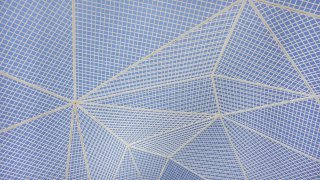
Naoshima can be enjoyed any season since it has relatively mild weather throughout the year. Summer is probably the best season to visit Naoshima if you want to enjoy the beautiful sea and lush summer plants. Spring could be another option for those who prefer mild weather and avoid the crowds during the summer vacation season! Summer is the most popular time to visit Naoshima, so if you prefer quiet time without waiting in line at the museums, visit there in winter.
Enjoy arts in Naoshima

Once you arrive at the Miyanoura Port, you will be welcomed by a symbolic piece, Red Pumpkin created by a famous Japanese artist Yayoi Kusama. It has lots of black dots on it, and is always packed with tourists to try to take pictures! Another famous pumpkin can be found in the place which is 10 minutes away by bus. Yellow Pumpkin stands silently in perfect harmony with the peaceful sea. In August 2021, Yellow Pumpkin got washed away by Typhoon No.9 and unfortunately got damaged. Currently it’s not on the exhibit but still there are many people visiting the spot on the pier where the yellow pumpkin used to be.
Yayoi Kusama has created many artworks with dot motifs and it is said that she has suffered from schizophrenia from her childhood and she kept drawing dot motifs to get away from the hallucination. These dot motifs are considered as protection from her disease and she chose pumpkins for her artworks with a message that nothing is the same, everything has different shape and size and that makes it beautiful.
Chichu Art Museum
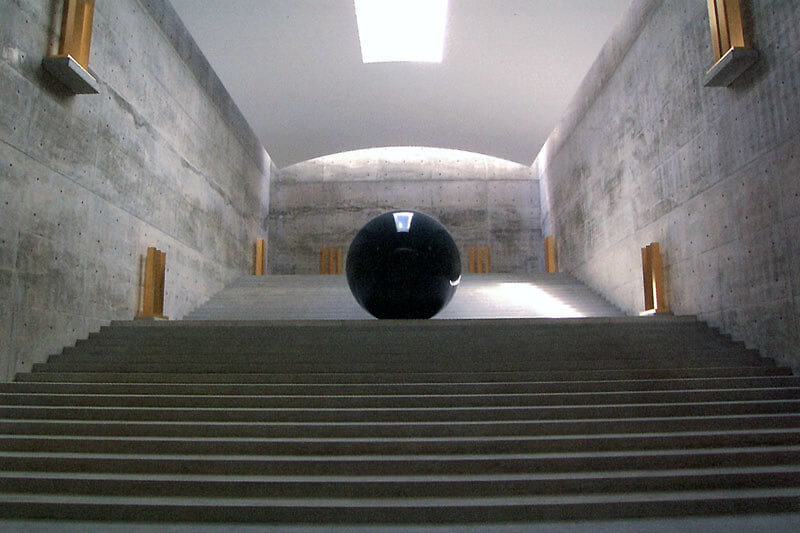
Founded in 2004, Chichu Art Museum is one of the most popular art museums in Naoshima. Most of the museum is underground, which makes it an unique structure that perfectly matches the surroundings in harmony with nature. You can enjoy stunning artworks by world-famous artists and talents such as Claude Monet, Walter De Maria, and Tadao Ando who designed this museum. Natural light coming through the modern structure helps you observe the authentic pieces with different impressions depending on time and the weather. Online reservation is required for all visitors prior to their visit.
10am – 6pm (Mar. to Sep.) 10am – 5pm (Oct to Feb.) Admissions ¥2,100 (Adults) Free admission for under 15 years old
Lee Ufan Museum
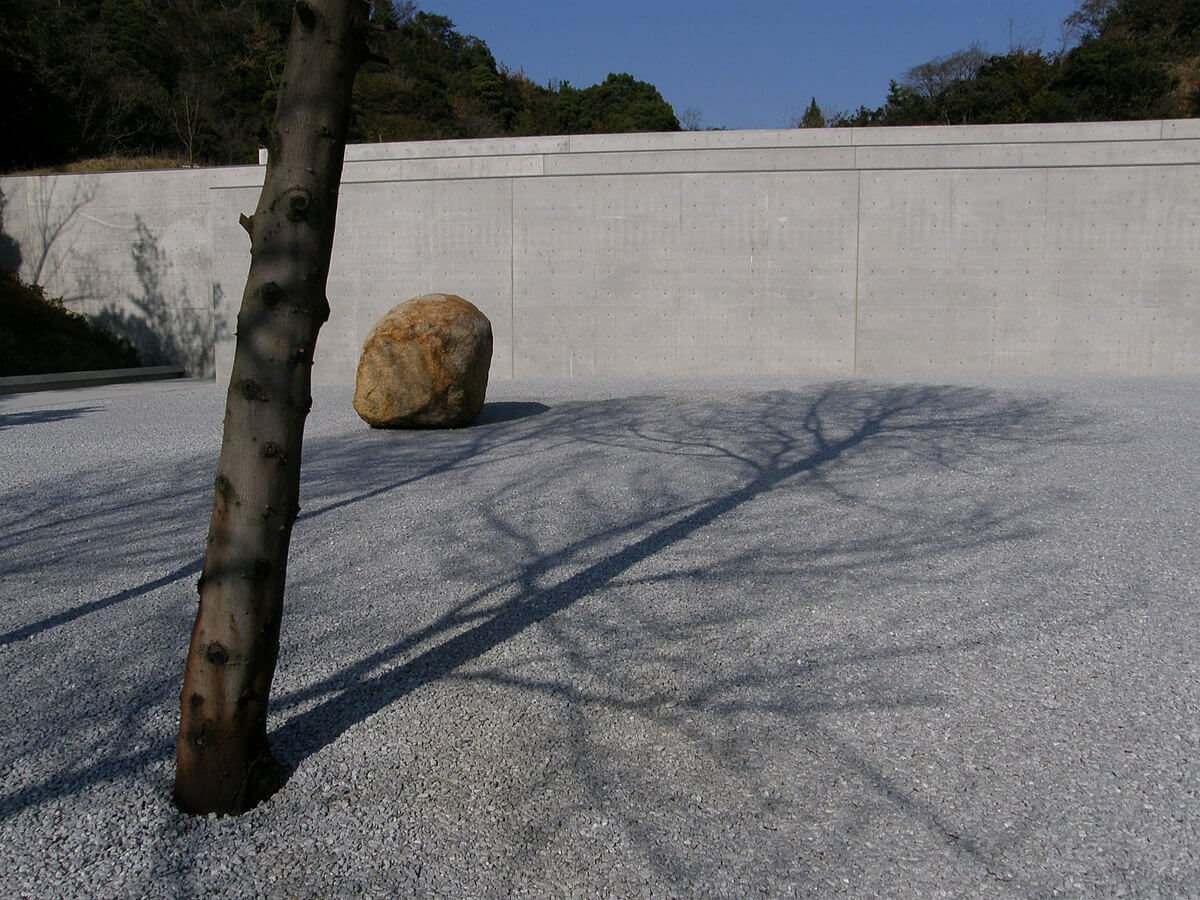
Lee Ufan Museum is another museum also designed by Tadao Ando. The simple and sophisticated design resonates with a large collection of artworks by Lee Ufan, a world-renowned artist. The stunning paintings and sculptures give us an opportunity to reconsider ourselves and the modern society through an artificial experience.
10am – 6pm (Mar. to Sep.) 10am – 5pm (Oct to Feb.) ※Closed on Monday
Admissions ¥1,050 (Adults) Free admission for under 15 years old
Benesse House Museum
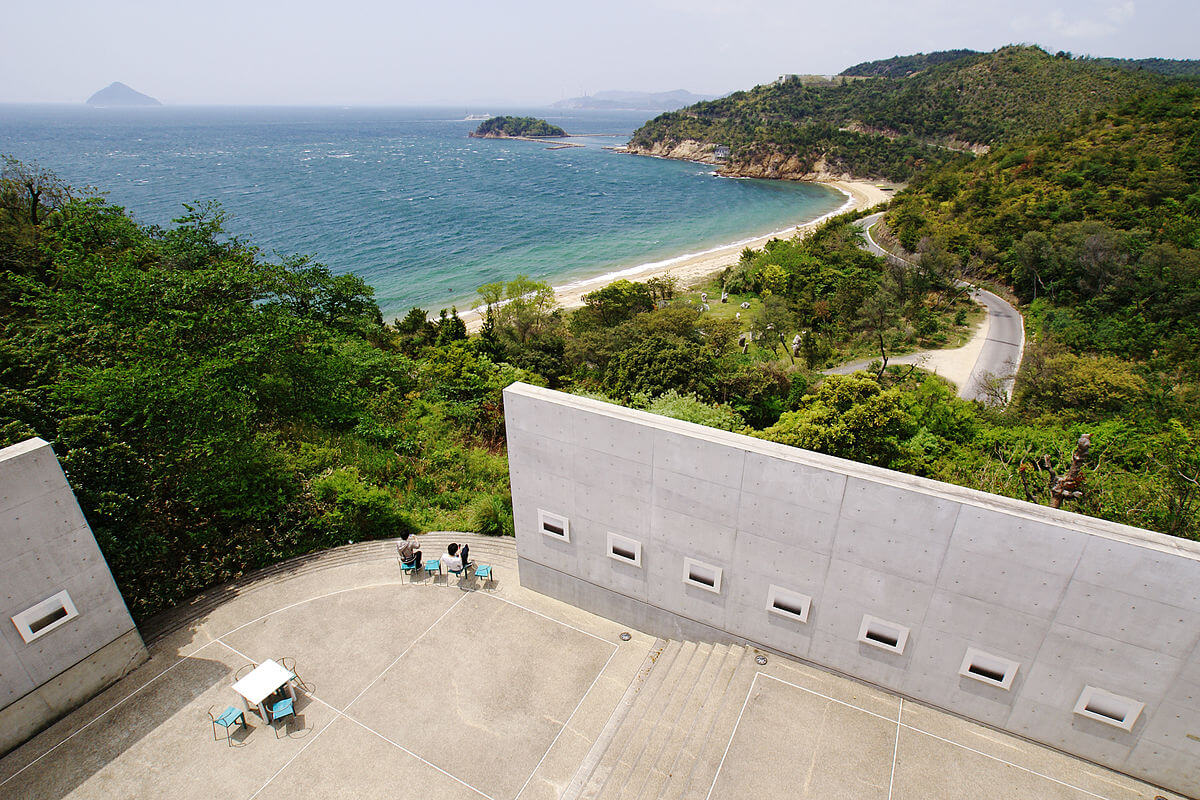
As one of the biggest and most popular museums on Naoshima, Benesse House Museum offers a range of services and experiences for tourists. Since its opening in 1992, it has been welcoming a number of tourists with a concept of “coexistence of nature, art and architecture.” You can find interesting works such as paintings, pictures, sculptures, and installations displayed everywhere even outside the building. There is a fancy Japanese restaurant and a café serving pleasant dishes at the museum too. It also plays a role as a hotel to offer comfortable accommodation for tourists as well!
10am – 6pm
Ando Museum
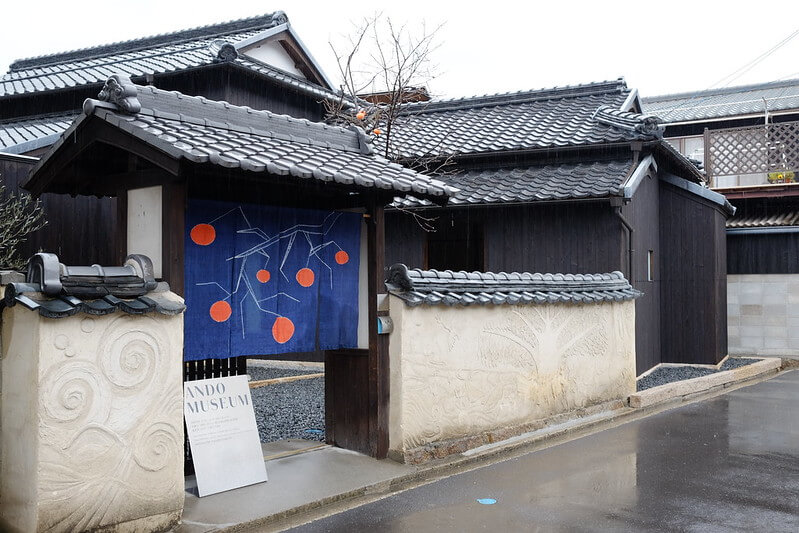
Don’t forget to check the Ando Museum which houses informative photos and sketches on Aondo’s works and achievements! It also helps you learn about the history of the island while walking around the 100-year old traditional Japanese house in Honmura village. Gokuraku-ji Temple is another must visit spot just across from the museum. It is a Shingon Sect temple dating back about 1,200 years ago. Designated as Tangible Cultural Property, it gives you a traditional experience completely different from modern museums around!
10am – 4:30pm ※Closed on Monday
Admissions ¥520 (Adults) Free admission for under 15 years old
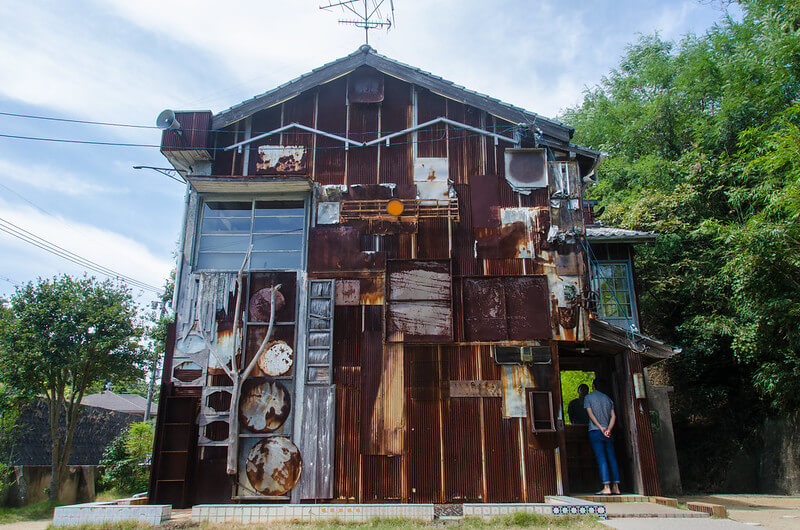
Art House Project is an unique project aiming to revitalize the island through the renovation of old houses into works of art in Honmura Village area. Started in 1998 with “Kadoya”, the first renovated location, there are currently 6 other locations including “Ishibashi”, “Haisha”, “Gokaisho”, “Kadoya”, “Go’o Shrine”, “Minamidera”, and “Kinza”. Each of them has respective features and offers a variety of benefits for both locals and tourists such as galleries and a helpful information center. It is a perfect place to enjoy artworks that can be found in harmony with the local community while exploring the historical area!

Situated in the south of the island, Gotanji Beach offers a relaxing time surrounded by nature and the beautiful sea. The sea is shallow and doesn’t get deep for a quite distance, which allows you to swim in the clear water. In summer, the Naoshima fire festival is held around the beach with more than 1,800 fireworks beautifully lighting up the sky.

Naoshima Hall is a community center designed by Hiroshi Sambuichi. The beautiful roof is completely covered with Japanese cypress, and the walls inside of the building are coated in spotless white with Shikkui, traditional Japanese plaster. The unique design enables an automatic air circulation, which means the air inside the building is replaced with fresh one regularly without electricity! The hall plays a role as a center of social community, and is used for multi-purposes such as cultural activities for local people!
Naoshima Bath “I♥︎湯”

Naoshima Bath “I♥︎湯” is an unique public Onsen designed by Shinro Otake, a famous Japanese artist. This bathhouse is decorated with fabulous artworks such as paintings and sculptures. The staff is welcoming and friendly, and you can purchase a cute designed towel with an original logo on it. It is an ideal spot to get refreshed while enjoying the fantastic art, it will be a totally different bathing experience in Japan!
1pm – 9pm ※Closed on Monday
Admissions ¥660 (Adults) ¥310(under 15 years old) Free admission for under 3 years old
If you have time: visit other art islands
Naoshima is definitely the most popular art island in Japan, but there are other islands where you can enjoy artworks in the Seto Inland Sea. Teshima is another art island which is 20 minutes away by ferry from Naoshima. Teshima Art Museum is a unique museum shaped like a water droplet falling from the sky which is designed by artist Rei Naito and architect Ryue Nishizawa. The breeze, natural light and the sound of bird chirping coming from the open ceilings, you can immerse yourself with harmony in nature at the museum. Beautiful views of the rice terrace can be enjoyed around the museum which was rebuilt when the museum was opened being a part of the project.
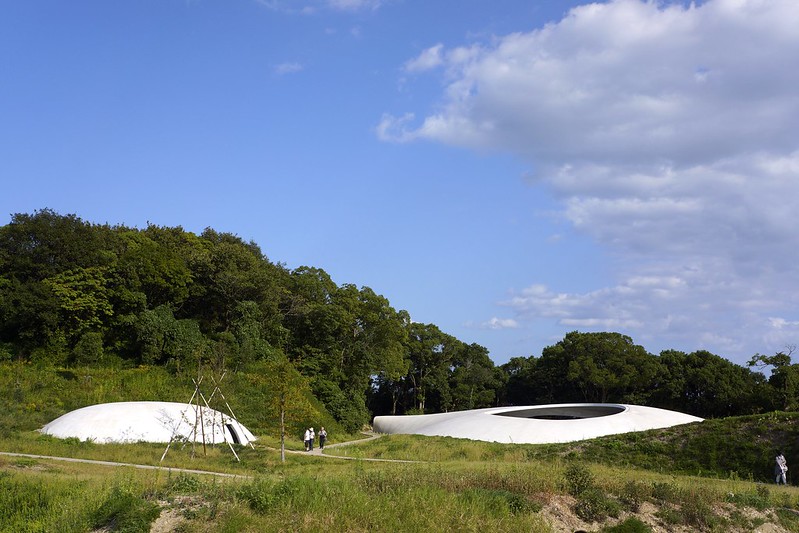
Les Archives du Cœur is another unique museum collecting the sound of people’s heartbeats from around the world created by Christian Boltanski. You can also record your own heartbeats and it will become a part of the archives.
Take a ferry from Miyaura Port to Ieura Port. You can get around the island by bus or bicycle (rental bicycle is available)
Shodoshima is another option for exploring the different art islands on the Seto Inland Sea. It will take 30 minutes to get to Shodoshima by ferry. Some artworks can be seen around Tonosho Port. Metal sculpture again… by Kim Kyoung-Min, Gift of the Sun by Choi Jeong Hwa, the golden olive leafs shaped artworks that were co-created with local elementary school students, and ART no SHOW Terminal which was renovated from the old ferry terminal to open to exhibit artworks and the event space.
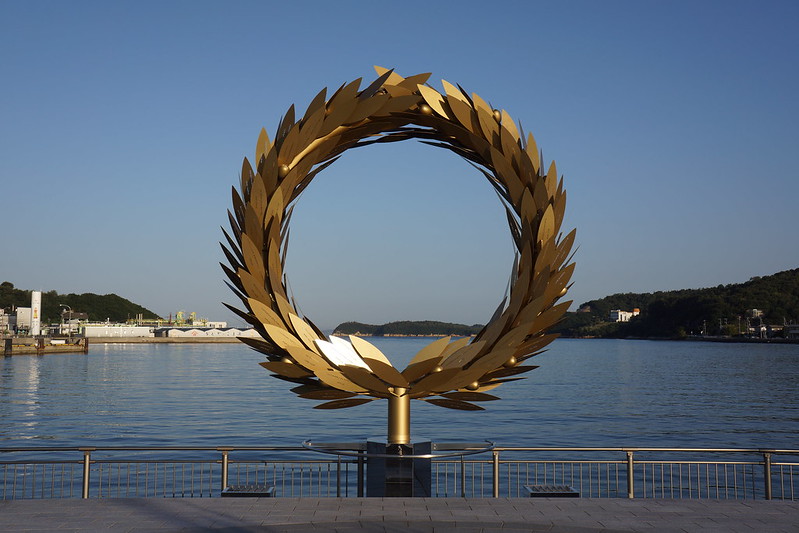
Georges Gallery is a hidden place which was renovated from the old house, it was a part of 2019 Setouchi Triennale by photographer Georges Rousse. It was one of the rare places where you can still see his artworks since his works are usually destroyed after the exhibition. The highlight is a big golden circle in the middle of the traditional Japanese room which can be seen only from a certain point.
From Karato Port (the south side of Teshima), take a ferry to Tonosho Port.
MY LODGE Naoshima ―Very comfortable room with a beautiful ocean view, this simple lodge makes you feel like staying at your friend’s place.
Guest house Roji to Akari ― Located in front of Minamidera which is one of the Art House Project, this guest house was renovated from the traditional house. Quiet area to stay.
sana mane ― Glamping resort where you can stay in a dome style tent, surrounded by mountains. In front of the tent, you can have a private beach to yourself!
Visiting a remote island will be a completely different experience from visiting only urbanized areas. Get unwind on the refreshing island while exploring the impressive museums and galleries!
Follow us on Instagram , Facebook , Twitter , and TikTok for more travel inspiration. Or tag us to get featured!
Happy traveling!
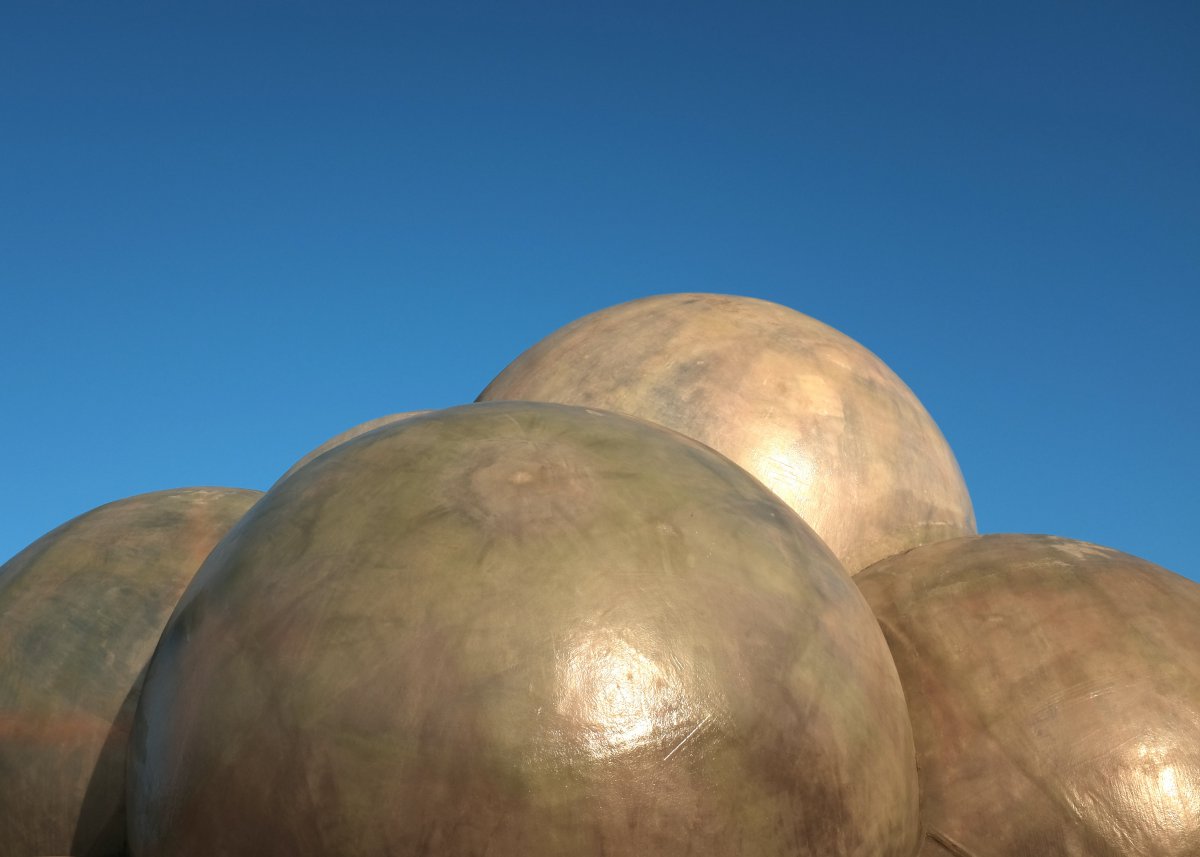
This post may contain some affiliate links. When you click through and make a purchase we may receive some commission, at no extra costs to you
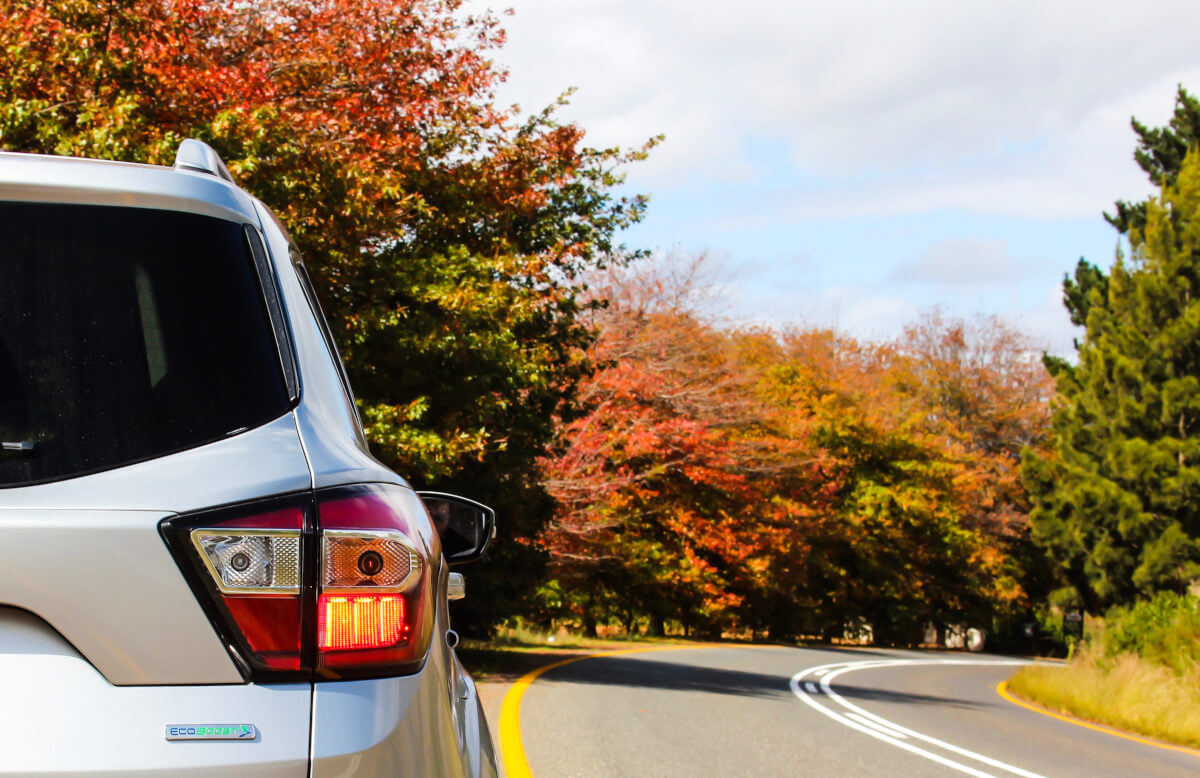
- Popular destinations
- Hidden places in Japan
- Tours and workshop
- Food and drink in Japan
- Itinerary in Japan
- Places to visit in Tokyo
- Food and drink in Tokyo
- Seasonal events
- Tours & workshops
- Tokyo This Week
- Day trip from Tokyo
- Itinerary in Tokyo
- Places to visit in Kyoto
- Food and drink in Kyoto
- Itinerary in Kyoto
- Day trip from Kyoto
- Travel tips
- Accommodation
- Cultural tips
- Transportation
- Tokyo Tours
- Kyoto Tours
- Kimono Rental
- Fukushima Tours
- Mount Fuji Tours
- Tour Package
- Media Kit(English/日本語)
REQUEST INFORMATION
Don't know which tour is suitable for you.
Let us help you. Please tell us more about your interests. We will send some suggestions based on your needs.

- Trip Finder
- Saved Tours

Japan Pottery & Art Tour

Fully Escorted

Local Cuisine

Guaranteed Departure

13-16 Nights

Deluxe-Plus

From US$8498.00
- Our California office it's now
- 03:25 AM(Mon) - We Are Close
- Tel: 1-909-988-8885 Toll free : 1-855-325-2726 (USA & CANADA)
- Whatsapp: Website Line : 1-909-818-5901

- Monday to Friday 8:30AM - 5:30PM (PST) Saturday 9:00AM - 3:00PM (PST)
Tour Highlights
- Study the history of local pottery villages on Kyushu island at Karatsu, Toho Village, Arita, Bizen, Sasebo, and Hasami.
- Meet local Japanese potters and ceramic artisans at their private studios for a first-hand introduction to regional pottery styles.
- Take part in a Kintsugi Experience and study the art of "golden joinery" which repairs broken pottery with shining lacquer.
- Stroll enchanting Japanese gardens including Ritsurin Garden, Adachi Garden, and Heian Shrine Garden.
- Visit the art galleries of Naoshima Art Island designed by famed architect Tadao Ando.
- Discover the enchanting streets of the Gion Geisha District on a Night Walking Tour.
- Find your own Japanese porcelain souvenir for a good price in Kyoto's Shinmonzen and Furumonzen Antique Streets.
- Choose either our original 14-day itinerary or a 17-day tour which includes an extension to Mount Fuji and Tokyo.

Toho Village - Sasebo - Hasami - Arita - Karatsu - Bizen - Kurashiki - Yasugi - Naoshima - Takamatsu - Kobe - Osaka - Nara - Kyoto - (Mt. Fuji - Tokyo)
13-16 Nights | From US$8498.00
Departure Months:
Our pottery and art tours celebrate the creative genius of japan on tours including pottery villages in kyushu, naoshima art island, architecture walking tours, enchanting landscape gardens, and more..
Immerse yourself in the traditional ceramics and vibrant art scene of Japan while on our Pottery and Art Tours. Japan's ceramics are celebrated the world over for an elegant simplicity in their designs; its artisans honed their craft in hidden pottery villages and private workshops across the country for over 400 years. These tours have a focus on ceramics, with visits to hidden, with visits to art galleries, architecture walking tours, and visits to beautiful landscape gardens, with an espe... View More
Immerse yourself in the traditional ceramics and vibrant art scene of Japan while on our Pottery and Art Tours. Japan's ceramics are celebrated the world over for an elegant simplicity in their designs; its artisans honed their craft in hidden pottery villages and private workshops across the country for over 400 years. These tours have a focus on ceramics, with visits to hidden, with visits to art galleries, architecture walking tours, and visits to beautiful landscape gardens, with an especial focus on ceramics, in 14-day and 17-day itineraries. Explore the pottery culture of Japan with visits to hidden pottery villages - each with their own unique ceramic styles. Tour Karatsu, home to Karatsu-ware and the ruins of a number of old-fashioned climbing kilns which produced simple, sturdy ceramics with an earthy tone. Arita (and nearby Imari) is the birthplace of Japanese ceramics, and is famed for producing elegant porcelain that was popular in 17th and 18th-century Europe. Bizen produces Bizen-ware, a kind of heavy, unglazed porcelain with a rustic appeal. We also explore Sasebo (for Mikawachi porcelain created by the "sometsuke" technique), and Hasami (known for making sturdy, affordable porcelain for common people). We visit the pottery districts of Kyoto for Kiyomizu-ware (a magnificent porcelain from the ancient capital city), and visit the historic home / workshop of one of Kyoto's foremost ceramic artists - Kawai Kanjiro. We include a Kintsugi Experience to learn the art of "golden joinery" that mends broken pottery with shining lacquer. And travelers looking to find their own treasured souvenir won't miss out: browse the Antique shops in the streets of Shinmonzen and Furumonzen. And during our extended itinerary, you will be able to explore the ceramic galleries in Tokyo's upscale Ginza district. Ceramics aside, our tours aim to immerse you in the world of Japanese art, architecture, and gardens, when visiting Naoshima Art Island, which features modern galleries created by popular architect Tadao Ando such as the Ando Museum and the Chichu Art Museum, as well as the Benesse House, a unique fusion of hotel and art gallery. You will experience the modern architecture in Osaka with a Guided Walking Tour, and we include visits to top museums like the Adachi Museum of Art and Garden, the Ohara Museum of Art, with the Nezu Museum, Kawaguchiko Muse Museum, Itchiku Kubota Art Museum, and Mori Art Museum included in the extended tour. And what is a trip to Japan without sightseeing some of the country's historic landmarks? The Golden Pavilion, Heian Shrine and Garden, the Gion Geisha District, historic Osaka Castle, the idyllic Kurashiki Canals, Kobe's classic Chinatown, gorgeous Ritsurin Garden in Takamatsu, and many more time-honored treasures are included for your enjoyment. Our Tokyo extension features even more must-sees, such as Asakusa Sensoji Temple, Hamarikyu Garden, Imperial Palace East Gardens, and views of Mount Fuji (in clear weather) from Oishi Park. Our dining and accommodation also reflect the tour's Pottery and Art theme, with such experiences as a lunch at Arita House (a Japanese restaurant using Arita-ware pottery), a meal of Kyoto cuisine with Maiko entertainment, and a couple nights at an onsen ryokan offering a traditional Kaiseki dinner. Transport for the tour is facilitated by our comfortable private coaches, and you will travel in the company of one of our knowledgeable and friendly English-speaking guides, who are on hand to help you navigate the country, and who share a passion for Japanese traditional pottery and art. For more information, please feel free to browse the detailed itineraries for our Japan Pottery and Art Tours.

2 trips through Japan

Japan Pottery, Garden & Art Tour
Toho Village / Sasebo / Hasami / Arita / Karatsu / Bizen / Kurashiki / Yasugi / Naoshima / Takamatsu / Kobe / Osaka / Nara / Kyoto
14 Days 13 Nights | from US $8598.00 (Limit to 12 guests)
Find inspiration during a 14-day Japan Pottery, Garden, and Art Tour stopping in small pottery villages, breathtaking Japanese landscape gardens, and captivating art exhibits.

Japan Pottery, Garden & Art Tour with Tokyo Extension
Toho Village / Sasebo / Hasami / Arita / Karatsu / Bizen / Kurashiki / Yasugi / Naoshima / Takamatsu / Kobe / Osaka / Nara / Kyoto / Mt. Fuji / Tokyo
17 Days 16 Nights | from US $9998.00 (Limit to 12 guests)
For travelers looking for a longer Japan Pottery, Garden, and Art Tour, join this 17-day tour that features immersive Japan ceramics experiences, art, architecture, and gardens, with an exciting extension to Mount Fuji and Tokyo!
Why Travel on Our Group Tours
Lorem Ipsum is simply dummy text of the printing and typesetting industry. Lorem Ipsum has been the industry's standard dummy text ever since the 1500s, when an unknown printer took a galley of type and scrambled it to make a type specimen book.
Best Itinerary
Planned by experts, based on seasonal favorites and must-see sites.
Budget-friendly
Choose your style and split cost with other passengers
Hand-picked Accommodations
Chosen by our experienced staff
Fully Guided
Guide is available to you 24/7 and sleeps in the same hotel
Unique experiences
Learn to create your own Sushi, meet a geisha or maiko, and more
Meet locals and visit rural areas of Japan you might miss on other tours
Travel Styles
Spring Tours (Mar - May)
Summer Tours (Jun - Aug)
Autumn Tours (Sep - Nov)
Winter Tours (Dec - Feb)
Cherry Blossom Tours
Autumn Leaves Tours
Festival Tours
Special Interest Tours
Best Japan Tours
Tours for First Timers
Tours for Repeaters
Family Friendly Anime Tours
Anime Tours
Small Group Tours
Luxury Small Group Tours
Small Group Departures
Walking Tours
Seasonal Flowers Tours
Art & Architecture Tours
Photography Tours
Birding & Wildlife Tours
Garden Tours
Pottery Tours
Japanese Ancestry Tours
Pre & Post Cruise Tours
Starting City
Sapporo to Sapporo
Sapporo to Kushiro
Sapporo to Tokyo
Sapporo to Osaka
Sapporo to Fukuoka
Sapporo to Okinawa
Kushiro to Kushiro
Kushiro to Memanbetsu
Tokyo to Sapporo
Tokyo to Tokyo
Tokyo to Kyoto
Tokyo to Osaka
Tokyo to Hiroshima
Tokyo to Fukuoka
Tokyo to Okinawa
Tokyo to Seoul
Tokyo to Kushiro
Kyoto to Tokyo
Kyoto to Kyoto
Kyoto to Osaka
Osaka to Sapporo
Osaka to Tokyo
Osaka to Osaka
Osaka to Kotohira Onsen
Osaka to Fukuoka
Osaka to Okinawa
Fukuoka to Sapporo
Fukuoka to Tokyo
Fukuoka to Osaka
Fukuoka to Fukuoka
Fukuoka to Okinawa
Seoul to Tokyo
Taipei to Tokyo
Beijing to Tokyo
Hong Kong to Tokyo
5 Day Japan Tours
6 Day Japan Tours
7 Day Japan Tours
8 Day Japan Tours
9 Day Japan Tours
10 Day Japan Tours
11 Day Japan Tours
12 Day Japan Tours
13 Day Japan Tours
14 Day Japan Tours
15 Day Japan Tours
16 Day Japan Tours
17 Day Japan Tours
18 Day Japan Tours
19 Day Japan Tours
20 Day Japan Tours
21 Day Japan Tours
22 Day Japan Tours
Departure Month
Japan Tours in January
Japan Tours in February
Japan Tours in March
Japan Tours in April
Japan Tours in May
Japan Tours in June
Japan Tours in July
Japan Tours in August
Japan Tours in September
Japan Tours in October
Japan Tours in November
Japan Tours in December
Hokkaido Tours
Tohoku Tours
Kanto Tours
Chubu Tours
Kansai Tours
Shikoku Tours
Chugoku Tours
Kyushu Tours
Okinawa Tours
Must-See Cities
Kiso Valley
Sado Island
Akan National Park
Shirakawago
Kinosaki Onsen
Seasonal Attractions
Sanja Festival
Cherry Blossom Viewing at Yoshinoyama
Sendai Aoba Festival
Cherry Blossoms
Cherry Blossoms in Hokkaido
Cherry Blossoms in Tohoku
Cherry Blossom Festival at Matsumae Park
Cherry Blossom Festival at Ueno Park
Cherry Blossoms at Maruyama Park
Cherry Blossoms & Azaleas at Mifuneyama Rakuen
Shibazakura Festivals
Shibazakura Festivals of Hokkaido
Fuji Shibazakura Festival
Great Wisteria at Ashikaga Flower Park
Baby Blue Eyes Flowers at Hitachi Seaside Park
Takayama Spring Festival
Kyoto Aoi Festival
Tateyama Kurobe Alpine Route
Miyako Odori
Tenjin Festival
Tohoku 3 Great Summer Festivals
Aomori Nebuta Festival
Akita Kanto Festival
Sendai Tanabata Festival
Gion Summer Festival
Awa Odori Dance Festival
Lavenders in Hokkaido
Tanabata Fireworks
Karatsu Kunchi Festival
Jidai Festival
Jingu Gaien Ginkgo Avenue
Lake Kawaguchi Momiji-Kairo
Autumn Leaves
Takayama Autumn Festival
Obara Shikizakura Festival
Japan Winter Festivals
Sapporo Snow Festival
Lake Shikotsu Ice Festival
Asahikawa Winter Festival
Sounkyo Ice Waterfall Festival
Ice Breaker Cruise
Wakasagi Smelt Fishing
Kawazu Cherry Blossom Festival
Things Not to Miss
Hakone Open-Air Museum
Gion Geisha District
Kyoto Cuisine with Maiko
Green Tea Ceremony
Shikoku Pilgrimage Route
Takayama Festivals
Green Tea Ceremony with Maiko Interaction
Sushi-Making Experience
Tokyo SkyTree
Ghibli Museum
Kiyomizu Temple
Kenrokuen Garden
Hikone Castle
Zen Meditation (Zazen)
Calligraphy Lesson (Shodo)
Ikebana Lesson (Flower Arrangement)
Kimono Experience
Taiko Lesson
Dotonbori Street Food Tour
Nakasendo Hike
Ise Grand Shrine
Shiretoko Nature Cruise
Seikan Undersea Tunnel
The Omiya Bonsai Art Museum
Asakusa Sensoji Temple
Kinkaku-ji Temple (Golden Pavillion)
Todaiji Temple
Fushimi Inari Shrine
Miho Museum
Koka Ninja Mansion
Mikimoto Pearl Island
Himeji Castle
Izumo Grand Shrine
Naoshima Island
Gunkanjima Island
Mt Takasaki Monkey Park
Matsumoto Castle
Tokyo Tower
Snow Monkeys
Most Beautiful Places in Japan
Otaru Snow Light Path
Arashiyama Bamboo Forest
Kurashiki Canal Area
Miyajima Island
Shimanami Kaido
Takeda Castle
Motonosumi-Inari Shrine
Adachi Museum of Art
Takachiho Gorge
Oirase Stream
Tottori Sand Dunes
Wisteria Tunnel at Kawachi Fuji Gardens
What our customers say
4.9 stars based on 518 REVIEWS
We had a great tour guide (Miharu). Very sweet and knowledgeable she gave us alot of history but also insight into Japanese culture. It was an amazing experience with so many different places and activities.
We gained great appreciation for the culture and history of Japan through the sites we visited. The transportation was comfortable and convenient, and our guide, Trend, was outstanding, knowledgeable and entertaining. The accommodations were terrific, and it was so convenient to have two meals included each day. We enjoyed every aspect of the tour and we'd highly recommend it to others!
This tour was amazing with everything so well organized. The transportation was comfortable, accommodation was great (pretty much got 4-star hotels) and all the important touristy places were covered. It'd be hard for anyone to do the same itinerary on their own for sure. My fav. aspect of the tour is that it was not rushed and had ample time at each of the spots making it more enjoyable. Most importantly, our guide TREND was brilliant. She did an excellent job in taking care of the group, keeping it entertaining and educative. She always ensured we were all comfortable everywhere and especially in the restaurants where the menu was hard to understand given I had dietary restrictions leaving few choices. I'd recommend this tour to anyone who is looking for the highlights of Japan.
We had a wonderful tour.
We had a trip of a lifetime! Our guide Joyce and driver, Yokomi-san were very professional and timely. We will miss them! They were very friendly and ensured our children (11 and 14) had an incredible experience! Joyce was very knowledgeable and provided a lot of information about the sites we were seeing, made sure we had our tickets and did not lose anyone. We had plenty of time at each attraction to walk around, get snacks and use facilities - we never felt rushed or that we were wasting time. Sadly, there was too many clouds at Hakone to see anything. We had spent a lot of time riding to get there and saw nothing, so we ate the black egg and took photos, which was still memorable. The onsen hotel is the most beautiful hotel ever! We enjoyed using the family onsen and the kaiseki dinner.
Don't know which tour is best for you? Let us help you.
- Request Information
- share trip finder saved tours inquiry book now

Email Signup
Boutique Japan
Luxury Japan: Art, Culture & Cuisine (11 Days)
A luxurious 11-day itinerary featuring several of Japan’s most worthwhile destinations including the Tokyo metropolis, historic Hiroshima and Miyajima, the art island Naoshima, the ancient capital Kyoto, and the beautiful Hakone National Park in the shadow of Mount Fuji.
Let us create your trip completely from scratch.
Our sample itineraries are here to inspire, but this is not a fixed itinerary and is designed to be customized around you.
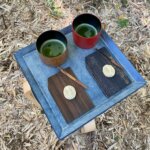
Catherine and Paul, Australia
We had a truly wonderful time in Japan. Lots of people have asked what was the highlight and it really is hard to pick one, or even a few. We really enjoyed the Tsukiji market, the visit to Yanaka, the Kiyosumi Garden, all the gardens in Kyoto, the evening in Osaka, the lunch with the… Read More
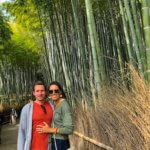
Ally Vain & Chris Tillotson, Dallas
Boutique Japan brought our dream Honeymoon Trip to life. My husband and I visited Japan to celebrate our Honeymoon and the experience Boutique Japan provided for us was more than we could have imagined. I cannot reiterate enough, we could not have done this without them! The staff was extremely responsive, professional and accommodating every… Read More
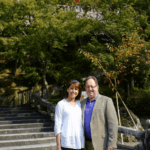

Lyn & Peter, Australia
We are very experienced, independent, international travelers but we found trying to plan and book a personalised holiday in Japan in late 2015 to be very challenging. That is until we discovered the wonderful team at Boutique Japan. After describing our areas of particular interest in art, architecture, culture and fitness, Andres and his team… Read More

Andra Smith, Connecticut
We absolutely loved our trip. I fell in love with Tokyo and am secretly hoping I can convince my sister or friend to visit soon so I can go with them to see more of the neighborhoods we missed this time around. Each guide was very, very well-matched with the type of tour they gave.… Read More
Sample Trip Highlights
Designed for high-end travelers in search of a unique Japan luxury travel experience, this sample trip features an array of Japan’s most essential and worthwhile destinations:
- An immersive private itinerary, crafted with love by Boutique Japan
- Tokyo , one of the world’s most exciting cities
- Kyoto , the heart and soul of traditional Japan
- Hakone National Park in the shadow of Mount Fuji
- Historic Hiroshima and the UNESCO-recognized Miyajima Island
- Stunning art and architecture on Naoshima , including a stay at Benesse House
- All your accommodations, in boutique and luxury hotels and ryokans to match your taste and priorities
- Unique private tours and experiences with fun and knowledgeable local experts
- Seamless logistics and in-country transport via the shinkansen (bullet train) and more
- Extensive pre-departure information to help you prepare for your trip
- Access to our in-depth Japan expertise, relationships, and firsthand experience
- A Japan specialist to answer your questions, and thoughtful customer service

Itinerary Overview
Fly into either of Tokyo’s airports, Narita (NRT) or Haneda (HND).
This sample itinerary can also be customized to begin in the Kansai region (where Kyoto and Osaka are located), flying into either of Osaka’s two major airports, Kansai (KIX) or Itami (ITM).
Day 1: Arrive in Tokyo, Japan Day 2: Modern Tokyo Highlights & Evening Sake Tasting Day 3: Sushi-Making Master Class & Old Tokyo Stroll Day 4: Shinkansen (Bullet Train) to Hiroshima & Private Peace Memorial Park & Museum Tour Day 5: Private Tour of Miyajima Island Day 6: Visit Naoshima, Japan’s Renowned Art Island Day 7: Morning on Naoshima & Travel to Kyoto Day 8: Unique Highlights of Kyoto (On & Off The Beaten Path) Day 9: Fushimi Inari Shrine & Luxurious Ryokan Stay in Hakone Day 10: Morning in Hakone & Afternoon Sumo Basho (Tournament) Day 11: Depart Japan
Depart from either of Tokyo’s airports, or customize this trip to end with departure from Osaka or elsewhere in Japan.
Itinerary Details
Day 1: arrive in tokyo, japan.
Welcome to Japan! On arrival in Tokyo, you’ll be met and transferred by private vehicle to your luxurious accommodations.
Depending on your flight’s scheduled arrival time we typically recommend keeping your first evening free, both in case of unexpected flight delays, and also to account for possible fatigue from the long journey.
Settle in, adjust to your exciting new surroundings, and get ready for your adventure ahead!
Your Tokyo hotel : Palace Hotel Tokyo or Aman Tokyo
Day 2: Modern Tokyo Highlights & Evening Sake Tasting
Ohayou gozaimasu (good morning)!
Today is your first full day to begin taking in the Tokyo metropolis. You’ll begin with an immersive half-day tour introducing you to the city, and end with a fun and fascinating sake tasting.
After a delicious breakfast at your luxurious hotel, you’ll be met by your insightful private guide. While Tokyo can certainly be enjoyed without a guide, exploring with a fun and knowledgeable expert by your side will dramatically enhance your experience.
At Boutique Japan, we have exceedingly high standards when it comes to private guides, and carefully design each private tour to cater to your unique priorities and interests.
Tokyo is one of the world’s liveliest cities, full of amazing restaurants, beautiful gardens, stunning modern architecture, charming backstreets, and a glittering neon-filled cityscape. Beyond the city lights and crowds, Tokyo is also full of quiet neighborhoods where you’ll find locals going about their daily lives, and countless hidden gems in the form of unsung yet wonderful little shops and restaurants.
Explore notable districts such as (for example) Omotesando, Aoyama, Ginza, Daikanyama, and Shinjuku; along with one or more peaceful museums, shrines, or gardens such as the Nezu Museum, Meiji Jingu Shrine, and Shinjuku Gyoen National Garden (explore more of our favorite Tokyo neighborhoods ).
Following your private tour, you’ll have some time to relax at your beautiful hotel and recover from any remaining jet lag you may have, or continue exploring independently. For your free time, you’ll be able to take advantage of the pre-departure materials we provide to each of our travelers.
This evening you’ll drink and dine with a Tokyo-based sake expert, who will immerse you in the fascinating world of sake ( nihonshu in Japanese) . Your guide will take you to a small, authentic restaurant specializing in cuisine that pairs perfectly with sake. As you enjoy a selection of small plates, you’ll be guided through a tasting of some of the best and most unique sake in the country.
If Japanese whisky is more your thing, we can arrange a private tour of incredible Tokyo whisky bars instead.

Day 3: Sushi-Making Master Class & Old Tokyo Stroll
Begin the day with the once-in-a-lifetime opportunity to learn how to make sushi from a true expert. Your private teacher this morning is a master sushi chef who will give you an introduction to the basics of making traditional Edo-style (Tokyo-style) sushi.
As part of this behind-the-scenes experience, you’ll spend an unforgettable morning at your chef’s authentic sushi-ya (sushi shop), working with wonderful ingredients. Along with everything you’ll learn, your morning concludes with a beautiful sushi lunch prepared by you and your chef.
Find more culinary inspiration at Tokyo’s best sushi restaurants .
After some time at leisure, this afternoon you’ll venture to the historic shitamachi districts of Tokyo.
Begin in Yanaka, one of Tokyo’s most well-preserved historical districts, and an up-and-coming area for young creatives. It was largely spared during World War II, and today is home to quaint streets, small temples and shrines, and a plethora of traditional shops selling Japanese sweets, rice crackers, paper, and other goods. Yanaka is also home to galleries, such as the renowned SCAI the Bathhouse.
From Yanaka, walk to nearby Ueno, a bustling yet old-fashioned district best known for Ueno Park, which is home to various museums including the excellent Tokyo National Museum. You’ll come upon Ameyoko-cho, a boisterous outdoor marketplace where you can find everything from groceries and clothing shops to open-air yakitori stalls and more.
End with an early evening stroll through the backstreets of Asakusa, Tokyo’s best-known historical district. After taking in Senso-ji, Tokyo’s oldest and most famous temple, wander with your expert guide into the area’s off-the-beaten-path side streets, which remain full of atmosphere and hidden gems.

Day 4: Shinkansen (Bullet Train) to Hiroshima & Private Peace Memorial Park & Museum Tour
Enjoy a final morning free in Tokyo with the chance to visit Tokyo’s Tsukiji Market if you wish. While the wholesale section of the fish market moved to Toyosu in 2018, Tsukiji’s lively outer market remains an incredible place to immerse yourself in Japanese cuisine.
When it’s time to depart, you’ll be picked up at your hotel for your private transfer to Tokyo Station. Before leading you to your train, your guide will help you find beautiful bento box lunches to enjoy on the journey (major train stations in Japan offer an astounding variety of delicious seasonal bentos).
Then you’ll be escorted right to your departure platform for your first experience on Japan’s remarkable trains . Today you’ll be speeding west through central Japan via Japan’s iconic shinkansen (bullet train), a wonderfully pleasant way to travel. For all long-distance trains during your trip, you’ll be in the first class “Green Car.”
On arrival in Hiroshima, you’ll be met by your expert local guide.
Hiroshima is most famous as the site of one of two atomic bombs dropped on Japan by the USA at the end of the Second World War. The Peace Memorial Park, in the very heart of the city, is the best place to learn about Hiroshima’s devastating yet inspiring story. A short walk across the lovely park from the sobering sight of the iconic Atomic Bomb Dome, you’ll come to the excellent and informative Hiroshima Peace Memorial Museum.
After reliving the horrors of 1945 you’ll see that Hiroshima’s present is much brighter. Despite its tragic past, Hiroshima today is a lively and appealing city, with wonderful food and friendly, outgoing people.
While in Hiroshima, you can choose to stay in the city of Hiroshima itself, or in the neighboring island of Miyajima.
Your Hiroshima hotel or Miyajima ryokan : Sheraton Grand Hiroshima or Kurayado Iroha

Day 5: Private Tour of Miyajima Island
Today you’ll have the chance to explore the scenic Miyajima Island, easily accessible from Hiroshima by ferry, tram, and train.
Miyajima is best known for its iconic Itsukushima Shrine, a UNESCO World Heritage Site that appears to be floating in the sea at high tide. At low tide, you can walk right up to the imposing torii gate for a fascinating up-close perspective.
Along with the impressive and photogenic shrine, Miyajima has plenty to offer, including the beautiful Daisho-in Temple, and Mount Misen with its various hiking trails. The quaint central lanes of Miyajima are lined with old-fashioned shops and stalls selling souvenirs and local specialties including oysters (best in winter ) and sake.
Enjoy an evening at leisure and dinner at one of Hiroshima’s many lively izakayas .

Day 6: Visit Naoshima, Japan’s Renowned Art Island
Today you’ll travel to the art island, Naoshima, a must-visit destination for art and architecture lovers. The island offers a truly beguiling combination of beautiful natural scenery, charming fishing villages, and cutting-edge modern art and architecture that blend into the coastal landscape.
The journey to Naoshima is rather easy, with a smooth ride on the shinkansen, an effortless private transfer to the tiny Uno Port, and a short ferry across to the island. As a guest of the one-of-a-kind Benesse House, which doubles as a hotel and museum, you’ll have access to the convenient hotel shuttle making the rounds of the island’s various art sites.
Enjoy the full afternoon taking in the island’s museums, galleries, and installations. Among Naoshima’s many highlights are the stunning Chichu Art Museum, the Art House Project, the Lee Ufan Museum, and Benesse House itself (fans of Japanese architect Tadao Ando will be particularly delighted).
You’ll spend the night at the Ando-designed Benesse House, which overlooks the Seto Inland Sea. Guest rooms in each of the hotel’s unique buildings (Museum, Oval, Beach, and Park) feature different works of art, and — among other perks — guests of the hotel enjoy special after-hours access to Benesse House Museum.
Enjoy a peaceful evening in the laid-back Setouchi region of Japan.
Your Naoshima hotel : Benesse House
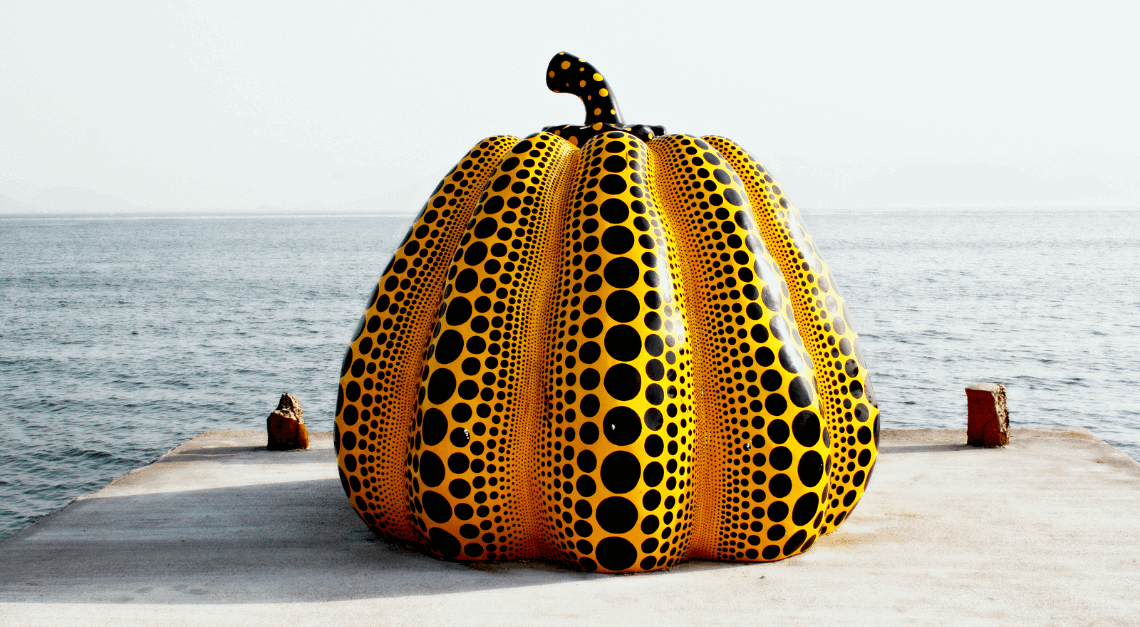
Day 7: Morning on Naoshima & Travel to Kyoto
You’ll have a full morning on Naoshima before making the easy trip to Kyoto this afternoon.
If you have the flexibility to add a day to your trip, we recommend an extra night on Naoshima to continue exploring the island and consider a side trip to nearby Teshima Island, home to the incredible Teshima Art Museum .
This afternoon you’ll retrace your steps by ferry and private transfer, followed by a pleasant ride on the shinkansen to Kyoto. On arrival at Kyoto Station, you’ll be met and escorted to your luxurious hotel.
Kyoto is one of the most culturally rich cities in the world, and the place most travelers dream of when envisioning Japan. Home to 17 UNESCO World Heritage sites, Kyoto was the capital of Japan for over a thousand years and remains the heart and soul of traditional Japan.
Today it is a large modern city of over a million residents, and at first glance looks almost like any other Japanese town. But the city retains many of its long-established traditions, and despite the neon and concrete prevalent in many parts of town, Kyoto is teeming with beautiful and well-preserved pockets where time seems to move more slowly.
In the early evening, you’ll head out on a fascinating private walking tour through the backstreets of Kyoto’s best-known geisha district, Gion.
As you slowly meander your way through the narrow lanes and hidden alleys of this enigmatic district, your expert guide will teach you about the history and reality of Kyoto’s geiko (as geisha are called in Kyoto) and maiko (apprentice geisha). This is a great way to learn about Japan’s most misunderstood traditional profession, and it’s likely you’ll come across geiko or maiko en route to their evening appointments.
Your Kyoto hotel : The Ritz-Carlton, Kyoto or Four Seasons Kyoto

Day 8: Unique Highlights of Kyoto (On & Off The Beaten Path)
Kyoto is full of famous sights, but to experience the city on a deeper level it’s also essential to spend time wandering off the beaten path.
No trip to Kyoto would be complete without visiting some of its remarkable temples, shrines, and gardens. For your time in the ancient capital, you will have the chance to take in an exceptional selection of Kyoto’s gems, carefully curated around your unique priorities and interests.
Explore Kyoto highlights such as (for example) the historic Higashiyama district, the charming Philosopher’s Path, and the picturesque Arashiyama district, along with off-the-beaten-path strolls through lesser-known Kyoto areas with your expert guide.
Kyoto is also rightly renowned for its cuisine and artisans. The colorful Nishiki Market is crowded but a must-visit for food and market lovers. For travelers interested in the arts and traditional crafts, the chance to visit with a shokunin (master craftsperson) in their private workshop is an unforgettable experience.
Beyond the extraordinary sights and wealth of traditional culture, Kyoto is also home to a booming creative scene, and throughout the ancient capital you’ll also find stunning modern design in museums and galleries, along with shops and cafes.
Following your private tour you’ll have the remainder of your day to relax at your lovely hotel, or continue exploring independently making use of the pre-departure materials we provide to each of our travelers.

Day 9: Fushimi Inari Shrine & Luxurious Ryokan Stay in Hakone
This evening you’ll have a sublime ryokan experience, but before leaving for Hakone you’ll have one last adventure in Kyoto.
An early start is necessary, as you’ll be visiting Fushimi Inari Taisha, one of Japan’s most famous sightseeing spots. Fushimi Inari is worth visiting even for people who generally avoid “touristy” places, and the easiest way to avoid crowds is by arriving early!
In the early afternoon you will leave Kyoto behind and travel to Hakone National Park. Hakone is a mountainous area just outside of Tokyo, best known for its luxury ryokans, soothing onsen (hot springs), and — on clear days — stunning views of the iconic Fujisan (Mount Fuji).
Hakone is one of our favorite places to experience a luxury ryokan in Japan.
Following the easy trip from Kyoto via shinkansen, you’ll be met on arrival and transferred by private vehicle to your ryokan for a chance to settle into your relaxing Japanese-style surroundings.
There is nothing quite like staying at a ryokan (traditional Japanese-style inn) . Before dinner, enjoy a soak in the healing onsen (hot springs). Dinner tonight will be a magnificent kaiseki feast featuring seasonal and local specialties.
Your Hakone ryokan : Gora Kadan or Yama no Chaya

Day 10: Morning in Hakone & Afternoon Sumo Basho (Tournament)
Early morning at leisure to relax in your calming Japanese-style surroundings. Have a soak in the onsen, followed by a beautiful Japanese breakfast.
Alternatively, spend the morning exploring Hakone. In addition to ryokan-style rejuvenation, Hakone offers plenty to see and do. A fun and lighthearted way to explore the area is along Hakone’s famous sightseeing loop, which traverses the region via scenic mountain train, funicular railway, gondola, and a cruise across Lake Ashi. Another Hakone highlight is The Hakone Open-Air Museum , which features sculptures by Rodin, Miró, and Noguchi (among many others) set against the region’s beautiful landscape.
In the early afternoon you’ll return to Tokyo just in time to attend sumo. From Hakone it’s an easy trip to nearby Tokyo via rail and private transfer.
Sumo is one of Japan’s most traditional sports, and basho (tournaments) are held just six times each year (learn more in our article, Sumo in Japan: When, Where & How To See Sumo ).
The chance to attend a sumo basho is both exciting and a fascinating cultural experience. In the late afternoon when the highest-ranked sumo wrestlers begin facing off, the atmosphere in Tokyo’s Ryogoku Kokugikan sumo arena is electric.
If your travel dates don’t overlap with a sumo basho, not to worry! Attending a morning sumo practice can also be a fun and fascinating option.
Following your sumo experience, you’ll have the evening free. Enjoy your final night in Tokyo!
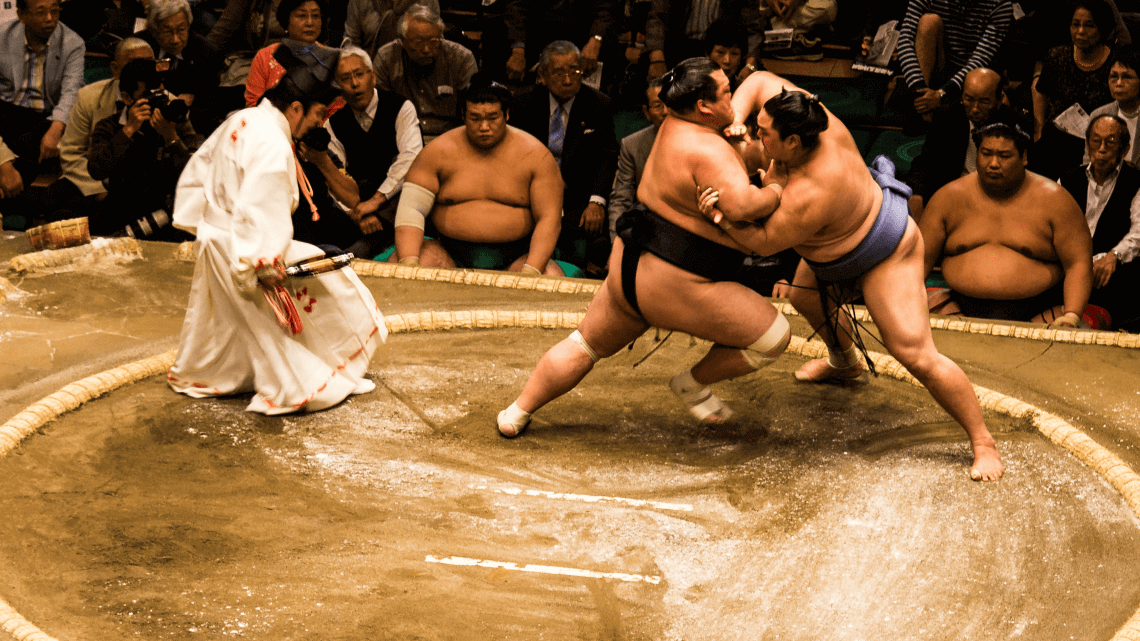
Day 11: Depart Japan
You’ll be free until departure. Depending on your flight time, you may have time for some last-minute explorations (and eating!).
In good time for your departure flight, you’ll be picked up at your accommodations for the comfortable private transfer to your departure airport.
Come back to Japan soon!
Plan Your Japan Trip
Learn more and contact us to discuss your unique trip.
Get Started
- The Process
- Testimonials

Hortense Travel
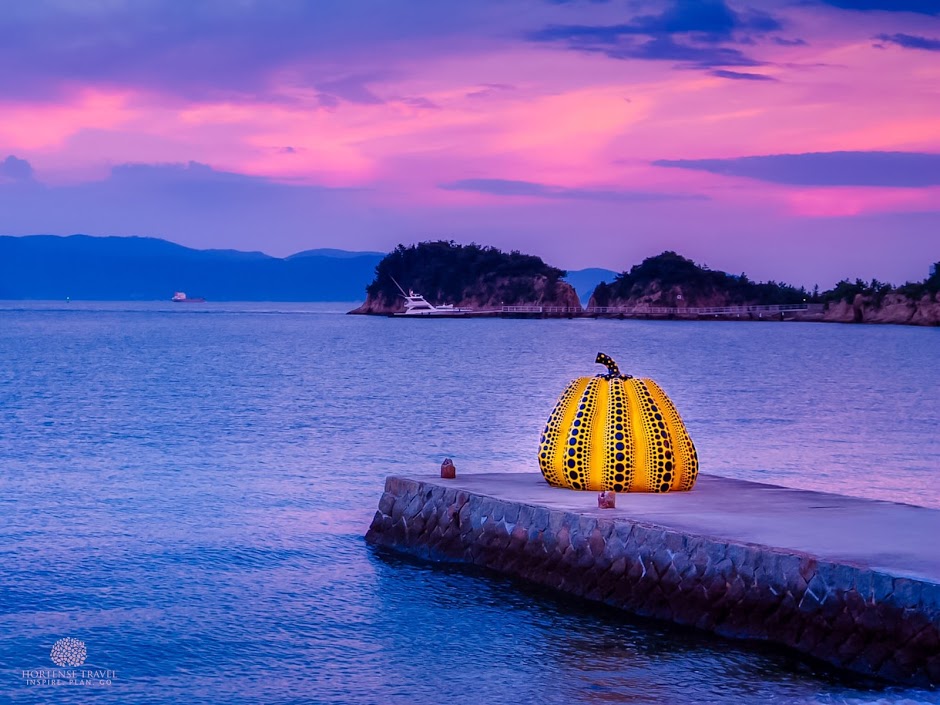
Art Islands Japan: Amazing Naoshima, Teshima & Inujima
Every time you think Japan is done with the surprises, you discover a new facet that turns heads. Within the thousands of islands in the Seto Inland Sea lies a surreal coven of art – sleek museums, outdoor art installations, and innovative architectural gems have carved out an open-air gallery over the span of three islands. What was once a remote and sleepy cluster of islands has transformed accordingly to an art-loving Japanese businessman’s vision, now a trending destination for curious travelers and art aficionados alike.
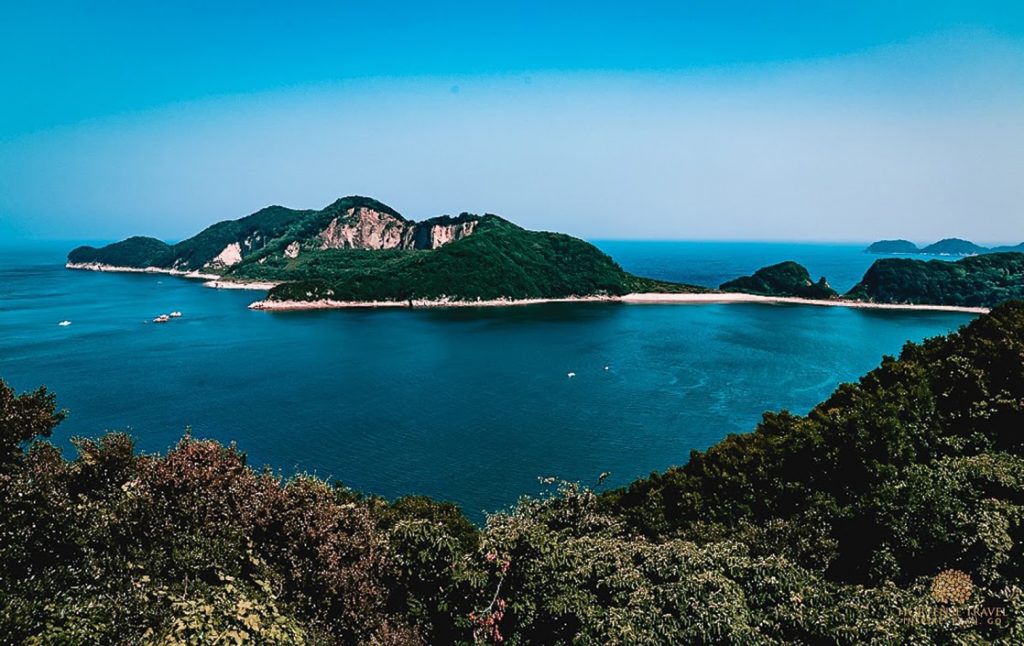
Billionaire Soichiro Fukutake was the first to recognize the potential of this island trio in the 1980s – a project collectively referred to as Benesse Art Site Naoshima – by taking what were once refineries and an illegal waste dump and rebooting the space as criticism and reflection of encroaching industrialism. Architect Tadao Ando had a heavy hand in the creation process, collaborating on the famous Benesse House Museum, Chichu Art Museum, and more art galleries. These art islands may very well have kick-started the trend of urban repurposing of abandoned buildings; except these cutting-edge museums are embedded within the nature-scape, not taking over it.
How to get there
Islands are by nature somewhat difficult to get to. Here’s a breakdown of how to reach Naoshima in three easy steps.
1) Take the Shinkansen (bullet train) to Okayama Station

Okayama Station is easily accessible via Shinkansen from Tokyo , Osaka , Kyoto , and Hiroshima. Depending on which city you’re traveling from, you have a couple of train route options such as the Sakura train, Kodama and Hikari. Tokyo is by far the furthest – it’ll take you 4 hours by the Hikari train line. Kyoto also isn’t the most direct option as you’ll have to transfer trains at Shin-Osaka Station. It takes between 46 minutes and 77 minutes to reach Okayama from Osaka and between 40 minutes and 81 minutes from Hiroshima depending on which train route you take.
2) Take a train or bus to Uno Station
If you prefer doing an in-station transfer, take the JR Uno Line from Okayama Station to Uno Station. It takes approximately 60 minutes . Alternatively, you can take the Ryobi Express Bus which takes approximately 50 minutes , running at intervals of 30 minutes. Board the bus from the No.2 Bus Stop at the east gate of Okayama Station – it actually runs more frequently than the JR Uno Line train, so if you’re in a hurry, the bus is the top choice.
3) From Uno Port, take a ferry to Naoshima
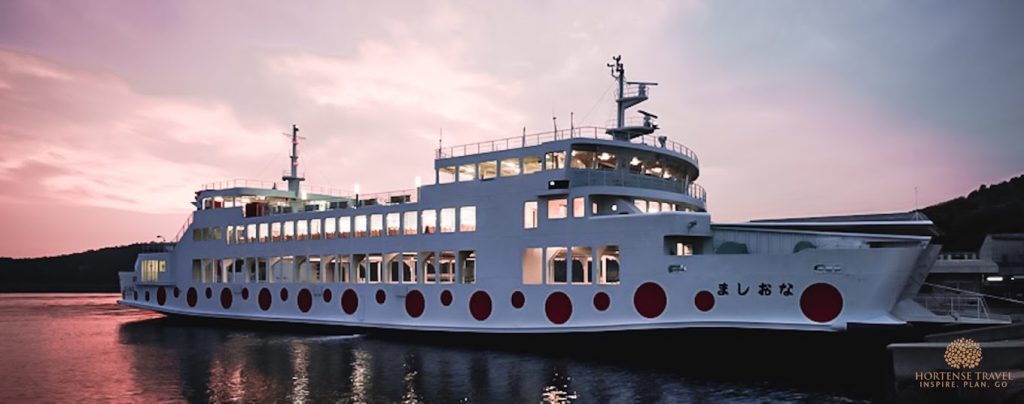
Walk over to Uno Ferry Port and take either the ferry or high-speed boat to the island! Get off at Miyanoura Port.
As for transportation on the islands themselves, I rented an electric bike for convenience. There’s a scooter option too. There is a public bus but you can end up spending a lot of time waiting for it; it has a preset route too. Walking is an option but seeing as the islands are quite hilly, I don’t recommend it unless you have 3-4 days to slowly explore.
Highlights of each art island
I took the opportunity to weekend hop around these three islands, only to realize that Naoshima alone deserves two full days. The beauty of the art there was in slow contemplation; some are a study of how light, air and nothingness interact. Below, I’ve highlighted each island’s most impressive and unique art spaces, including some that I haven’t been able to tour around but would love to, given another chance!
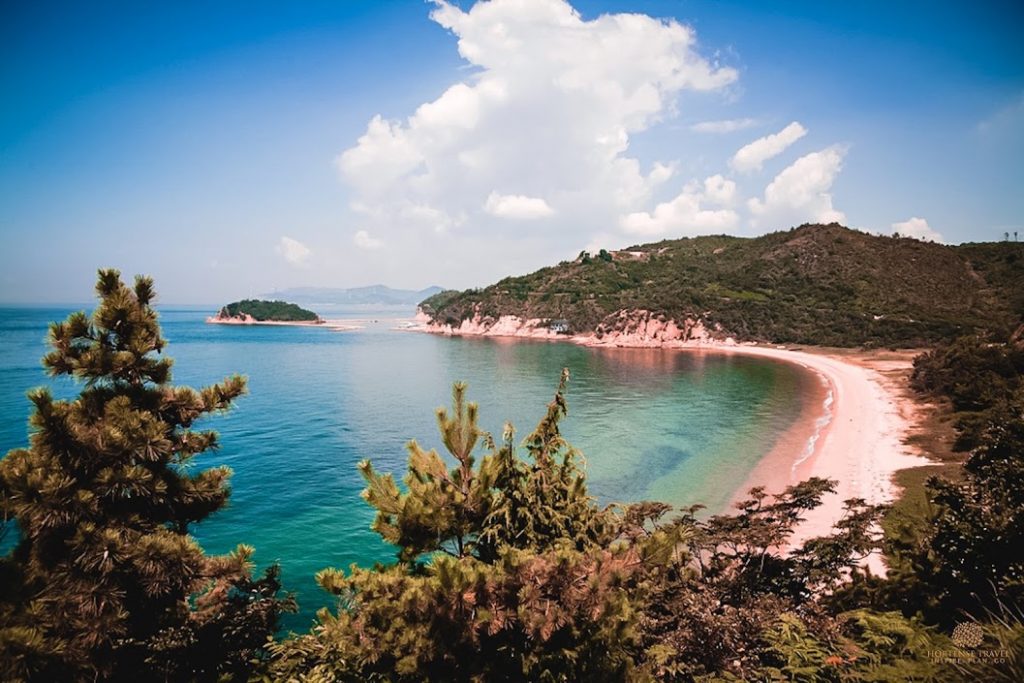
Naoshima is the mainframe of the collection, armed with laid-back charms in complement to its tiny traditional fishing villages, Miyanoura and Honmura. You can easily dedicate your trip to exploring this island alone as many of its museums and installations offer transformative views throughout the day.
- Benesse House Museum
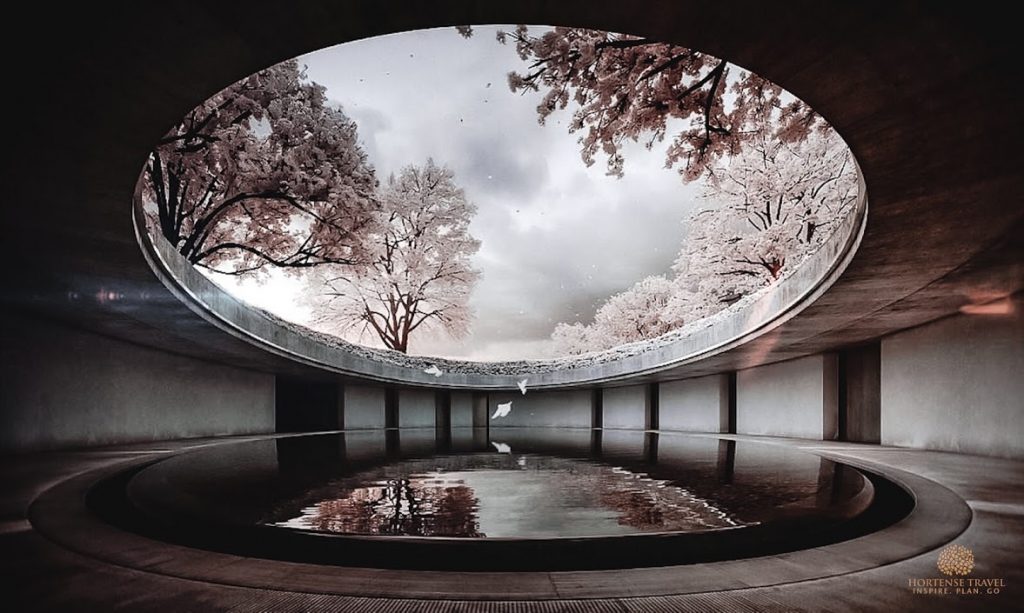
Arguably the centerpiece of Naoshima, Benesse House Museum is perched hilltop in solid grey vision. A hotel and museum combined, it houses the works of renowned modern artists such as Andy Warhol, Cy Twombly, David Hockney and Hiroshi Sugimoto. Not all works are indoors either; the Time Exposed installation and pebble-like sculptures are a study in how art interacts with nature. Keep an eye out for the iconic Yayoi Kusama pumpkin as well, a yellow beacon right by the beach below.
- Chichu Art Museum
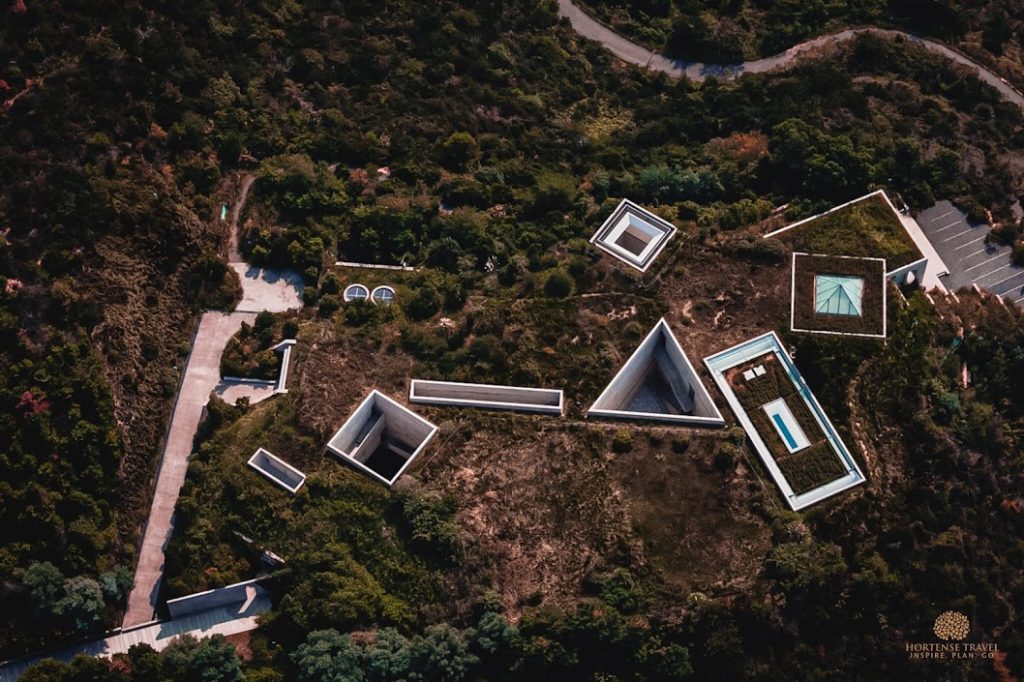
Another Tadao Ando building that impressed me was Chichu Art Museum, which was largely based underground. His genius shines through (literally) specially designed portholes so that the ever-changing natural light alters the artworks’ appearance throughout the day. I think the building’s artistry is best viewed from a top-down view, but unless you have a drone, you’ll just have to take my word for it! You’ll find works by Monet and Turrell within the intimate collection. If you happen to be there on a Friday or Saturday, come by evening for a unique viewing of James Turrell’s Open Sky . I was particularly in love with the Walter de Maria room; think golden pillars and smooth, central sphere.
- Lee Ufan Museum

If you’re a fan of clean lines and natural light, Lee Ufan Museum will stun you. I won’t spoil the attractions as they speak for themselves; just know to ready your camera!
- Art House Project
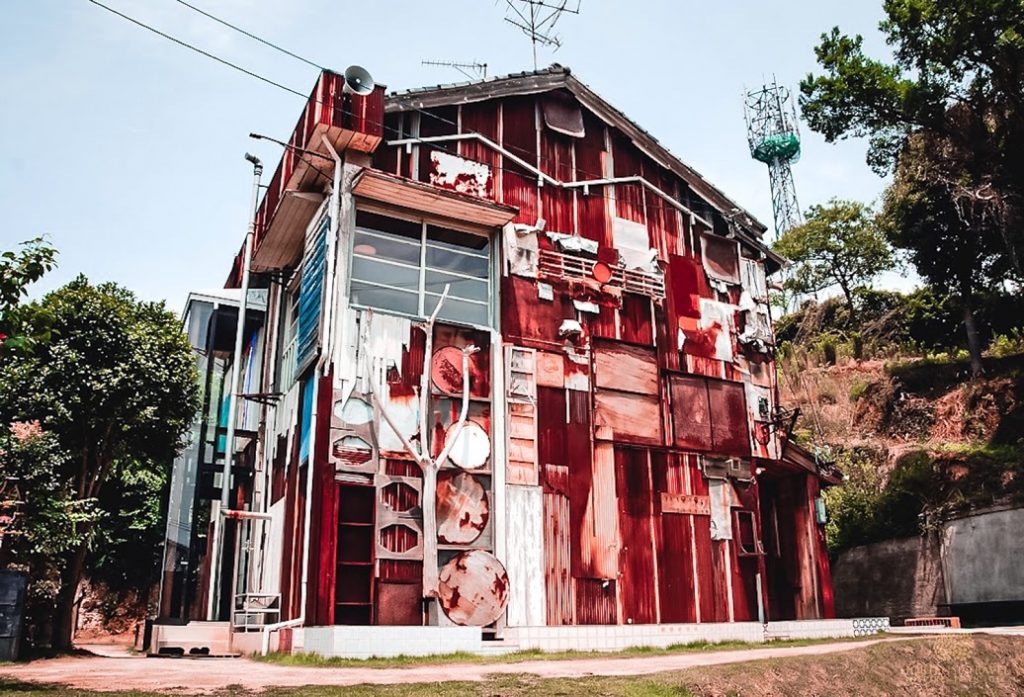
Perhaps the best representation of what Fukutake was trying to achieve, Art House Project saw the conversion of abandoned houses and workshops into art galleries, installations and cozy cafés. One of my favorite experiences was hopping between the various Art Houses (featuring works by both local and international artists) whilst admiring the charming village of Honmura. Make it a point to visit Kadoya’s Sea of Time , which is a spread of LED counters in a shallow pool, each counting from one to nine.
- I Love Yu

This public bathhouse is one of the quirkiest sights on Naoshima, a mishmash of colorful tiles, ‘80s silhouette light board, neon signs and random scrap pieces. The interior will surprise you too, unexpectedly modern with white tiling and geometrical mirrors; bet you didn’t see that elephant statue coming though.
- Kusama Pumpkin

This is an art piece you won’t miss seeing as it is right by Miyanoura Port. Kusama’s revered dots strike again on a giant pumpkin piece. Climb on for a set of fun photos!
Where to stay in Naoshima
SeaSide Park Stay – SeaSide Park Stay Tsutsujiso is a delightful coastal retreat nestled in the picturesque town of Tsutsujiso. This charming park stay offers a unique experience, where guests can indulge in the tranquil beauty of the sea and nature. The comfortable accommodations provide a perfect blend of modern amenities and traditional Japanese design, allowing visitors to unwind and rejuvenate. With its breathtaking ocean views, pristine beaches, and lush gardens, SeaSide Park Stay Tsutsujiso creates an idyllic setting for relaxation and exploration. Whether strolling along the shore, savoring local seafood delicacies, or simply basking in the serenity of the surroundings, guests are sure to create lasting memories at this enchanting seaside haven.
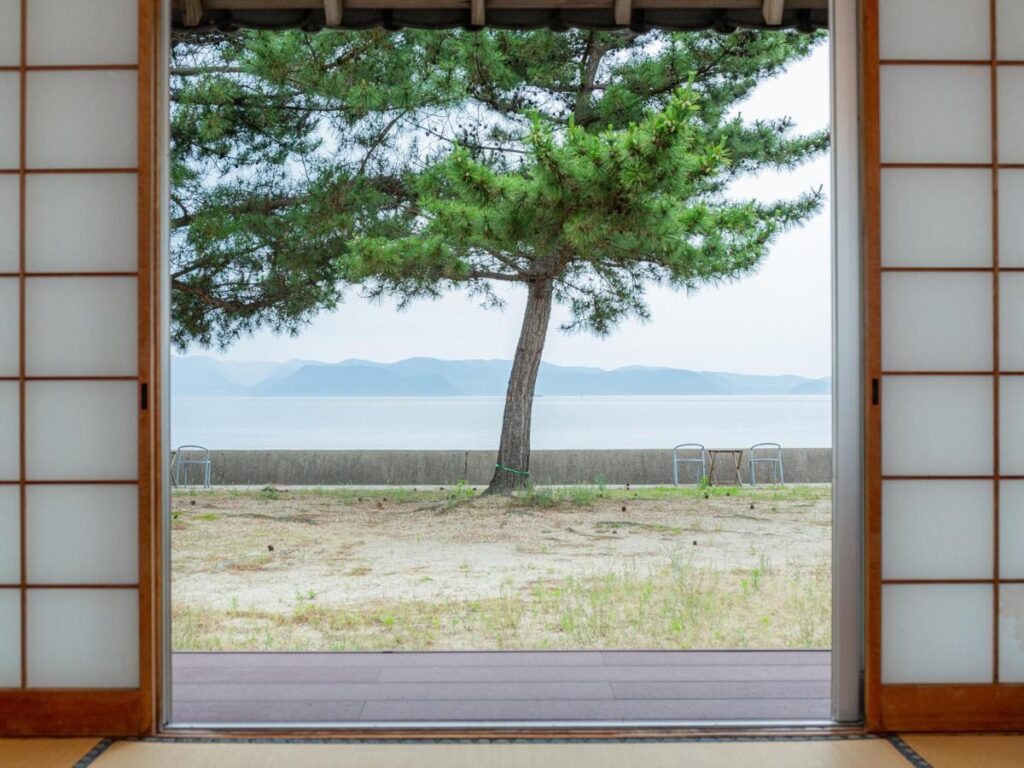
A ferry ride away from Naoshima is Teshima, which offers a more limited but no less astounding art collection.
- Teshima Art Museum
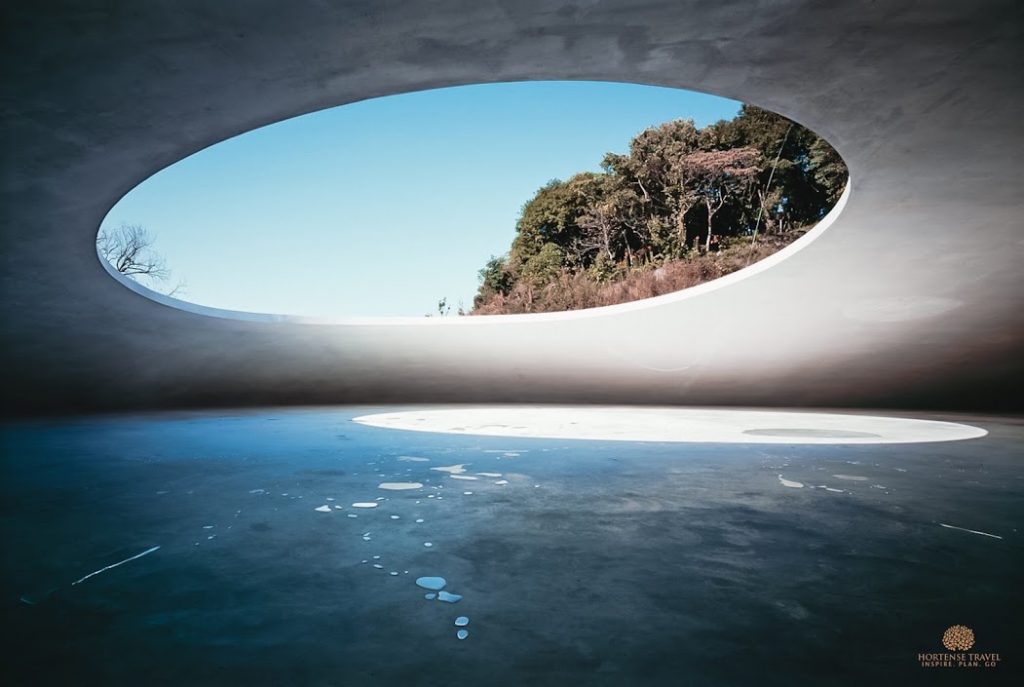
Blending in with the sloping rice terraces is the arresting Teshima Art Museum, a gently curved structure that flows into the ground. Some describe it as a tear drop and others a water droplet about to touch surface. And guess what – it is an empty structure with nothing on display. The museum itself is the art; visitors are asked to marvel at nature in its purest form of water, air and light. Just standing inside is strangely riveting; it felt like I was meditating for the most part.
- Les Archives Du Couer
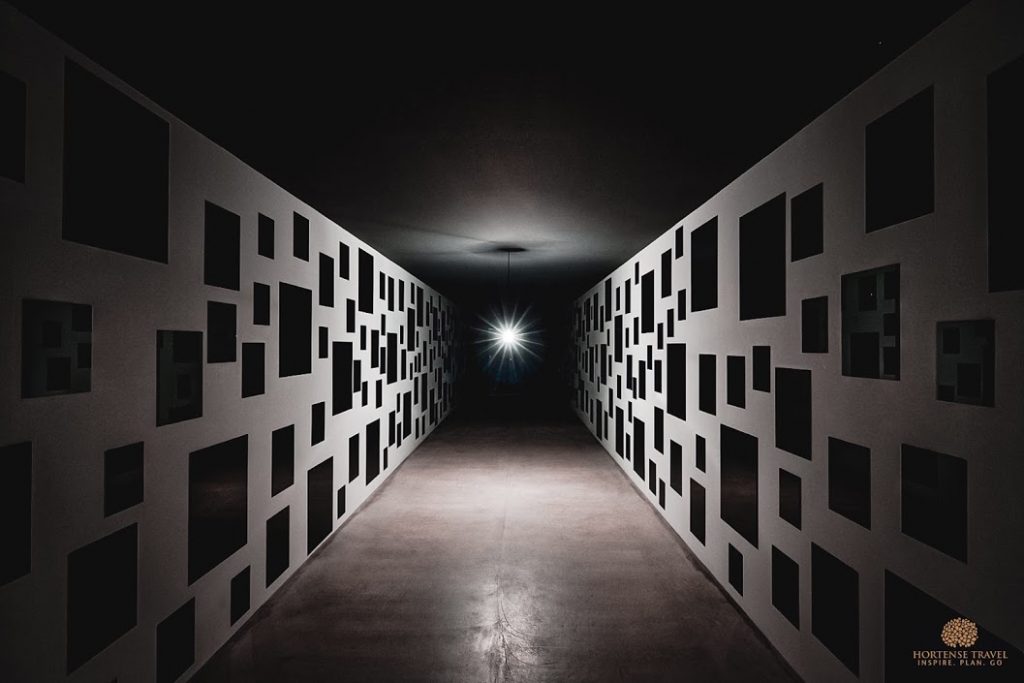
In a similarly trance-inducing vein is Les Archives Du Couer, where you go into a tunneled chamber instead and immerse yourself in sound. Records of heartbeats from thousands over the world play in sync to a flickering light. You can even record your own heartbeat and add it to the collection!
- Teshima Seawall House
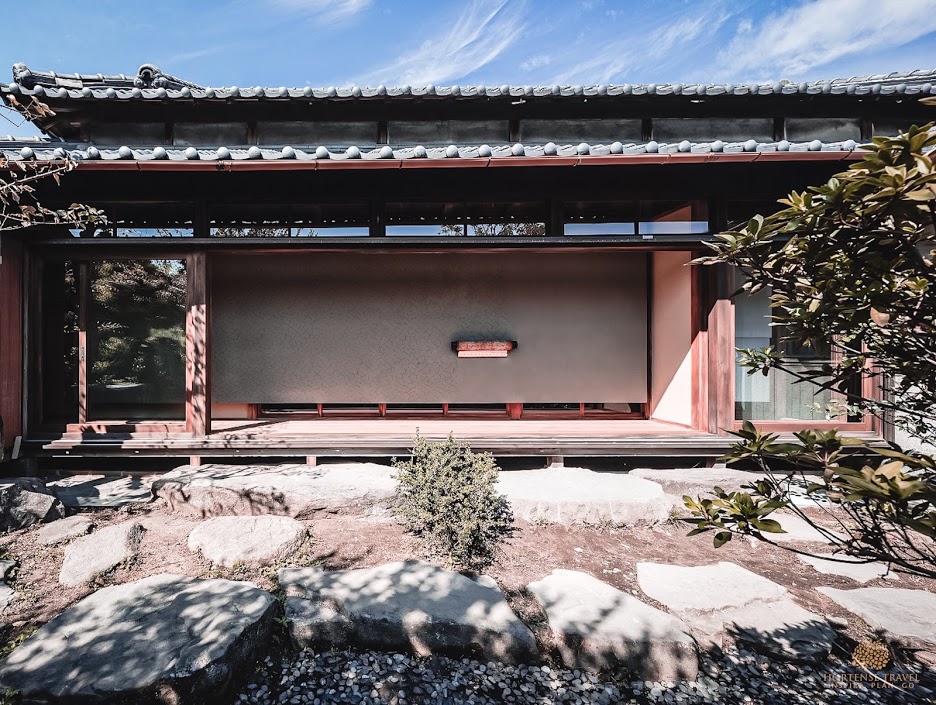
Visit a former teahouse where music is the theme. Empty of things (sounds like a trend, right?) apart from video footage of a saxophone, the traditional building reverberates with the beat of drums and the wavering notes of a bamboo flute.
- Yokoo House
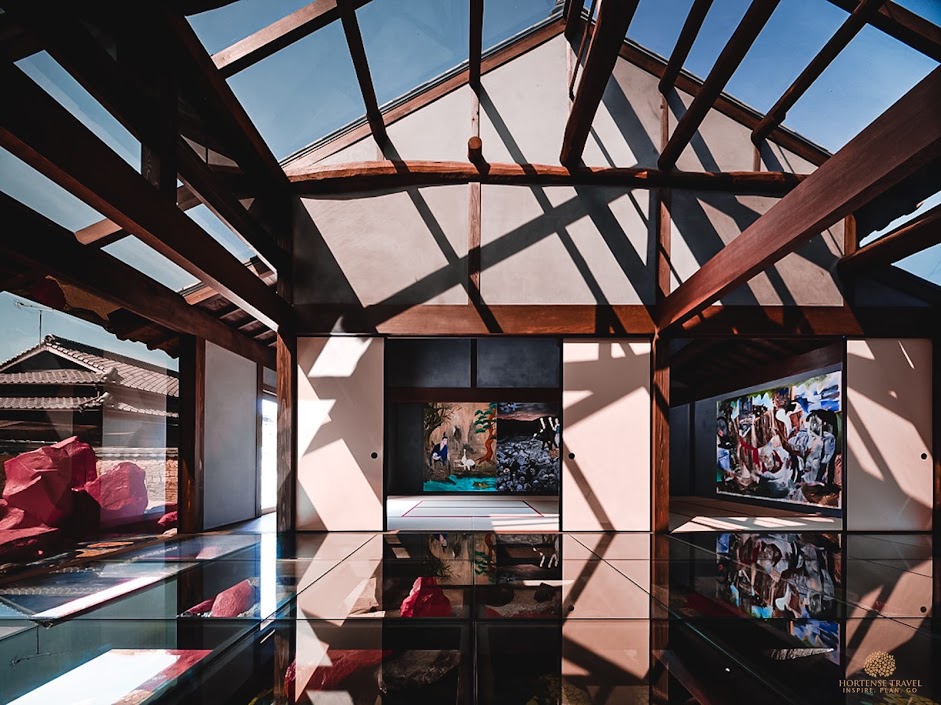
A lovechild of Tadanori Yokoo, this project reflects on how ambiguous divide between life and death. From dynamic and colorful paintings to glass-covered displayed embedded within tatami floors, the art pieces ask you to contemplate how exactly life transitions into death. What captures the theme best is perhaps the colored glass display used to symbolize a world that exists in many different angles.
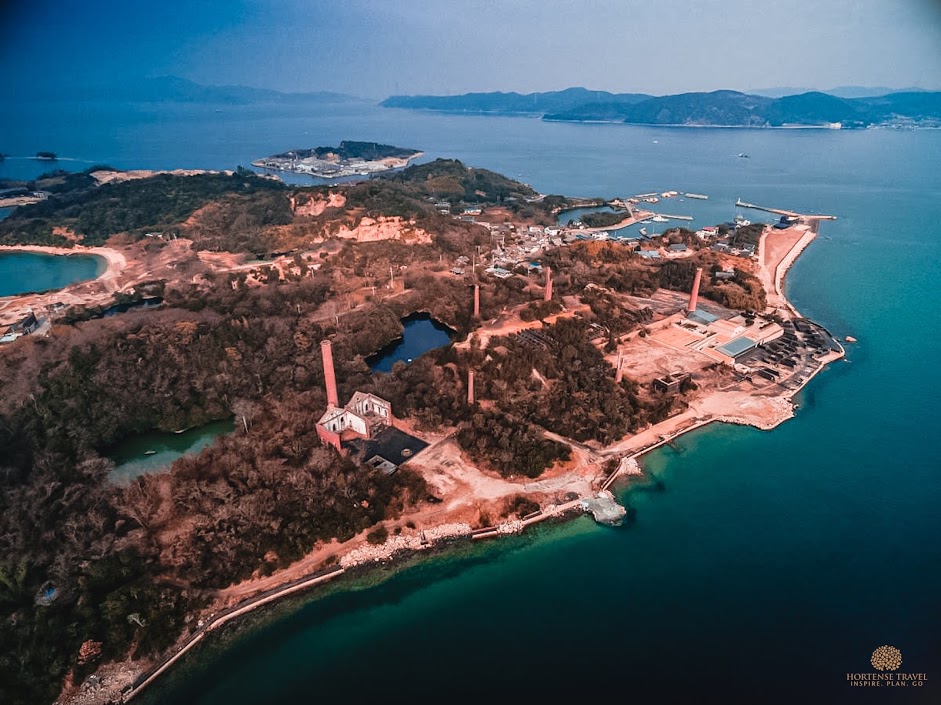
Inujima is the last on the list as the smallest of the islands, home to less than 100 people. It’s actually closer from Hoden port on the mainland than from Naoshima, but easily accessible either way via ferry. Inujima hosts a parallel Art House project alongside Seirensho Art Museum and Seaside Inujima Gallery.
- Seirensho Art Museum
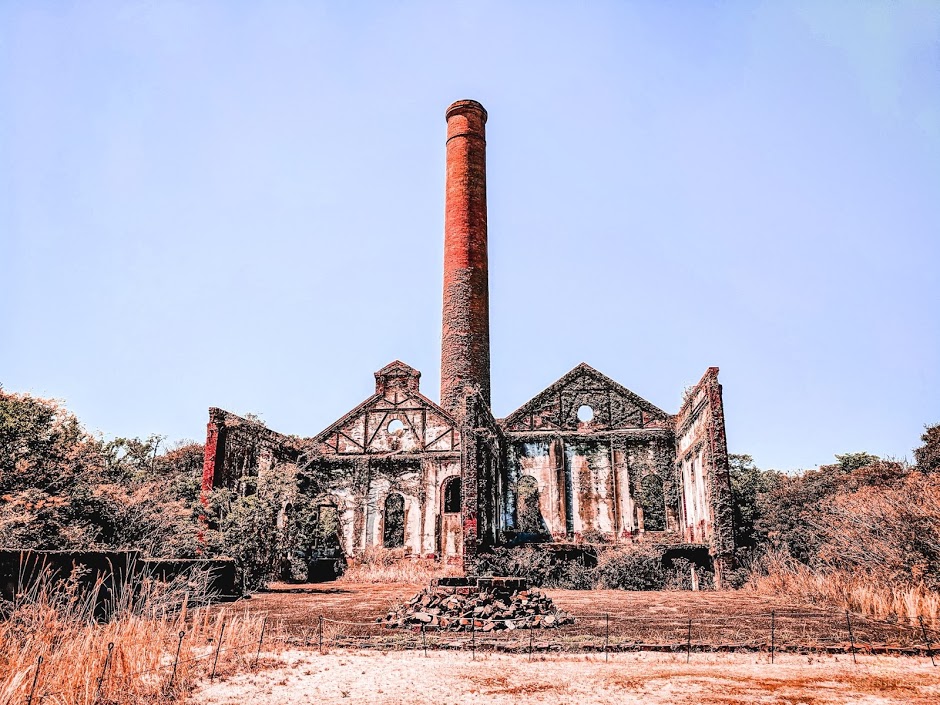
Nestled within the ruins of a copper refinery is a dreamlike art museum that once belonged to Yukio Mishima, a controversial novelist and nationalist known for his post-war modernization criticisms. The house reflects its previous owner’s dark end – he committed suicide – shuffling visitors along a dark mirrored corridor and through rooms that depict a deconstructed house. The suspended wooden frames and pools of water may come off as dark but there’s something beautiful in the haunting spectacle.
- Art Installations
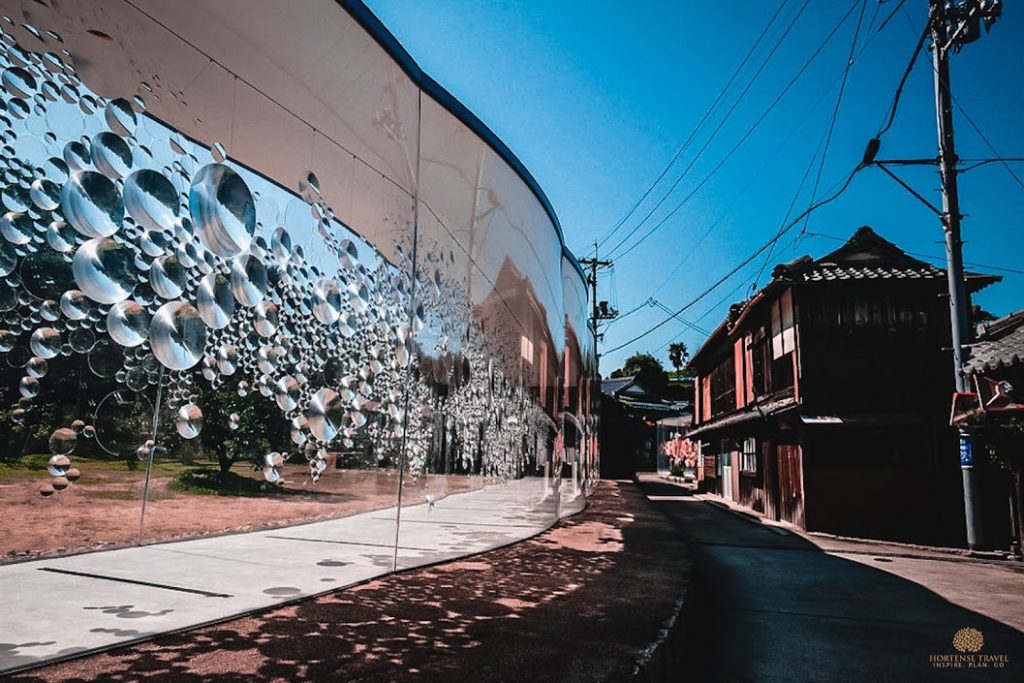
Not too far off from the museum are open hamlets with large art installations worth checking out! One is a coral-like structure that winds around the central wooden beam in an explosion of twisted limbs and white fan-like extensions. Another is a mirage of yellow, pleated threads and soft swings looking like sunbeams coming in through a windowed building. There’s also a mirror tree, glass bobbles dangling from an overhead cover in various sizes, like many all-seeing eyes. Last but not least is a colorful display, riots of reds and yellows poised like a humongous flower wreath.
There’s plenty more to see – you can check the full list of attractions on the main website! A few tinier islands have art installations on them too, so if you have the time, try to make it to as many as you can. It’s well worth the ferry commutes. Keep in mind too that most of the art pieces aren’t conventional paintings or sculptures. Many times, the architectural settings themselves are also an art to be digested.
More Places to Stay on the Art Islands
I highly recommend staying overnight on one of the islands, possibly even for two nights! There’s simply too much to see – a day trip is possible but it’ll be quite rushed.
Tentoumi Shibukawa Beach Glamping
Tentoumi Shibukawa Beach Glamping is a unique and enchanting coastal retreat nestled along the shores of Shibukawa Beach. Offering a one-of-a-kind glamping experience, this destination allows guests to immerse themselves in the beauty of nature while indulging in luxurious amenities. The glamping tents are thoughtfully designed, combining comfort and style, and provide a cozy sanctuary with modern conveniences. With the sound of waves crashing in the background and the scent of the sea in the air, guests can unwind and appreciate the serene surroundings. Whether lounging on the sandy beach, enjoying a barbecue under the stars, or participating in exciting water sports, Tentoumi Shibukawa Beach Glamping creates an unforgettable getaway where guests can reconnect with nature and create lasting memories.
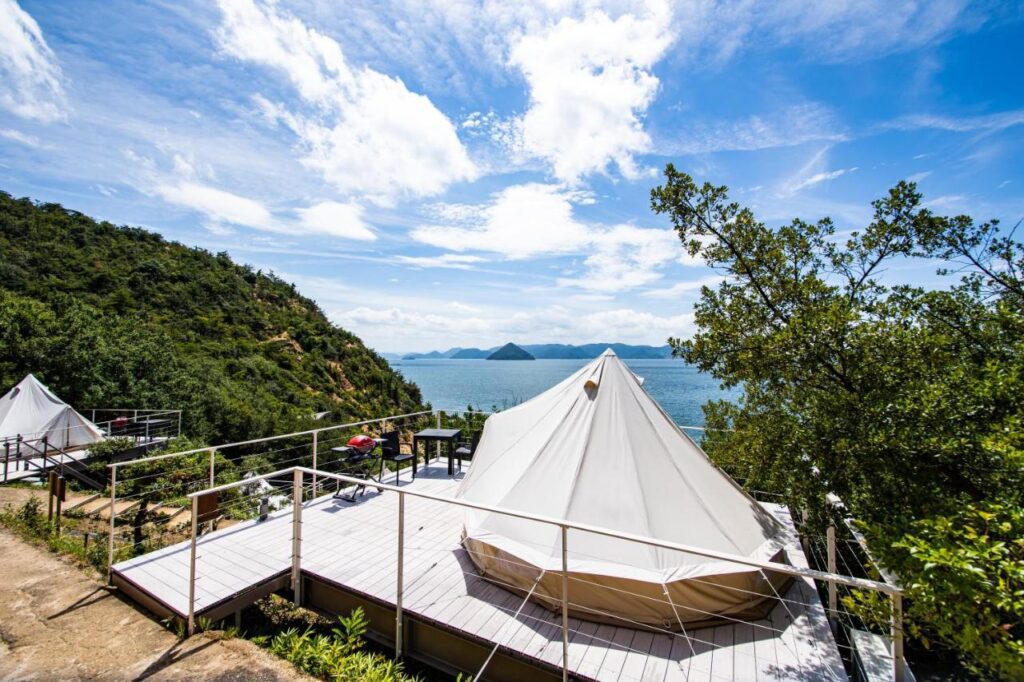
Tokuto”King Villa”, Teshima
Nestled amidst serene surroundings, this charming villa embraces the essence of traditional Japanese architecture while seamlessly blending in contemporary luxuries. With its tasteful design, the villa exudes an unmistakable Japanese ambiance that transports guests to a world of tranquility. Immerse yourself in the picturesque beauty of the garden with an amazing ocean vista. This idyllic setting creates an enchanting atmosphere, perfect for relaxation and introspection. While indulging in the comforts of modern amenities, guests can still savor the quintessential Japanese experience that permeates every corner of this exquisite villa.
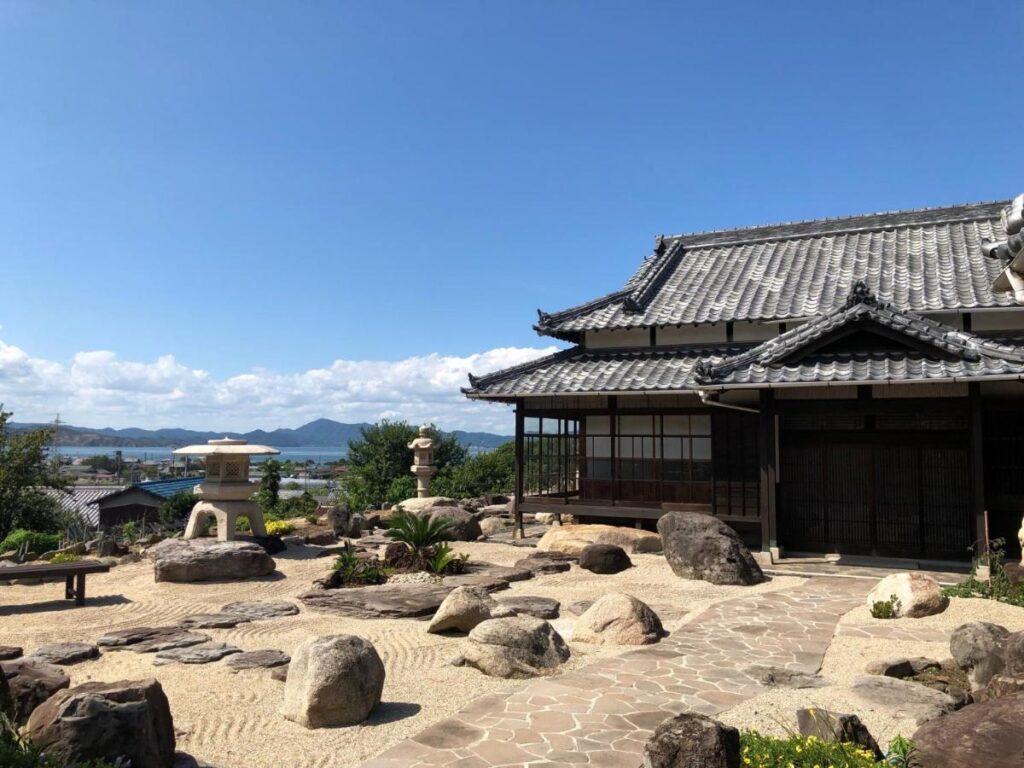
Generally, Naoshima and Teshima offer stays in various guest houses and glampings . Since accommodation is limited on these islands, you might consider staying around Uno Port and making the trip out every morning instead.
Plan your visit
Try to avoid going on Monday or Tuesdays since the majority of the exhibits on Naoshima are closed on Mondays, and those on Teshima and Inujima close on Tuesdays. If you’re visiting during holidays, however (typically long weekends), the exhibits may remain open on Mondays and close the next day instead.
Make sure to check out the Benesse Art Site Calendar as you’re planning your visit. It updates regularly on exhibit content and opening hours; you may also have to reserve ahead for certain museum visits. It’s also a good idea to plot out your exploration route so you get to see as many attractions as possible.
I didn’t understand the hype at first seeing as there’s nothing on the islands apart from art, but I couldn’t be more mistaken. It is art like I’ve never seen before! Unlike the usual museums in big cities, these nature-immersive galleries gave me the chance to slow down and contemplate at my own pace. It is honestly amazing where we can find beauty given space and time to appreciate it.
Visiting Japan soon? Check this out:
Personalized trip planning to Japan
Fascinating Japan 10-Day Itinerary
The best and most detailed 1-Week Japan Itinerary
Introduction to Japan
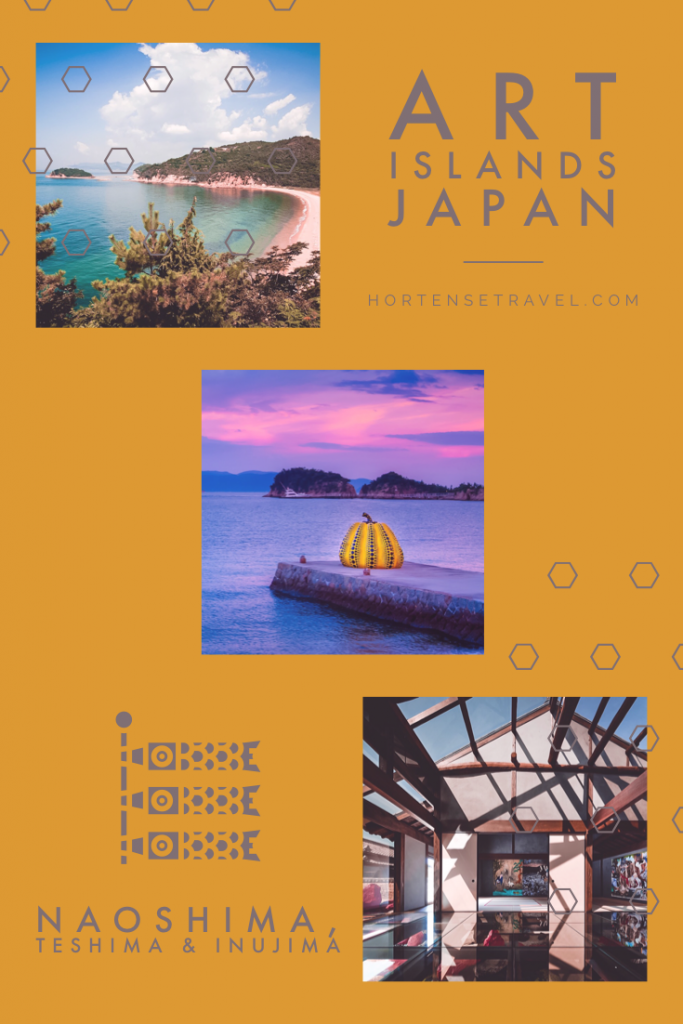
previous post

Hi, I’m Alexandra. I’m a travel designer based in Lisbon, Portugal. I create seamless itineraries, based on my first-hand experience and local experts’ knowledge, to curated destinations. Save time, money and your sanity. Leave the worries to me. You can choose from ready to use itineraries or hire me to create a personalized journey for you. Contact me at [email protected]
There are no comments
Join the conversation cancel reply.
Your email address will not be published. Required fields are marked *
Notify me of follow-up comments by email.
Notify me of new posts by email.
Pin It on Pinterest
The Ultimate Guide to Exploring Naoshima Island, Japan’s Artistic Haven
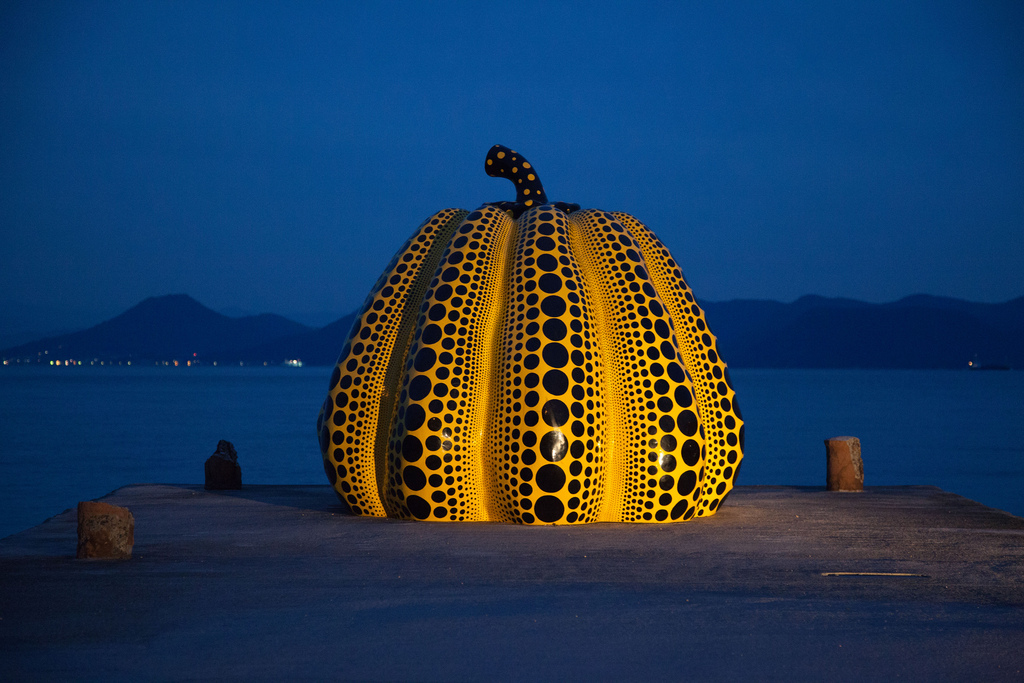
Table of Contents
- Discover the Fascinating World of Sumo Wrestling in Japan November 24, 2021
- 10 Tokyo Locations That Will Make Your Instagram Feed Pop September 4, 2021
- Solo Travel to Japan: An Adventure in Self-Discovery May 12, 2022
- Japan’s Breathtaking Travel Landscape Photography February 5, 2023
- The Ultimate Guide to Anime and Manga Shopping in Japan January 4, 2022
- Need A Career As A Security Shield? Acquire Safety Shield Training October 12, 2022
Naoshima Island in the Seto Inland Sea is famous for its modern art museums, architecture, and sculptures. Part of Kagawa Prefecture, the island with its Mediterranean atmosphere, sandy beaches, and sunny weather, combined with a laid-back, rural feel is a relaxing getaway from Japan’s large urban areas such as Tokyo and Osaka .
Where technology makes you speedy, up-to-the-minute, and all-over-the-place, Naoshima calms, grounds and slows you so that you feel as if you’ve stepped into a meditative shrine.
Naoshima Island may be small, but it is full of curiosities to tickle the mind. Years ago, artists & residents breathed life back into its abandoned buildings and began carving creations from their wildest imaginings. The result? Beaches speckled in sculptures, houses erupting art from every orifice, and intriguing walk-through exhibits in unexpected places.
Are you looking for a unique travel experience that will ignite your senses and leave you feeling inspired? Look no further than Naoshima Island, the “Art Island” of Japan . This small island in the Seto Inland Sea has undergone a remarkable transformation, from a struggling fishing community to a thriving center of art and culture. The island’s stunning natural beauty provides the perfect backdrop for its world-class art installations and museums, which seamlessly blend art and architecture in a breathtakingly beautiful way. From the iconic Yellow Pumpkin to the stunning Chichu Art Museum, Naoshima Island is a must-visit destination for art lovers and travelers seeking an experience that is truly one-of-a-kind. In this article, we will take a closer look at the art and culture of Naoshima Island, and provide you with all the information you need to plan your own unforgettable journey to this unique and enchanting destination.
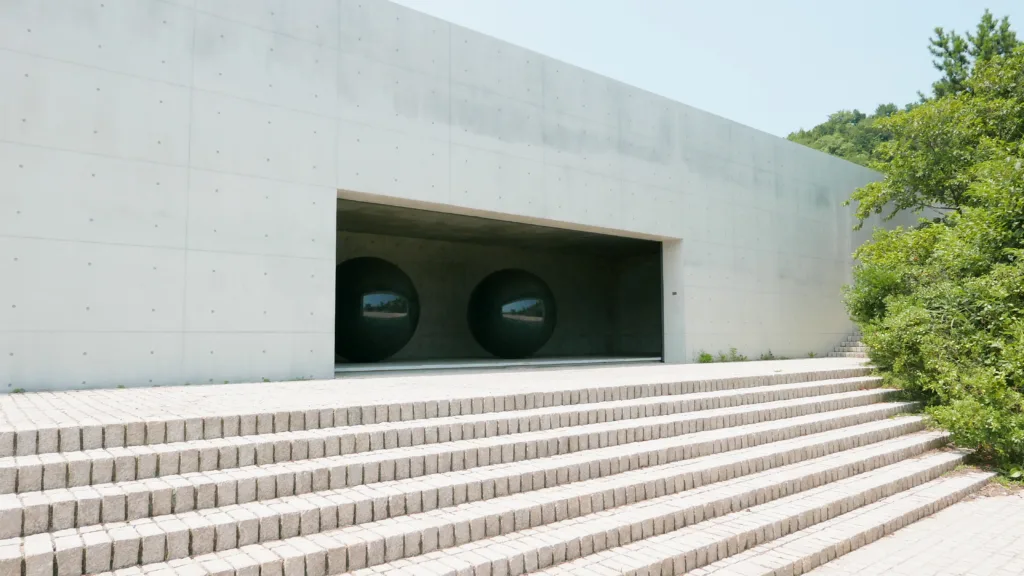
Art on Naoshima Island
There is so much to see and explore that you won’t want to miss out on. First of all, let’s talk about the major art installations on the island. One of the most iconic installations is the Yellow Pumpkin, by Japanese artist Yayoi Kusama. This sculpture has become an emblem of Naoshima Island, and it’s easy to see why. Its bright yellow color contrasts beautifully with the blue ocean and sky.
The Benesse Art Site Naoshima
But the Yellow Pumpkin is just the tip of the iceberg when it comes to art on Naoshima Island. The island is home to the Benesse Art Site Naoshima, which is a series of art installations across the island. The Benesse Art Site is a collaboration between the Benesse Corporation and the architect Tadao Ando, and it’s one of the most ambitious art projects in Japan. The Benesse Art Site features a variety of art installations and museums, including the Chichu Art Museum, the Lee Ufan Museum, and the Benesse House Museum.
The Chichu Art Museum is one of the highlights of the Benesse Art Site. This museum was designed by Tadao Ando, and it’s built directly into the hillside. The museum features artwork by Claude Monet, Walter De Maria, and James Turrell, among others. The Lee Ufan Museum is another must-visit destination for art lovers. This museum features the work of Lee Ufan, a Korean artist who has lived in Japan since the 1950s. The museum is located in a beautiful garden, and the artwork is displayed in a way that is meant to evoke a sense of harmony with nature.
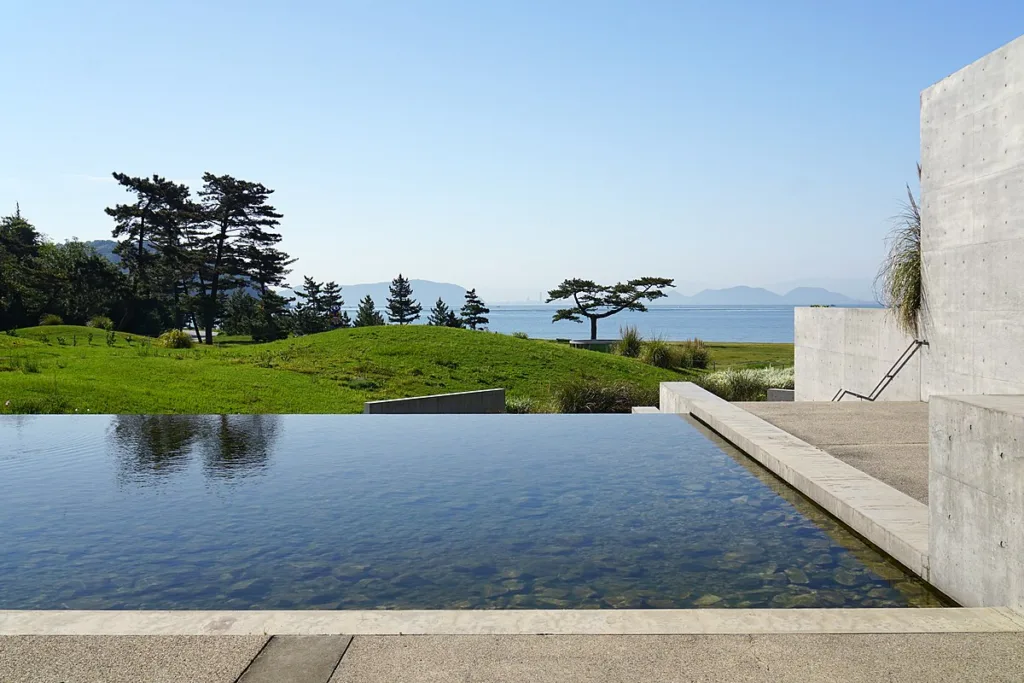
Other notable art museums and galleries on Naoshima Island
Aside from the Benesse Art Site, there are also other notable art museums and galleries on Naoshima Island. The Ando Museum is dedicated to the life and work of Tadao Ando, and it’s a great place to learn more about the architect who helped shape the island’s art scene. There’s also the Art House Project, which features a series of traditional Japanese houses that have been converted into art galleries. Each house features a different artist, so it’s a great way to experience a variety of artwork in one place.
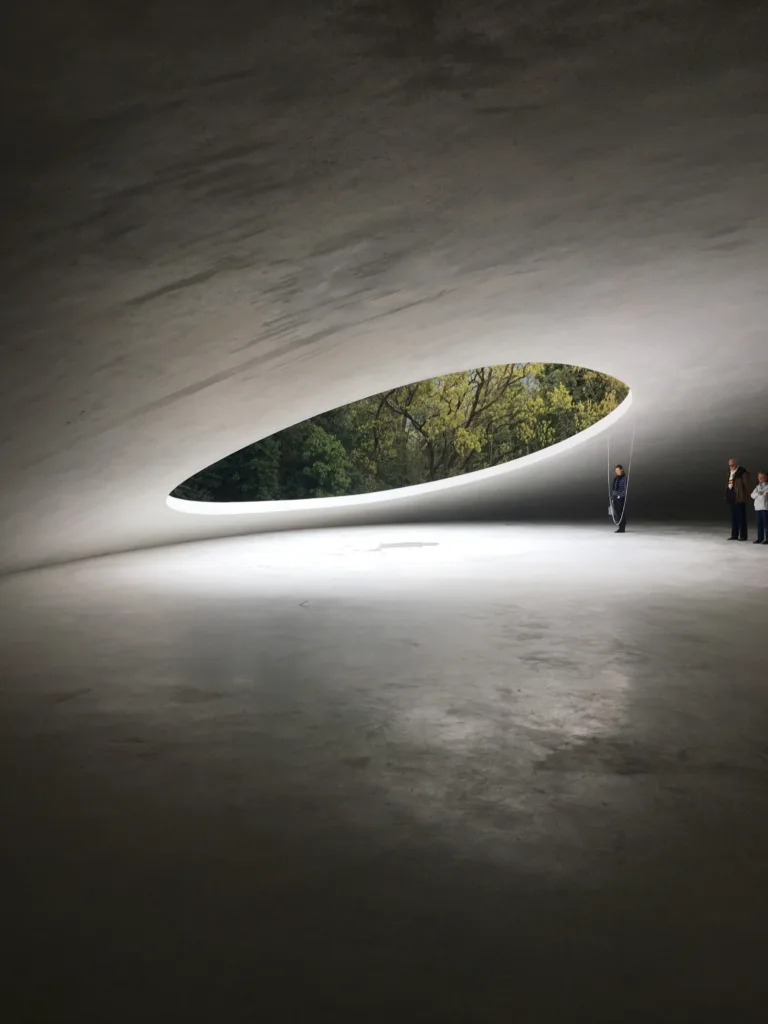
Where to stay on Naoshima Island?
Let’s talk about accommodations on Naoshima Island. There are some amazing places to stay that will make your trip even more memorable. One of the most popular places to stay is the Benesse House Hotel. This hotel is part of the Benesse Art Site, and it’s a work of art in its own right. The hotel was designed by Tadao Ando, and it’s built into the hillside overlooking the sea.
One of the great things about staying at the Benesse House Hotel is that you get access to the entire Benesse Art Site. This means you can explore the art installations and museums at your leisure, and you don’t have to worry about missing anything. Plus, the hotel has its own private beach, so you can relax and unwind after a day of exploring.
The Naoshima Camping Ground is a great choice if you’re looking to get back to nature. You can rent a tent or bring your own, and the camping ground is located right by the sea. There are also several guesthouses and traditional Japanese inns on the island, which offer a more authentic Japanese experience.
The island’s art scene is one of a kind, and staying at the Benesse House Hotel is the perfect way to fully immerse yourself in the experience. So why not plan your trip today and discover all that Naoshima Island has to offer?
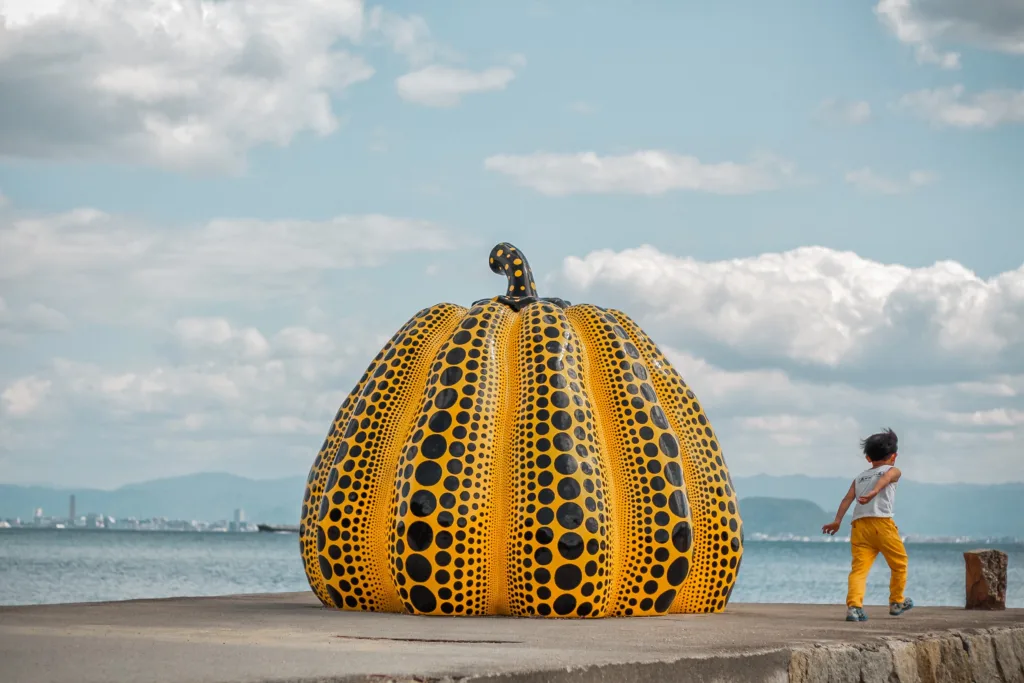
Getting to Naoshima Island
It’s actually pretty easy to get there, and there are a few transportation options depending on where you’re coming from. If you’re coming from Tokyo or Osaka, the easiest way to get to Naoshima Island is by taking a train to Okayama Station. From there, you can take a ferry to the island. The ferry ride takes about 20-30 minutes, and it’s a scenic trip across the Seto Inland Sea.
Getting around the island
Once you’re on the island, getting around is pretty easy too. There are buses that run regularly between the major art installations and museums, so you can easily hop on and off as you please. You can also rent a bike or an electric bike if you prefer to explore the island on your own. The island is fairly small, so you can easily see everything in a day or two.
If you’re staying at the Benesse House Hotel, they also offer a shuttle service that will take you around the island. This is a great option if you want to make sure you don’t miss anything and you want to travel in comfort.
Overall, getting to and around Naoshima Island is pretty easy, and it’s definitely worth the trip. The island is a hidden gem that is still relatively unknown to tourists, so you’ll be able to enjoy the art installations and museums without feeling crowded or overwhelmed. So why not plan a trip today and discover all that Naoshima Island has to offer?
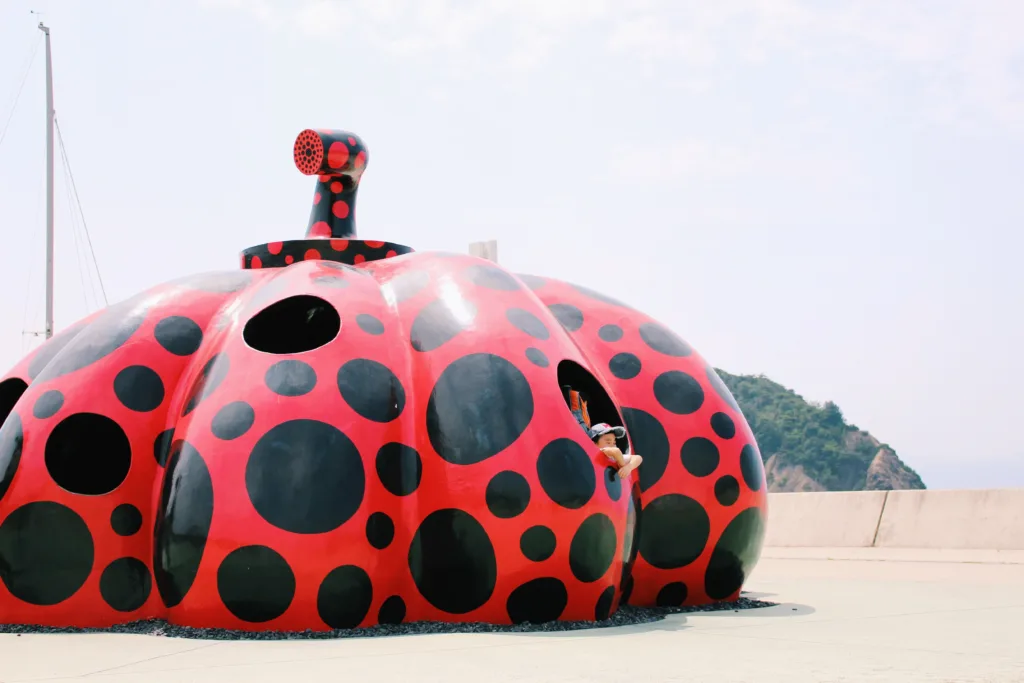
Exploring Naoshima Island
One of the best ways to explore the island is by taking a bike ride or a walk. You can rent a bike from one of the rental shops on the island.
Another popular attraction on the island is the Art House Project. This is a series of art installations that are located throughout the town of Honmura. The installations are housed in traditional Japanese houses, and they are designed to interact with the surrounding environment.
If you’re looking for a more active way to explore the island, you can also try kayaking or stand-up paddleboarding. There are several rental shops on the island that offer these activities. It’s a great way to see the island from a different perspective.
Finally, if you’re interested in the history and culture of the island, you can visit the Naoshima Folklore Museum. This museum is housed in a traditional Japanese house, it features exhibits on the history and culture of Naoshima Island.
Overall, Naoshima Island is an incredible destination that is sure to leave you feeling inspired and rejuvenated. Whether you’re a fan of contemporary art or you just want to experience the natural beauty of Japan, this is definitely a place worth visiting. So why not plan your trip today and discover all that Naoshima Island has to offer?
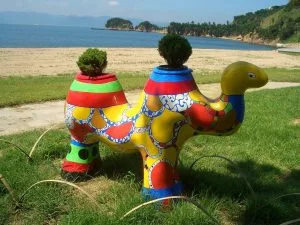
View from the Benesse House
Top places to see in Naoshima:
- Chichu Art Museum – The museum building, designed by Ando Tadao and itself a work of art, is mostly located underground. It solely utilizes natural light to illuminate the artwork. This creates a viewing experience that is heavily influenced by the surrounding natural environment. The museum houses a small but impressive collection of works by artists including Claude Monet, James Turrell, and Walter De Maria.
- The Benesse House – The Benesse House is a modern art museum and resort hotel. The complex consists of four buildings: the Museum, Oval, Park, and Beach, all designed by Ando Tadao. Each building features its own unique artwork and guest rooms. The main attraction of the Benesse House is its modern art museum. This museum displays work created by many different artists from both Japan and abroad. These works are that was inspired by the natural surroundings of Naoshima and the architecture on the island. Overnight guests staying at the Museum and Oval buildings can enjoy 24-hour access to the museum.
- Art House Project – Charming little village turned into a modern art destination. The Art Houses are a collection of abandoned houses and workshops. As well as a temple and a shrine – that have been converted into venues and art installations for artists from Japan and around the world.
- Naoshima Bath “I♥YU” – kitschy and wonderful, a fitting way to end the day is with a soak here after a full day of enjoying art.
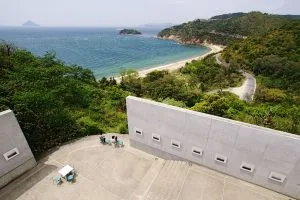
Other Activities on Naoshima Island
Naoshima Island offers much more than just art. You can rent bicycles and explore the island’s stunning landscapes. Cycling around the island is a great way to discover its beauty while enjoying a leisurely ride.
You can also enjoy the sandy shores and crystal-clear waters of the Seto Inland Sea. Among the most popular beaches are Miyanoura Beach and Inkyu Beach, which offer great swimming opportunities and a relaxed atmosphere.
Strolling through the Honmura district is another must-do activity on Naoshima Island. The district is home to the Art House Project , a collection of abandoned houses transformed into art installations. You can stroll through the narrow streets and admire the unique artworks, which include Yayoi Kusama’s “Pumpkin” and James Turrell’s “Minamidera.” In addition to the Art House Project, the Honmura district is also home to several local cafes and shops where visitors can enjoy traditional Japanese food and buy souvenirs.
Lastly, watching the sunset at the Naoshima Pavilion is a breathtaking experience. It’s a serene and peaceful way to end the day on Naoshima Island.
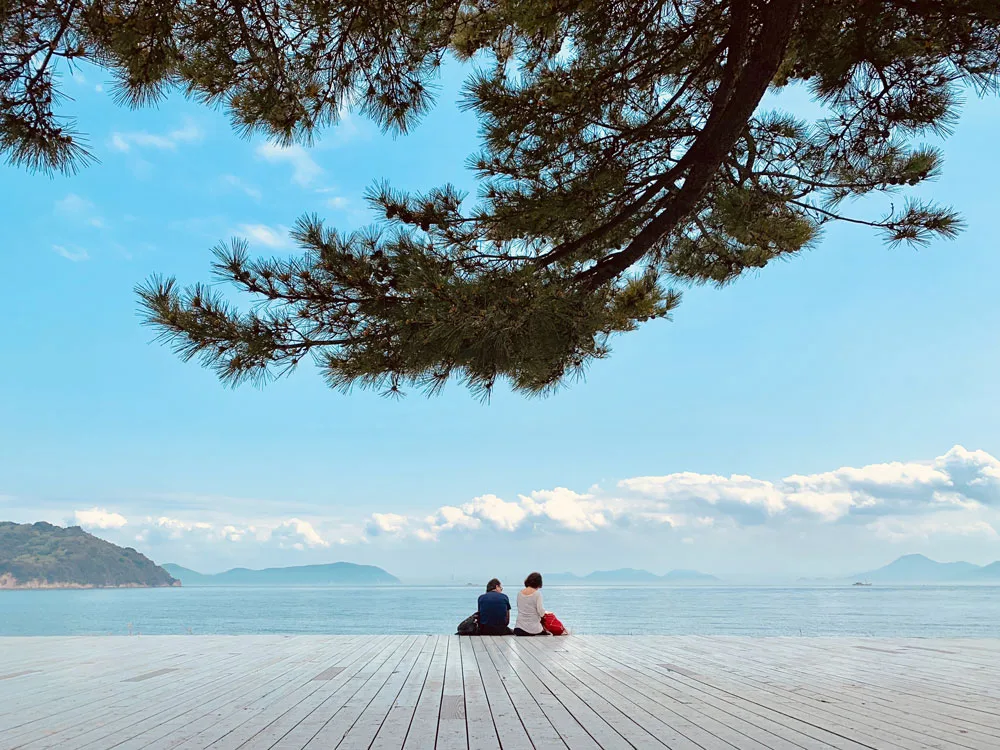
Dive deep into Naoshima’s art and artists
Reading about Naoshima and its artists offers a unique opportunity to experience the convergence of contemporary art, architecture, and nature.
- “ Naoshima: Art, Architecture, Nature ” by Fram Kitagawa. This book is a comprehensive guide to the art installations and museums on Naoshima, including the Benesse Art Site, the Chichu Art Museum, and the Lee Ufan Museum.
- “ Yayoi Kusama: From Here to Infinity! ” by Sarah Suzuki. This book is a children’s introduction to the life and work of Yayoi Kusama, with colorful illustrations and simple explanations of her artistic concepts and techniques. It is a great way to introduce young readers to the world of contemporary art and the vibrant, playful universe of Kusama’s art.
- “ Tadao Ando: Complete Works 1975-2014 ” by Philip Jodidio. This comprehensive book offers a complete overview of Tadao Ando’s career and features detailed photographs and drawings of his projects. It includes his iconic works on Naoshima, such as the Chichu Art Museum, Benesse House, and the Lee Ufan Museum.
- “ The Chichu Art Museum: Tadao Ando Builds for Claude Monet, Walter De Maria and James Turrell ” by Tadao Ando. This book focuses specifically on the Chichu Art Museum, one of the most iconic buildings on Naoshima.
- “ The Art of Lee Ufan: Marking Infinity ” by Lee Ufan. This book offers an in-depth exploration of the work of Lee Ufan, one of the most prominent artists featured on Naoshima.
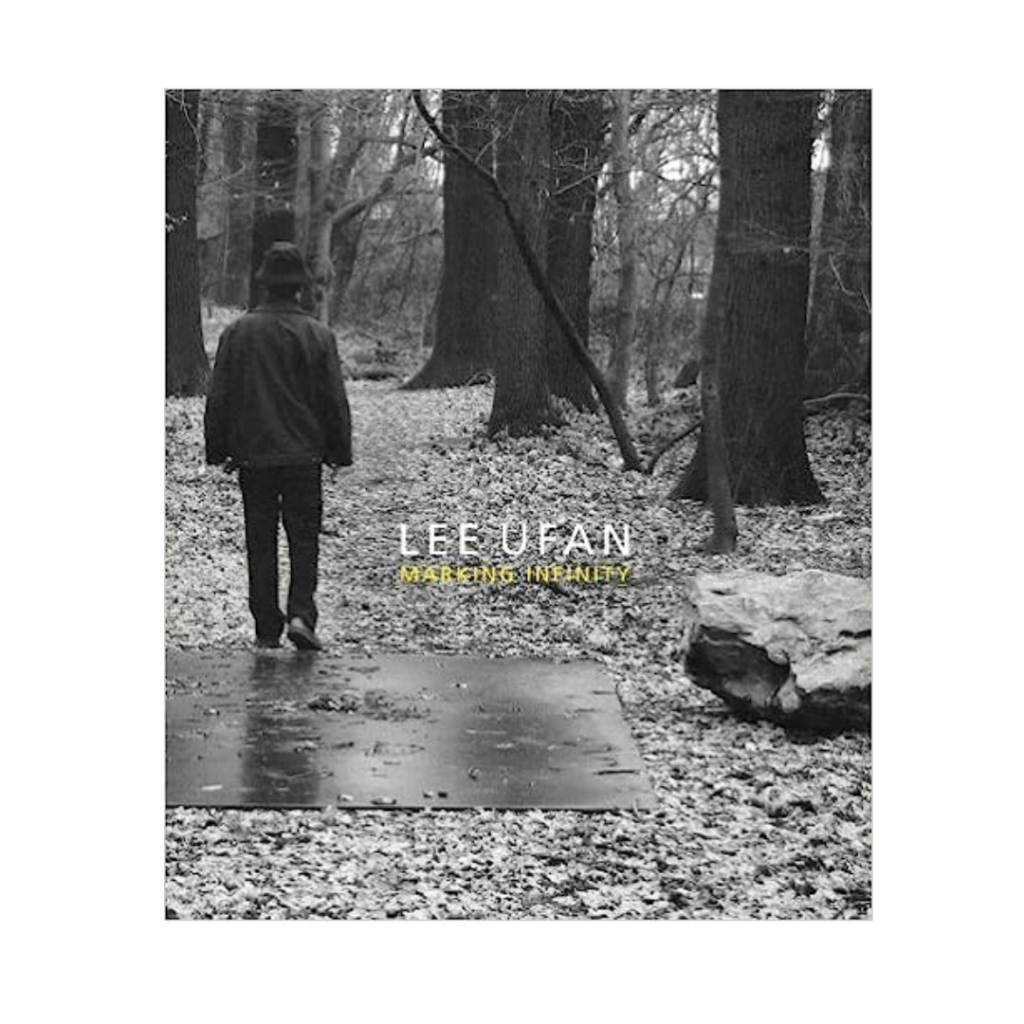
Book your tickets now and experience the wonder of Naoshima Island!
Naoshima Island is a unique destination that offers a perfect combination of art, nature, and culture. Whether you’re an art lover or just looking for a peaceful getaway, Naoshima Island has something to offer. So plan your visit today and immerse yourself in the beauty and creativity of this artistic haven in Japan.
Skiing in Japan : every skier’s dream
Kyoto in 2 days: a perfect itinerary, you may also like, exploring the captivating world of kabuki theater, discover the magic: 10 dreamy honeymoon experiences in..., nara in 24 hours: the ultimate one-day itinerary, top 10 unique experiences in osaka, top 10 amazing experiences in tokyo, japan’s breathtaking travel landscape photography, tokyo’s most fun and unique museums, need a career as a security shield acquire..., focus on tradition: photography tours in japan, leave a comment cancel reply.
Save my name, email, and website in this browser for the next time I comment.
The 10 most wonderful places to visit in Japan

Mar 28, 2024 • 6 min read
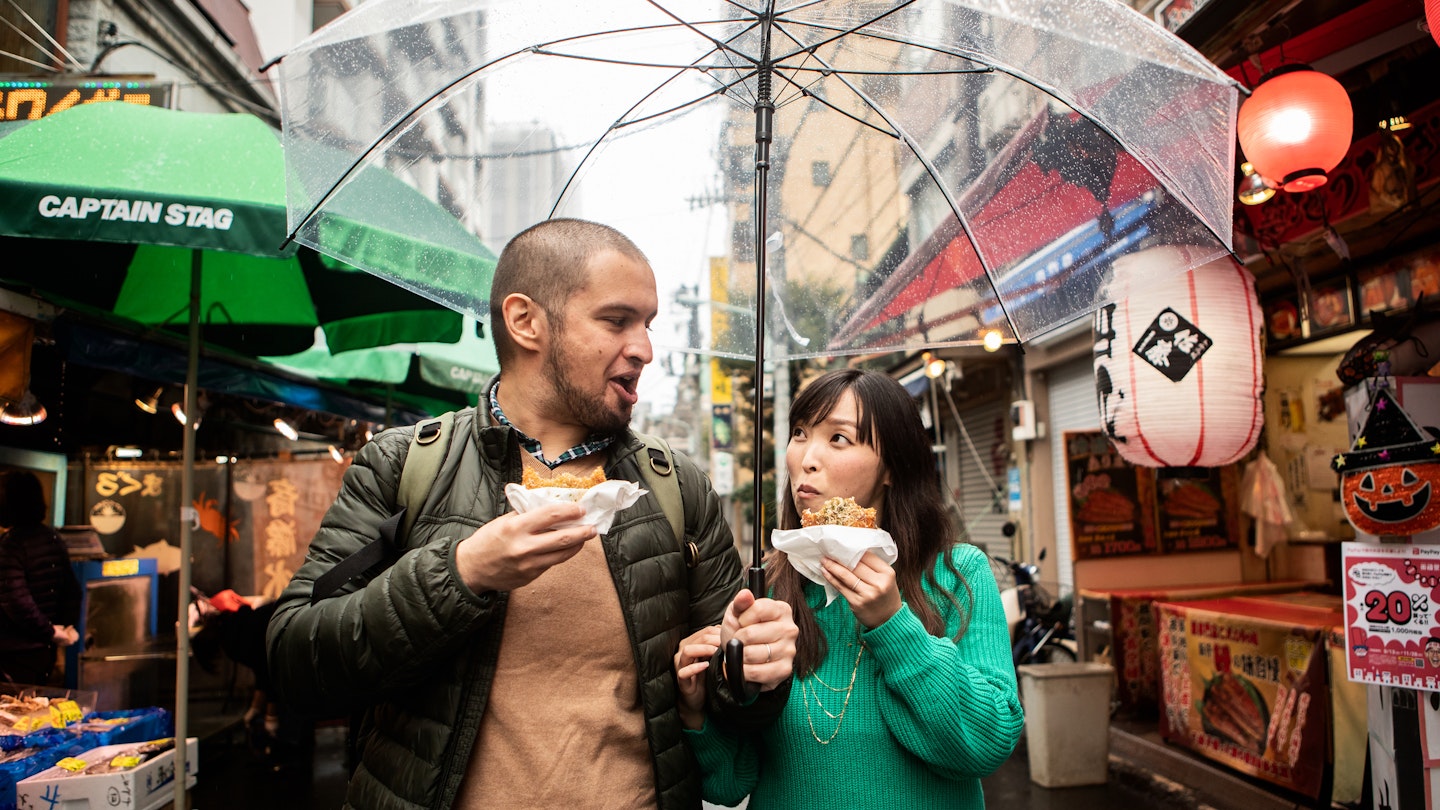
From buzzing cities to serene forest walks, these are our favorite places to visit in Japan © Taiyou Nomachi / Getty Images
Japan offers up a real feast for travelers, with mountainside onsen (hot spring) villages, beach-lined islands and buzzing megacities all on the menu.
You could arguably spend a lifetime sampling the country’s delights, but some towns and sights are staples – core ingredients to any great Japan trip. Here’s our pick of the 10 best places to visit in Japan .
Best for contemporary culture
Tokyo is a city forever reaching into the future, pushing the boundaries of what's possible on densely populated, earthquake-prone land, and building ever taller, sleeker structures.
It's Japan's top spot for contemporary art and architecture, pop culture, shopping, drinking and entertainment (and a tie with Kyoto for dining). But more than any other sight, it's the city itself that enchants visitors.
It's a sprawling, organic thing, stretching as far as the eye can see. Constantly changing with a diverse collection of neighborhoods , no two experiences of Tokyo are ever the same.
Planning tip: Tickets for sumo, kabuki and Giants baseball games usually go on sale one to two months in advance. The Imperial Palace and Ghibli Museum are other popular attractions that require prior planning.

Best for traditional experiences
Kyoto , Japan's imperial capital for a thousand years, is home to more than a thousand temples. Among them are the monumental, like Kinkaku-ji (an exquisite pavilion sheathed entirely in gold leaf), and the meditative, like Ryōan-ji , with its stark Zen rock garden.
And temples are only the beginning. There's the culture of tea, which you can appreciate at one of the city's many elegant teahouses; the art of the geisha, those iconic performers of traditional music and dance; and also a rich food culture, including kaiseki (Japanese haute cuisine).
3. Naoshima
Best for architecture
Naoshima is one of Japan's great success stories: once a rural island on the verge of becoming a ghost town, it's now a world-class center for contemporary art.
Many of Japan's most lauded architects have contributed structures, including museums, a boutique hotel and even a bathhouse – all designed to enhance the island's natural beauty and complement its existing settlements.
The resulting blend of avant-garde and rural Japan is captivating. It has also inspired some Japanese to pursue a slower life outside the big cities, relocating to Naoshima to open cafes and inns.
Planning tip: Try to plan your visit during one of the three exhibitions of the Setouchi Triennale festival, which happens during the spring, summer and fall every three years – the most recent was in 2022. Naoshima hosts various art, drama, music and dance events that make this festival really special.

Best for views and pilgrimages
Even from a distance, Mt Fuji will take your breath away. Close up, the perfectly symmetrical cone of Japan's highest peak is nothing short of incredible. Dawn from the summit? Pure magic.
Fuji-san is among Japan's most revered and timeless attractions. Hundreds of thousands of people climb it every year, continuing a centuries-old tradition of pilgrimages up the sacred volcano.
Those who'd rather search for picture-perfect views from the less-daunting peaks nearby will be following in the steps of Japan's most famous painters and poets.
Planning tip: The best time to climb Mt Fuji is during its official season, from July 1 through mid-September, which avoids the rainy season and snowfall. Always check for typhoon warnings before hiking in Japan.
5. Hiroshima
Best for introspection
Hiroshima today is a forward-thinking city with attractive, leafy boulevards. It's not until you visit the Peace Memorial Museum that the true extent of human tragedy wreaked by the atomic bomb becomes vividly clear.
A visit here is a heartbreaking, important history lesson. The park around the museum , much of which was designed by Japan's great modernist architect Tange Kenzō, offers many opportunities for reflection.
But the city's spirit of determination – as well as its food – will ensure that you'll have good memories to take with you when you leave.

6. Yakushima
Best for forest bathing
Yakushima, a small island off the coast of southern Kyūshū , is often described as magical and enchanting – otherworldly even. It's a place where words fail and clichés step in.
Home to some of Japan's last primeval forests, you'll find the yakusugi , an ancient cedar native to the island whose giant roots seem to form alien tentacles.
Hiking trails underneath them cover craggy terrain, often fuzzy with moss. The landscape here is believed to have inspired the iconic Studio Ghibli animated film, Princess Mononoke .
Detour: When you're not hiking, stop by the Yakusugi Museum to learn more about the importance of yakusugi to the islanders of Yakushima. An English audio guide is available.
7. Koya-san
Best for exploring temples
Riding the funicular up to the sacred Buddhist monastic complex of Kōya-san feels, appropriately, like ascending to another world.
There are over a hundred temples here, the highlight of which is Oku-no-in , where paths weave their way among towering cryptomeria trees and time-worn stone stupas covered in moss and lichen.
Other temples offer a different experience: the chance to spend the night, dine on traditional vegetarian Buddhist cuisine and wake up early for morning meditation with the resident monks.
Planning tip: Though Japanese temples and shrines do not have established dress codes, visitors are expected to stay relatively quiet in these sacred spaces.
8. Okinawa and the Southwest Islands
Best for beaches
Okinawa and the Southwest Islands offer a totally different experience from the rest of Japan. This semi-tropical archipelago forms an arch between Kyūshū and Taiwan .
Until the islands were annexed by Japan in the 19th century, they formed their own kingdom – the Ryūkyū Empire – and the cultural differences are apparent in everything from the architecture to the food.
This is where you'll find Japan's best beaches, like those on the Yaeyama Islands and the Kerama Islands, with sugar-white sand fringed with palms and turquoise waters. Bask in the sun, or snorkel and scuba dive.
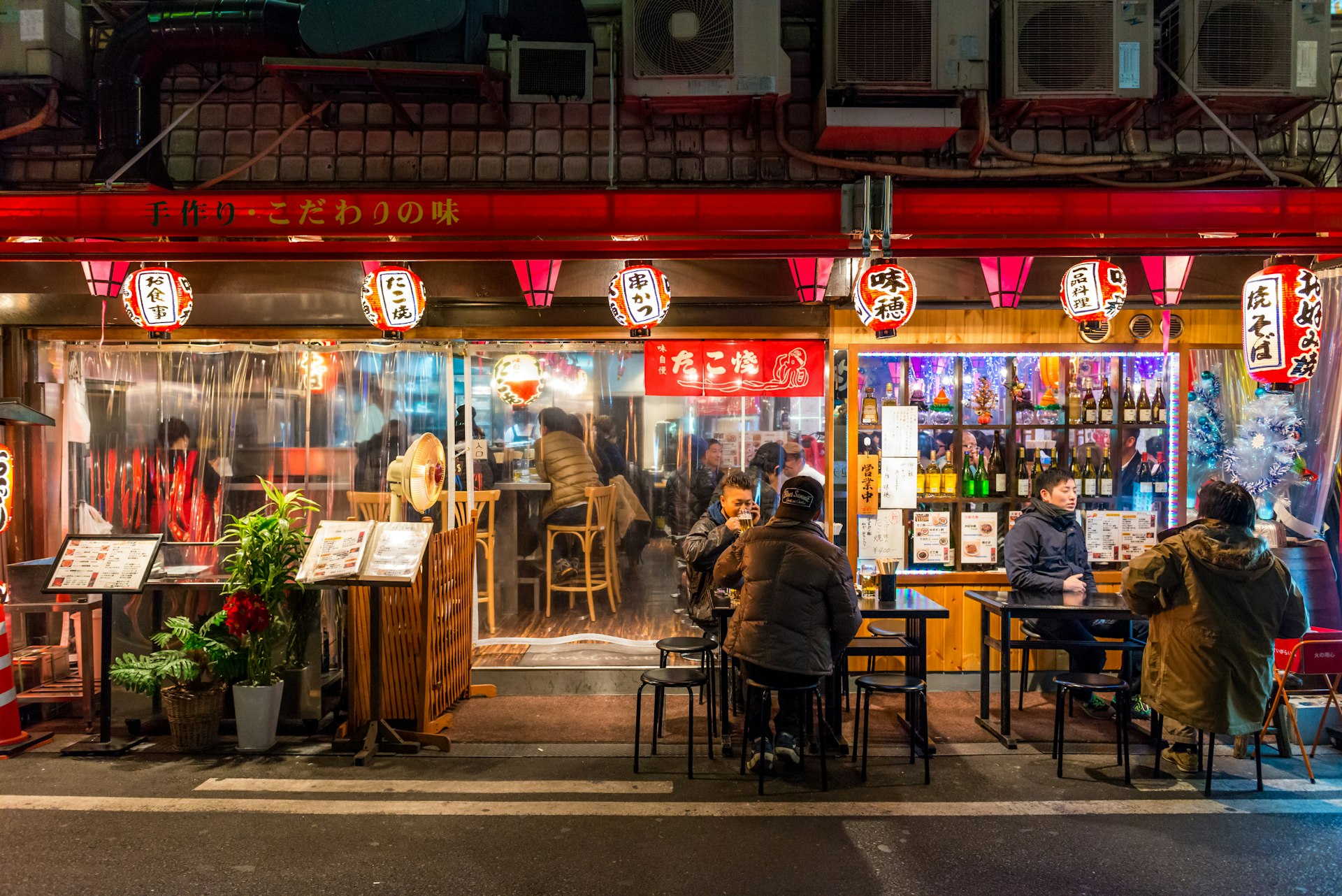
Best for street food and nightlife
Tokyo doesn't nab all the superlatives when it comes to urban experiences. Osaka , Japan's third-largest city, is tops for street food: don't miss its signature dish, takoyaki (grilled octopus dumplings).
It also has the most dramatic of nightscapes: a dazzling display of LED lights, animated signage and flashing video screens along the canalside strip Dōtombori .
The city, Japan's oldest merchant center, has a pace, spirit and zest for life all of its own; its unofficial slogan is kuidaore (eat until you drop).
Planning tip: In addition to nightly accommodation fees, Osaka hotels will typically charge an accommodation tax that varies depending on the standard nightly rate.
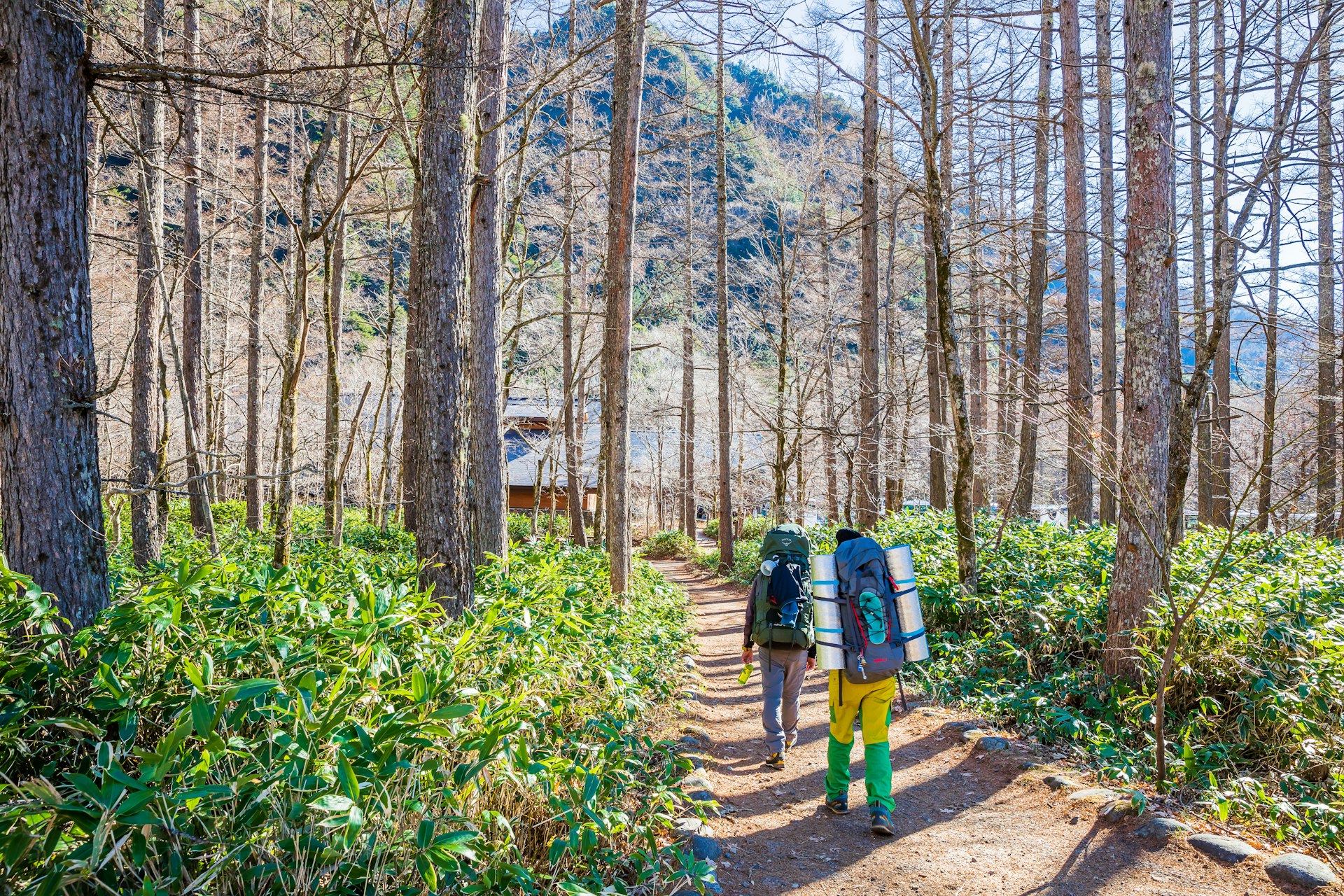
10. Kamikōchi
Best for mountain hikes
One of Japan's most stunning natural vistas, Kamikōchi is a highland river valley enveloped by the soaring peaks of the Northern Japan Alps .
Easy day hikes are possible along the Azusa-gawa, following the pristine river through tranquil forests of willow, larch and elm.
The birthplace of Japanese alpinism, Kamikōchi is also the gateway for more challenging treks up some of the country's tallest mountains, such as Yari-ga-take (3180m/10,433ft). Private cars are banned from Kamikōchi, which lessens the impact of the crowds.
This article was first published Apr 29, 2021 and updated Mar 28, 2024.
Explore related stories

Destination Practicalities
Jun 12, 2024 • 8 min read
Get to know Osaka, Japan's friendliest city, with this first-timer's guide.

May 23, 2024 • 13 min read

May 3, 2024 • 14 min read

May 1, 2024 • 9 min read

Apr 14, 2024 • 6 min read

Apr 3, 2024 • 17 min read

Mar 31, 2024 • 7 min read

Mar 28, 2024 • 7 min read

Mar 26, 2024 • 8 min read

Japan Travel Guide
Japan is a country with millennia of history. It was a closed-off nation many years ago. Now it rules in many commercial industries. Still, it is bankrupt. It has shiny cities with sleek and modern infrastructure, but next to these, you can see poverty-stricken houses.
That means that there is a lot to explore in Japan. From the ruins to high-end boutiques.
Surrounded by four water bodies, this nation is divided into eight regions. There is the North Pacific sea in the east. And the sea of Japan in the west. On the southwest, there is the China sea. The Kyushu region lies here. This is the birthplace of Japan. Then comes Chugoku, where Hiroshima is located. Next to it is Kansai, which has an interesting intersection of metropolitan cities and ancient culture. Chubu is the area of hilly terrain with cities like Nagoya in its trail. C entral Japan houses its capital, Tokyo.
Then comes favorite tourist destination Tohoku, popular for its adventure activities and delicious cuisine. The northern tip of the country has a chilling climate and a frozen landscape. Some other large cities are Kyoto, Kanazawa, Hiroshima, Nara, Nagasaki, Osaka, Sendai and Sapporo. The Japan Alps are not the only natural wonder of the nation. You can climb Mount Fuji. Sado island can be an exotic destination. Yakushima is a UNESCO heritage site you cannot miss.
Japan can be an easy place to get around. You can get a traveler’s pass and travel around the country in train affordably. There are separate compartments for women. Planes can also take you across the island nation, but they are far too expensive. Boats are not usually preferred here. If you are not going far, you should consider biking.
One USD is equal to one hundred and twenty-one yen. The currency exchange is available in banks and from money changers. All major credit cards are acceptable and ATMs are available widely. If you want to be travel on a budget, then you need to stay away from the pricey transportation. You can stay at the capsule hotels which cost three thousand yen. Stick to regular restaurants instead of luxury gourmet restaurants and you will be okay.
Taxis are multiple but can be expensive, especially during the rush hours. Also, drivers tend not to speak English, so you should have a card with your destination written in Japanese. If you want to hire a car, it is not difficult to do. All you need is to be over 18 years old and have a valid international driver’s license. Roads are in good condition and cars drive on the left in Japan.
Here, they use electric sockets of type A. The standard voltage is 100V.
August 10, 2016 12:00 am Published by Neha Rizal 1 Comment
Join the Travel Club
Categorized in: Destinations
Leave a Reply Cancel reply
Your email address will not be published. Required fields are marked *
Resources and Links
- Write for Us
- Advertising
- Apply Tourist Visa
- Global Travel Alerts
- World Climate Guide
- Adventure Travel
- Press Bio/Media Kit
- Useful Travel Resources
- Common Travel Questions
- List of All Blogs
- Travel Bucket List
- Couple Goals
- Tours & Experiences
- Tailor-made Trips
- Bahasa Indonesia
We are happy to see you again!
Continue with
Or use email.
No Account? Create one
Create account
Already have an account? Sign in
Quickly Sign up with
I agree to Japan Travel's Terms of Service and Privacy Policy . Terms of--> and acknowledge that Japan Travel's Privacy--> applies to me.-->
Email reset password link
Please check your inbox and click the link we will send to you.
AN ANCIENT ART
THE TRADITION OF THE KATANA AND THE SAMURAI

Man is like a sharp blade
A samurai once said: "In man there are two dispositions, one internal, the other external, in order to be effective they must be together. It's like the blade of a sword: after sharpening the blade, it is put back into the scabbard." The sword is taken out of its sheath to dry it well and then put back in. If one always keeps the sword unsheathed, no one will approach him and he will have no allies. On the other hand, if one always keeps the blade in the sheath, it ends up rusting, becoming unusable, and the one who keeps it will be ridiculed.
Yamamoto Tsunetomo from "HAGAKURE - The Secret Code of the Samurai"
A bit of history:
The Katana, perhaps the most distinctive symbol of ancient Japan, the mythical sword wielded by legendary Samurai, a symbol of power and honor.
Its history dates back to the Muromachi period (1392-1573), when the way of fighting changed radically. During this period, warriors began to carry the Katana with the blade facing upwards, in order to cut the enemy with a single stroke. Along with the Katana, the Samurai used to carry another type of shorter sword called Wakizashi in the obi (belt), mostly used to finish off unarmed enemies or to commit seppuku. With the Meiji period (1868-1912), the Samurai caste was declared extinct and it was forbidden to carry the Daisho (a pair of two swords carried inside the obi) in public. Nowadays, sword production continues at very low rates, only to continue the tradition. It is estimated that in Japan there are 300 swordsmiths, of which only 30 are active in the whole country.
ANCIENT TECHNIQUES OF KATANA CRAFTSMANSHIP
In Tenri, where the oldest road in Japan, the "Yamanobe" (which runs along the eastern edge of the Nara basin), is located, we find the workshop of Futo Masataka . Here it is possible to witness a demonstration of the traditional techniques of Katana forging, which have been passed down for over 1000 years.
Crafting techniques:
The manufacturing process requires great skill and precision and several months of hard work. The blade is manually forged from an alloy of steel, mainly composed of iron and carbon Tamahagane (jewel steel), which is folded, hammered, and tempered multiple times to create a sword that is said to "never break, chip, or bend."
Once the blade is obtained, it is polished to make the sword artistically beautiful to look at. In fact, the sword is assigned to a Toshigi (one who takes care of this process). This process takes several weeks. The process is divided into two phases:
"Shitaji togi" in this phase, all the defects that could make the blade fragile in some points are corrected
"Shiage togi" in this phase, the characteristics of the blade are enhanced
Once the work is finished, the sheath and handle are created from wood. And this is where the last figure comes into play, Sayashi (the mounter).
Conclusions
The atmosphere in the workshop is truly magical: the rhythmic sound of the hammer striking the metal, the intense heat of the furnaces shaping the steel, the absolute concentration of the master while working dedicating body and soul to this project, drag you into the era of the Samurai. The approach of the master in this ancient art taught me the importance of dedication, patience, and the pursuit of beauty in the simplicity of things. It has been an incredible experience for me to see with my own eyes this ancient tradition, of which I had only read about in books or manga.
Getting there
From Nara Station it takes about 30 min with the Sakurai Line Get off at Tenri station and from there it's about a 15-minute walk
- Share on Facebook
- Share on X (Twitter)
- Copy link to share
By Alessio Pompeo
Community writer

Information
16 Kodanakacho, Tenri, Nara 632-0092, Giappone ( Directions )
futunomasataka.com
Explore nearby

Hiraosan Inari Shrine
By Matthew Eynon

Tenri-kyo Church Main Sanctuary
By Jim Swan
![Café de Rěve [Temporarily closed] Café de Rěve [Temporarily closed]](https://a3.cdn.japantravel.com/photo/1607-9012/90x60!/nara-cafe-de-reve-tenri-9012.jpg)
Café de Rěve [Temporarily closed]

Isonokami Shrine
By Paul Hackshaw
Top Articles
- Recommended

Nintendo Museum Coming Autumn 2024

Shake Shack Shibuya

The Bridge of Dreams

Sake at the Foot of Mount Fuji

Cicada Sake and Teahouse

Experience the Sansha Taisai Festival!

Sakaemachi After Dark

Discover the Magic of Yuzen Dyeing

Japan To Issue New Banknotes in July 2024

Guide to Bringing Medicines Into Japan

Your Name: Real-Life Locations in Tokyo

Gion Matsuri

Hachiko Statue in Shibuya

Japanese Urban Legends

Shibuya Crossing

Sanno Matsuri

Daikoku Car Meet

Guide to Suica Cards

Iwatayama Monkey Park
More from this category, your name: real-life locations...
By Jianne Soriano
By Japan Travel
By Ignatius Koh
By Veronica Carnevale
Leave a comment
Let us know how we can help.
Help us improve JapanTravel.com
We welcome any suggestions regarding this content. Your feedback is confidential and will be used to help improve this page.
Suggest an edit
https://en.japantravel.com/nara/an-ancient-art/70828
Thank you for your support!
Your feedback has been sent.

Voted Best Destination Management Company (DMC) for Czech Republic in 2020 at the prestigious World Travel Awards, Art of travel, is an award winning B2B travel company relied on by its partners to deliver amazing travel experiences for its partners and their customers. Be inspired and contact us for Leisure and MICE group travel for Central Europe.
Skip navigation
- Trips a-la-carte
- Service with excellence
You are here Home » Trips a-la-carte » Destinations » Japan
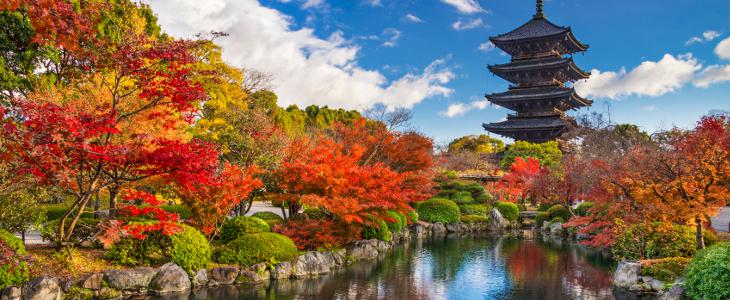
When you hear the word 'Japan', what do you think of? Does your mind fill with images of ancient temples or futuristic cities? Do you see visions of mist-shrouded hills or lightning-fast bullet trains? Do you think of suit-clad businessmen or kimono-clad geisha? Whatever image you have of Japan, it's probably accurate, because it's all there. But you may also have some misconceptions about Japan. For example, many people believe that Japan is one of the world's most expensive countries. In fact, it's cheaper to travel in Japan than in much of North America, Western Europe and parts of Oceania. Others think that Japan is impenetrable or even downright difficult. The fact is Japan is one of the easiest countries in which to travel. It is, simply put, a place that will remind you why you started traveling in the first place.
If traditional culture is your thing, you can spend weeks in cities such as Kyoto and Nara, gorging yourself on temples, shrines, kabuki, ō (stylized dance-drama), tea ceremonies, and museums packed with treasures from Japan's rich artistic heritage. If modern culture and technology is what you are seeking, Japan's cities are an absolute wonderland - an easy peek into the future of the human race, complete with trend-setting cafés and fabulous restaurants. Outside the cities, you'll find natural wonders the length and breadth of the archipelago. From the coral reefs of Okinawa to the ski-resort of Niseko, Japan has more than enough natural wonders to compete with its cultural treasures. Then there's the food: whether it's impossibly fresh sushi in Tokyo, perfectly battered tempura in Kyoto, or a hearty bowl of rāmen in Osaka, if you like eating you're going to love Japan.
But for many visitors, the real highlight of their visit to Japan is the gracious hospitality of the Japanese themselves. Whatever your image of Japan, it no doubt exists somewhere on the archipelago - and it's just waiting for you to discover it!
Photogallery
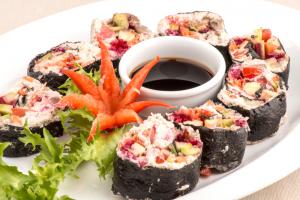
The Ultimate Japan Itinerary for First-Timers: From 1 to 3 Weeks

I’ve yet to meet a traveler who didn’t love their time in Japan . It’s just one of those countries that everyone loves. How can you not? The food is carefully crafted and delicious; the history and culture are both rich and long; the landscape breathtaking; and the people super friendly and polite.
Japan remains one of my favorite countries. No matter how long I visit, it’s never enough. I always leave wanting more.
But the country always seems forbidding to many travelers. It definitely still has that “exotic” stereotype that makes people think it’s hard to travel around.
Where should you go? What should you include in your Japan itinerary? Should you buy a JR Pass to help you get around?
To help you out, here are a few suggested itineraries based on my years of visiting that will ensure you see the best sites on your Japan trip — as well as get off the beaten path and get a real sense of Japanese culture!
Table of Contents
Japan Itinerary: Know Before You Go
Japan itinerary: one week, japan itinerary: two weeks, japan itinerary: three weeks.

Just be sure to get one BEFORE you go as you cannot purchase them on arrival. For more information on the pass, including how much they cost and how you can get one, read this blog post . It has everything you need to know!
Mobile Data in Japan In Japan, English isn’t widely spoken (especially outside of the major cities) so having access to the internet is vital for checking addresses, using translation apps, and looking up things to see and do. The easiest way to get data is through an international eSIM for Japan .
An eSIM allows you to access mobile data via a QR code so you can have internet wherever you are, without worrying about physical SIM cards or roaming charges. This will save you a lot of time and hassle when using apps like Google Maps, Google Translate, Instagram, and YouTube. It will also come in handy for checking menus at restaurants (since they are rarely in english).

Day 1 & 2: Tokyo Chances are you’ll be starting your trip in Tokyo , since it’s home to the country’s biggest international airport. If your trip is seven days long, activate your JR Pass right away, so that you can take advantage of the free JR trains that run through the city.
While you could easily spend your entire week in Tokyo and not get bored, here are some of the highlights:
Visit the fish market – In 2018, Tokyo’s main fish market moved to Toyosu, which is twice the size of the old one, Tsukiji, making it the largest in the world. While a lot of good restaurants moved too (Sushi Dai being the most famous), I find the place itself very stale, since you can no longer wander the floor (you look down via a walkway above; you also need a visitor’s pass to enter).
The old outer market in Tsukiji is still great though, and you can still find food and stores there too. You can wander alone and just eat and shop until you can’t anymore! Most businesses open at 6am, so it’s a perfect place to go in the morning when you wake up early because of jet lag. Food and drink tours of the Tsukiji Outer Market are available for around 13,500 JPY.
See Sensoji Temple – Sensoji is beautifully painted and sits in a scenic spot near a five-story pagoda and the famous Kaminari Gate. There’s a huge statue of Kannon, the goddess of mercy, inside the main hall. It’s always busy but is worth seeing with your own eyes. The temple is free to visit.
Drink in Golden Gai – This alleyway of back-street bars is a lively place to drink at night and has a bit of a red-light-district feel to it. It is not to be missed. Even if you don’t drink, be sure to wander about. Arigato Tours offers tours of the area where you’ll learn about the neighborhood while stopping to sample Japanese classics like sushi, yakitori, and ramen. Tours are 23,900 JPY and include a drink and dishes at four food stops.
Visit the Imperial Palace – When the emperor moved from Kyoto to Tokyo in 1869, he took Edo for his new residence and renamed it Tokyo. Though you can’t go inside (or get very close), the building is amazing. It is surrounded by lovely grounds and a park, and there’s a moat around the stone walls. You can also see the changing of the guard, though it’s a relatively low-key and unassuming ceremony.
Watch a sumo match – Kokugikan, Japan’s most famous sumo arena, hosts tournaments three times each year. The wrestling that we see today dates to the 17th century, though its origins go back even further, and it’s still one of the most popular traditions in the country. If you’re in town at the right time, this is a must-do! Tickets sell out quickly, so act fast. You can book a ticket online here (you’ll be accompanied by a guide too, so you can learn more about the tradition as it unfolds before your eyes).
If you have more time, consider taking a day trip to Kamakura to see the giant Buddha statue (Daibutsu). It is over 13 meters (42 feet) tall and dates back to the 13th century. The journey is around 90 minutes each way — and free with the JR Pass !
For delicious food, some of my favorite bars and restaurants include: Uogashi Nihon-Ichi (Standing Sushi Bar), Nemuro Hanamaru KITTE Marunouchi, Motodane, Tokyo Whisky Library, Ichiran Shibuya, and Uohama.
WHERE TO STAY IN TOKYO : Hostel Chapter Two – A small, family-run hostel not far from Skytree Station in Asakusa. I really like the shared kitchen and common room, as there’s a real social feel to them.

With its beauty come lots of crowds though, so try to visit outside of the busy summer months. Even with lots of tourists, though, the city is still magnificent and has a lot to offer. Some things to see and do that you shouldn’t miss are the following:
Visit the Golden Pavilion – This famous (and picturesque) temple dates to the 1950s, when a monk burned down the previous temple (from the 14th century) while trying to commit suicide. It’s a UNESCO World Heritage Site and one of the most-visited destinations in the country!
Explore Gion – Gion, the historic geisha district, is renowned as being one of the most iconic and atmospheric areas of town. It’s known for its traditional wooden machiya houses, narrow alleyways, cobblestone streets, and preservation of geisha (known locally as geiko) culture. Lining the main street are ochayas (teahouses where geishas entertain), small shops, and many restaurants, ranging from upscale kaiseki restaurants serving traditional Kyoto cuisine to casual eateries.
To really learn more about this amazing party of town and its past, take a walking tour of Gion . You’ll learn a ton and get a lot of context. They cost around 1,800 JPY.
Wander in the Bamboo Forest – For a relaxing break, head to Arashiyama and let the dense and towering stands of bamboo envelop you. Located near the famous Tenryu-ji temple, it’s one of the most beautiful places in the entire country. It’s not that big, but there are some hidden areas to explore. Just make sure to arrive early if you want to enjoy it without the crowds (it fills up fast after sunrise).
While there, I would also recommend visiting the Okochi Sanso Garden, which (along with the home) belonged to the famous Japanese actor Denjir? ?k?chi (1898–1962). It’s not free (it’s 1,000 JPY), but it’s really nice and has some wonderful views.
Admire Ryoan-ji temple – This is my favorite temple in Kyoto. Originally established in 1450 as a residence for a high-ranking samurai, it was soon converted into a Zen temple and is now a UNESCO World Heritage Site, with a mausoleum that houses the remains of seven emperors. Its traditional rock and sand garden is considered one of the best in the country. There’s also a teahouse where you can experience the traditional Japanese tea ceremony ( chanoyu ) as you overlook the Kyoyochi reflecting pool.
Wander the Nishiki Market Nishiki Ichiba is now one of the biggest indoor markets in town. Known as “Kyoto’s Kitchen” and spanning over five blocks, it is full of vendors selling traditional dishes from the region, classic Kyoto souvenirs, and really just about anything else. There are over a hundred stalls here, many of which have been in the same family for generations. Opening hours depend on the shop but are typically from 9am to 6pm.
To dive deeper into Japanese food culture, you can take a food tour of the market . It’s the best way to learn about all the food you’ll see, as well as the market’s history.
For a half-day trip, you can also visit Nara. It’s a small city just one hour from Kyoto. Nara was the capital of Japan in the eighth century, so there are lots of buildings and temples here that are upwards of a thousand years old (which is rare in Japan, due to fires, as well as World War II). But the real draw in Nara are the deer.
Since the 17th century, those in and around the city have been considered sacred. You can buy crackers to feed them or just watch them stroll around carefree. A guided half-day walking tour that includes all of Nara’s highlights as well as a traditional lunch is 11,500 JPY.
While you’re here, don’t miss a visit to Todai-ji. It’s the world’s largest wooden building and is home to a 16-meter (52-foot) Buddha statue. It was built in 738 CE and is now a UNESCO World Heritage Site. Admission is 600 JPY.
WHERE TO STAY IN KYOTO : Backpacker Hostel K’s House – A fun, social backpacker hostel in a great central location. The rooftop terrace is a cool spot to hangout and meet other travelers after a day of exploring.

Don’t miss Osaka Castle though. While it’s not the original (this version dates to 1931), it’s nevertheless an impressive sight. It’s home to a small but insightful museum and an observation deck that offers some picturesque city views.
And be sure to stroll down Dotonbori (ideally at night), the main street, which is lined with restaurants, stores, and tons of neon lights and signs. A guided walking tour that includes Dotonbori as well adjacent neighborhoods is 6,500 JPY.

Today, Hiroshima is thriving . Don’t miss the Atomic Bomb Museum, which depicts the history of the city before and after that fateful day. It has photos, artifacts, videos, and information about the effect of radiation on the population. It’s a sobering experience but one that should not be missed.
If you feel like getting out of town afterward, head to Miyajima , an island that offers a place to hike and enjoy nature. You can also take a cable car to the peak of the mountain to take in the view. A one-way ferry ride to the island takes 10 minutes and is free to JR Pass holders.
WHERE TO STAY IN HIROSHIMA : Roku Hostel – A cozy, small hostel with a rustic atmosphere and design. It feels like you’re staying with a friend here, and the beds are super comfy too.

If you like history, don’t miss the Hida Minzoku Mura Folk Village, home to a collection of traditional thatch-roof houses that you can enter to further immerse yourself in the country’s past.
This city (and region, really) is famous for its Hida beef, a high-fat variety that’s even better than any A5 Wagyu you might have. It just melts in your mouth. Be sure to have some while you are here!
The Japanese Alps are not far from here as well, so if you love hiking and want to extend your time in the region, head to Kamikochi for a day hike or overnight trip. It’s just an hour away and has both easy and moderate trails, which are open from April to November. Hiking trails can also be found in Hakusan National Park (also just one hour away by car).

One of the more unique temples in Japan is here too: Ninja (Myoryuji) Temple. While the temple wasn’t home to actual ninjas, Myoryuji was built as a defensive structure (strict laws forbade local lords from building defenses, so they were hidden in the temple to circumvent the rules). These include hidden rooms, secret tunnels, and a maze of staircases and halls to confuse enemies.
If you need a break from exploring cities, Hakusan National Park, home to Mount Haku, one of the three holy mountains, is just an hour south of town.

If you’re here in April, there are incredible cherry blossom displays that are famous in the region. And, just like Takayama, Matsumoto is close to the Japanese Alps, so you’re just a stone’s throw from some of the best hiking in the country.

There are tons of hotels (both modern and traditional) that have their own hot springs (often both indoors and outdoors). It’s the perfect place to wrap up a trip, relax, and take in the views.
In addition to getting a copious amount of R&R, be sure to ride the cable car up the mountain for even more amazing views. The area is surrounded by craters from an inactive volcano that erupted 80,000 years ago (not to be confused with nearby Mount Fuji, which is an active volcano), and you’ll find lots of vendors at the top selling eggs cooked in the sulfurous waters. It’s said the eggs prolong one’s life by seven years, so feel free to give them a try!
If you prefer to hike up instead, the trail is open between July and September, with the trek taking anywhere from 5 to 12 hours, depending on your level of fitness. Typically, hikers leave at night in order to arrive at the summit by dawn. There are little shops along the way that sell food and even beds you can rent in advance if you want to split your journey up. Just make sure you do your research and prepare in advance as it’s a tough hike!
If you really want to play tourist, you can also ride a mock pirate ship around the lake for more views of the mountains, and Mount Fuji in particular.
Full-day tours around Hakone that include all the main sights cost 14,800 JPY.
WHERE TO STAY IN HAKONE : Hotel Green Plaza – With gorgeous views of Mount Fuji, a huge buffet dinner (with both Western and Japanese options), and a private onsen where you can relax and enjoy the view, this is one of the best places to stay in Hakone if you want value but don’t want to break the bank.

Using the suggestions above, here’s how I would organize your itinerary:
- Days 1-3 : Tokyo
- Day 4 : Mount Fuji or Hakone
- Day 5 : Takayama
- Days 6 & 7 : Kanazawa
- Days 8 & 9 : Matsumoto
- Days 10-12 : Kyoto
- Days 13 & 14 : Osaka
- Days 15 & 16 : Hiroshima

If you do want to spend a few hours in Hakodate, don’t miss the Morning Market, where you can find lots of fresh seafood. You can also visit Fort Goryokaku, the first “Western”-style fort in the country.

Be sure to stop in at the local Beer Museum too, owned by Sapporo Breweries (the oldest beer company in the country). It showcases the history of beer in Japan and how the business got its start. If you’re a whiskey fan, stop by The Bow Bar, home to some rare (and expensive) whiskeys and considered one of the best such bars in the world.
What I love about the city is its location. This region has some of the best hiking in the country. There are plenty of hills and mountains, offering options for both day hikes as well as overnight trips. Some highlights include Mount Me-akan, Mount Asahim, Mount Mashu, and Nishibetsu-dake. For the best views of the city, head to Mount Moiwayama. It’s just a 30-60-minute hike to the top, though there is a cable car you can take as well.
And if you’re visiting in the winter, hit the slopes! There are over a hundred ski resorts in Hokkaido. You can rent skis (or a snowboard) for around 10,000-18,000 JPY. Lift prices are usually 4,000-6,000 JPY per day. In the winter, don’t miss the annual Sapporo Snow Festival. It’s held every February and draws over two million visitors. There are ice sculptures, igloos, live music, and delicious local foods on offer.
Additionally, be sure to take a day trip to Otaru, where you’ll find some of the freshest uni in the whole country (this is the main area where the famed Hokkaido uni is caught). Go hungry and visit the markets, stalls, and shops around there.
WHERE TO STAY IN SAPPORO : Waya Hostel – This is a laid-back, colorful hostel with a social atmosphere that makes meeting people a breeze. It has a homey, DIY feel and is perfect for budget travelers looking for a no-frills place to crash.

There is a ton to see and do in Japan , and you could easily spend another month here and still just scratch the surface (we didn’t even get to Okinawa and the islands!). And while these itineraries are a bit fast-paced, Japan isn’t cheap, so budget travelers need to move around the country quickly to avoid breaking the bank.
But no matter how long you visit, you won’t be disappointed. Japan is an amazing, beautiful, and unique destination that I never get tired of visiting. While it’s not as affordable as its neighbors, there are still plenty of ways to save money , and it’s definitely worth spending the time (and money) visiting. You won’t be disappointed!
Just make sure to get your Japan Rail Pass before you go!
Book Your Trip to Japan: Logistical Tips and Tricks
Book Your Flight Find a cheap flight by using Skyscanner . They are my two favorite search engines, because they search websites and airlines around the globe, so you always know no stone is left unturned!
Book Your Accommodation You can book your hostel with Hostelworld as they have the most comprehensive inventory so they are best for booking a hostel. If you want to stay in a hotel or guesthouse in Japan, use Booking.com as it consistently returns the cheapest rates for guesthouses and hotels.
Don’t Forget Travel Insurance Travel insurance will protect you against illness, injury, theft, and cancelations. It’s comprehensive protection in case anything goes wrong. I never go on a trip without it, as I’ve had to use it many times in the past. My favorite companies that offer the best service and value are:
- Safety Wing (best for everyone)
- Insure My Trip (for those over 70)
- Medjet (for additional evacuation coverage)
Looking for the Best Companies to Save Money With? Check out my resource page for the best companies to use when you travel! I list all the ones I use to save money when I travel — and I think they will help you too!
Be sure to check out the Japan Rail Pass if you’ll be traveling around the country. It comes in 7-, 14-, and 21-day passes and can save you a ton of money!
Looking for More Travel Tips for Japan? Check out my in-depth Japan travel guide for more ways to save money; information on costs; tips on what to see and do; suggested itineraries, reading, and packing lists; and much, much more!
Got a comment on this article? Join the conversation on Facebook , Instagram , or Twitter and share your thoughts!
Disclosure: Please note that some of the links above may be affiliate links, and at no additional cost to you, I earn a commission if you make a purchase. I recommend only products and companies I use and the income goes to keeping the site community supported and ad free.
Related Posts

GET YOUR FREE TRAVEL STARTER KIT
Enter your email and get planning cheatsheets including a step by step checklist, packing list, tips cheat sheet, and more so you can plan like a pro!

- Subscribe Digital Print

- Tokyo governor race
- G7 Italy summit
- Japan crime
- Latest News
- Deep Dive Podcast
Today's print edition
Home Delivery
- Crime & Legal
- Science & Health
- More sports
- CLIMATE CHANGE
- SUSTAINABILITY
- EARTH SCIENCE
- Food & Drink
- Style & Design
- TV & Streaming
- Entertainment news
Chinese outbound travel recovery lags due to costs and visa snags

A recovery in Chinese overseas travel from the COVID-19 pandemic is fading as rising costs and difficulties in securing visas cement a preference for local and short-haul destinations.
Eighteen months after China dropped strict zero-COVID policies and reopened its borders, the recovery in overseas travel is lagging behind market expectations and the shape of Chinese travel is changing, with a surge in domestic trips.
Pressured by a prolonged property crisis, high unemployment and a gloomy outlook in the world's second-biggest economy, Chinese consumers have become more frugal since the pandemic, prompting discount wars on everything from travel to cars, coffee and clothes.
Chinese people took 87 million trips abroad last year, down 40% from pre-COVID 2019, and industry observers say the pace has slowed since the Lunar New Year in February. China's travelers spent 24% less last year than in 2019, while U.S. travelers' spending was up 14%, according to U.N. Tourism data.
The Chinese lag is bad news for countries like France, Australia and the U.S., which were among the top destinations for Chinese travelers before the pandemic.
Liu Simin, vice president of the tourism branch of the China Society for Futures Studies research institute, forecasts China's international travel might not recover to pre-pandemic levels for another five years.
"The recovery is a lot slower than expected," Liu said. "The devaluation of the Chinese yuan combined with inflation in the U.S. and Europe is a double blow."
The Chinese currency has fallen more than 2% against the dollar since the start of the year, raising costs in yuan terms for Chinese travelers abroad.
Consultancy Oliver Wyman last month pushed its estimates for China's international travel recovery to late 2025, half a year later than it forecast last year.
"I would actually argue that consumers are even more cost-conscious than last year, and you'll also see that feed into travel trends," said Imke Wouters, Hong Kong-based partner at Oliver Wyman.

To be sure, overseas travel is rebounding, with Chinese travelers again the world’s top spenders on international tourism last year after falling behind the United States in 2022, according to U.N. Tourism data.
This summer, 8% of flights at Chinese airports have been international, up from just 1% in 2022, according to aviation data provider OAG.
Flip to domestic travel
That recovery, however, is overshadowed by the surge in domestic trips, which hit a record 295 million during the five-day May Day holiday, up more than 20% from 2019, official data showed.
Domestic airlines seats were up 16% in May from the same month in 2019, while international flights were down 30%, Cirium data shows.
Wouters at Oliver Wyman said 40% of those who traveled abroad in 2023 for the first time since borders reopened had decided not to travel internationally again this year, mainly due to inconvenience and long visa processing times for many European destinations.
Beijing resident Wang Shu, 38, vacationed domestically after cancelling a trip to France because he could not get a visa, despite trying to book a visa appointment months ahead.
"I tried booking the interview in late March, as I planned to attend the French Open tennis in late May, but the earliest date that I could book was June 19," Wang said.
Wang instead vacationed in Changsha, the capital of Hunan province, known for its spicy food.
"The food was great, I watched a concert and spent one-tenth of the money I'd have spent in France," he said.
Australia's top source of tourists before COVID, China is now number four, with arrivals down 53% in March from March 2019, said Margy Osmond, chief executive of Tourism & Transport Forum Australia.
Chinese travelers to France, the most visited country in the world, have reached only 28.5% of 2019 levels, according to airport operator ADP.
Capacity on U.S.-China routes remains down more than 80% from 2019 levels, weighed by intensifying bilateral political tensions. The U.S. National Travel and Tourism Office expects Chinese tourism to the U.S. to recover fully only in 2026.
By contrast, countries with visa-free policies have received strong growth in Chinese visitors.
These include Singapore, Malaysia, Thailand, the United Arab Emirates, Qatar and Saudi Arabia, where flight capacity has also increased.
Switzerland, growing in popularity with high-end travelers on Trip.com, boasts a seven-day visa process, said Jane Sun, CEO of Trip.com Group.
Japan has also received a surge in Chinese travelers this year, boosted by a plunge in the yen's value.
"We are not just seeing a market re-growing, we are seeing a market re-shaping," Gary Bowerman, director of tourism intelligence firm Check-In Asia, said during an OAG webinar last month.

In a time of both misinformation and too much information, quality journalism is more crucial than ever. By subscribing, you can help us get the story right.

Fender Japan’s latest Art Canvas creations bring an iconic Japanese art landscape print series from the 1800s to the Esquire
F ender has continued to celebrate the first anniversary of its flagship Tokyo store by releasing a new range of Art Canvas Esquires, which brings a trio of iconic Japanese landscape prints to an electric guitar format.
Art Canvas creations aren’t exactly new, and we’ve seen a few of them in the past – including Hiroshi Nagai’s breezy limited edition models – but these new editions take on a whole extra layer of meaning.
To celebrate the milestone in style, Fender Japan has dived into a 19th century print series composed by legendary ukiyo-e artist Hokusai, transforming three landscapes from his famed Thirty-six Views of Mount Fuji range into electric guitar body artwork.
The Thirty-six Views of Mount Fuji series was composed between 1830 and 1832, and comprises a range of landscape prints that we imagine many of you will immediately recognize – especially The Great Wave off Kanagawa , which is used for one of the Art Canvas Esquires.
The other models, meanwhile, make use of Hokusai’s Thunderstorm Beneath the Summit and Tama River in Musashi Province pieces. And they’re all absolutely stunning.
Art Canvas guitars can be an acquired taste, but the picturesque nature of these models just tick all our boxes. You can bet they play like the real deal, too, thanks to their no-nonsense Esquire setup.
Said setup includes a standard Esquire spec sheet, comprising one American Vintage ‘58 single-coil. Sometimes less is very much more.
All we’re saying is, Hokusai’s Thirty-six Views of Mount Fuji range includes 33 more prints – as well as an additional 10 that were later composed after the series’ initial success – which means there is ripe opportunity for an Art Canvas expansion pack.
An Esquire with the artwork of Fine Wind, Clear Morning , or one that flashes Tea House at Koishikawa ? Yes. Yes please.
The Art Canvas Esquires aren’t limited edition per se, but they will be limited in stock when the first batch becomes available, and you’ll need to enter a lottery if you fancy picking one up. Each will be available for 198,000 Japanese Yen, which is approximately $1,260.
The lottery entry closes on June 25. Head over to Fender Japan to find out more.
These aren’t the only guitars that celebrate the first anniversary of Fender’s Tokyo store. Earlier this week, Fender Japan unveiled an unprecedented Strat that features an ancient Japanese coating .


IMAGES
VIDEO
COMMENTS
In Japan, these contrasting elements combine to create singularly enchanting experiences. Visit Japanese gardens and appreciate the beauty of the four seasons as medieval poets once did. Admire exquisite lacquerware. Turn your eyes to the present, and you'll find modern art museums coexisting in perfect harmony with nature, open-air music ...
Wandering the streets of Japan's major cities is akin to browsing a design museum as many of the buildings offer architectural inspiration. From the cavernous Tokyo Station to the Mikimoto Ginza 2 and Prada buildings in upmarket Tokyo districts, you can discover structural surprises at every turn. Alternatively, head to one of the country's actual design museums such as Tokyo's 21_21 DESIGN ...
Naoshima: Japan's Art Island. Naoshima, commonly known as Japan's art island, is a tiny island in the Seto Inland Sea, and one of our absolute favorite places in Japan. It's home to whimsical sculptures and installations, and modern museums and galleries featuring impressive architecture and artwork. Until the early 1990s, Naoshima was a ...
With Anne and her team, you will have one of the foremost Japan art and culture travel experts in the U.S. Given 20 years of travel to Japan and fluency in the language, she maintains extensive personal relationships with artists, benefactors, museum officials, galleries, critics, academics, and collectors.
Inspiring Art. Japan is rightly known for its rich artistic traditions, and its appreciation for both modern and traditional styles. Explore these in museums, galleries, outdoor installations that blend artworks with a natural setting, and in hands-on experiences all around the country.
This genre of art flourished in Japan from the 17th through to the 19th century and was aimed at the prosperous merchant class in the urbanising Edo period. Amongst the popular themes were depictions of beautiful women, kabuki actors and sumo wrestlers, scenes from history and folk tales, travel scenes and landscapes, flora and fauna and erotica.
A world-class exhibition space that's visually striking inside and out. The National Art Center, Tokyo, is Japan's fifth national art museum. The National Art Center, Tokyo, opened in 2007 and is one of the country's most important art spaces. A variety of exhibitions are held here, making use of one of the largest exhibition spaces in the ...
A guide to navigating Japan's Setouchi Triennale. Naoshima. This is the island where it all began. Japanese billionaire Soichiro Fukutake opened Benesse House Museum in 1992, bringing contemporary architecture and art to abandoned homes and beaches on the island. Twenty years ago, Naoshima was an isolated and sleepy island, but Fukutake saw the island's natural beauty as a perfect backdrop ...
3. Mori Art Museum. Art with a view. On the 52nd and 53rd floors of Roppongi Hills Mori Tower, Mori Art Museum stands tallest among museums in Tokyo. Visit for the art and linger for the views. Ticket holders of Mori Art Museum can also enter the open-air Sky Deck for just ¥500 (about US$5).
What to do and see on Japan's Art Islands: Naoshima, Teshima and Inujima
About 175km southwest of Kyoto, Naoshima (pronounced like "now-she-ma") is a small island in the Inland Sea between Japan's main islands of Honshu and Shikoku. Like many islands in the area, Naoshima was suffering from genteel decline until the Benesse Corporation started a series of art and architecture projects on the island in the late ...
Naoshima is an art island located in the Seto Inland Sea in Japan. It has been getting more attention lately due to the beautiful sea and a number of modern museums and galleries which house impressive artworks. Becoming a new center of contemporary art, there are more visitors coming to the island from all over the world.
Itinerary. Day 1 - Naoshima. 10 am: Art House Project. Visit the Art House Project, which is comprised of empty residential houses turned into art spaces, weaving in history and memories of the period when they were in use. Kadoya's 'Sea Of Time'is comprised of a shallow pool with LED countersin the water counting from one to nine at ...
Here are 30 unique and immersive experiences to consider for your Japan bucket list: Drink and Dine at an Izakaya. Soak in Healing Onsen (Hot Springs) Explore Art & Architecture on The Art Island of Naoshima. Splurge on a Night at a Tokyo Luxury Hotel. Attend a Japanese Matsuri (Festival)
Tour Highlights. Study the history of local pottery villages on Kyushu island at Karatsu, Toho Village, Arita, Bizen, Sasebo, and Hasami. Meet local Japanese potters and ceramic artisans at their private studios for a first-hand introduction to regional pottery styles. Take part in a Kintsugi Experience and study the art of "golden joinery ...
Day 1: Arrive in Tokyo, Japan. Day 2: Modern Tokyo Highlights & Evening Sake Tasting. Day 3: Sushi-Making Master Class & Old Tokyo Stroll. Day 4: Shinkansen (Bullet Train) to Hiroshima & Private Peace Memorial Park & Museum Tour. Day 5: Private Tour of Miyajima Island. Day 6: Visit Naoshima, Japan's Renowned Art Island.
Inujima is the last on the list as the smallest of the islands, home to less than 100 people. It's actually closer from Hoden port on the mainland than from Naoshima, but easily accessible either way via ferry. Inujima hosts a parallel Art House project alongside Seirensho Art Museum and Seaside Inujima Gallery.
Naoshima Island in the Seto Inland Sea is famous for its modern art museums, architecture, and sculptures. Part of Kagawa Prefecture, the island with its Mediterranean atmosphere, sandy beaches, and sunny weather, combined with a laid-back, rural feel is a relaxing getaway from Japan's large urban areas such as Tokyo and Osaka.. Where technology makes you speedy, up-to-the-minute, and all ...
About The Mission of Art Travel LLC About Anne Travel Programs Japan - Curated Art Travel Programs ... Why Choose ART TRAVEL? Top-level institutions and directors have worked with Art Travel to help them define their specific goals for traveling to Japan, Asia, Europe and beyond. Anne and her team custom-design the best itinerary to support ...
Here's our pick of the 10 best places to visit in Japan. 1. Tokyo. Best for contemporary culture. Tokyo is a city forever reaching into the future, pushing the boundaries of what's possible on densely populated, earthquake-prone land, and building ever taller, sleeker structures. It's Japan's top spot for contemporary art and architecture ...
13. Golden Temple, Kyoto. The Golden Temple, also known as Kinkaku-Ji, is the most popular thing to do in Kyoto and the most-visited attraction in the city — for good reason! This majestic temple, balanced on the edge of a large pond, is covered in real gold leaf.
Whatever your institutional goals, Anne designs a customized travel program that helps to support them. As a leading advisor in customized travel programs, Anne has designed and directed overseas trips for some of the world's top art institutions, including the Art Institute of Chicago, Getty Research Institute, Solomon R. Guggenheim Museum, Smithsonian Freer Sackler Gallery, and Tate Museum.
The Art of Travel Blog. Toggle navigation. Blog; Destinations; Our story; FAQ; Contact; Travel Planner; Personality Test; Travel Hacks; Travel Resources; Japan Travel Guide. Japan is a country with millennia of history. It was a closed-off nation many years ago. Now it rules in many commercial industries. Still, it is bankrupt. It has shiny ...
Tokyo National Museum - Established in 1872 on the north end, this massive building is the oldest and largest art museum in Japan. It houses one of the world's largest collections of art and artifacts from Asia, particularly Japan. ... Don't Forget Travel Insurance Travel insurance will protect you against illness, injury, theft, and ...
The Katana, perhaps the most distinctive symbol of ancient Japan, the mythical sword wielded by legendary Samurai, a symbol of power and honor. Its history dates back to the Muromachi period (1392-1573), when the way of fighting changed radically. During this period, warriors began to carry the Katana with the blade facing upwards, in order to ...
It is, simply put, a place that will remind you why you started traveling in the first place. If traditional culture is your thing, you can spend weeks in cities such as Kyoto and Nara, gorging yourself on temples, shrines, kabuki, ō (stylized dance-drama), tea ceremonies, and museums packed with treasures from Japan's rich artistic heritage.
By Management. 2,250. Japan. A land where natural splendours and timeless traditions meet neon sci-fi cities and a frenetic buzz, Japan invites discovery at every turn. Be inspired by authentic experiences, invigorating nature breaks and offbeat adventures doubling as refreshing escapes. Once you're tapped out exploring, relive the day's ...
Japan Itinerary: One Week. Day 1 & 2: Tokyo. Chances are you'll be starting your trip in Tokyo, since it's home to the country's biggest international airport. If your trip is seven days long, activate your JR Pass right away, so that you can take advantage of the free JR trains that run through the city.
1X. BEIJING/SHANGHAI -. A recovery in Chinese overseas travel from the COVID-19 pandemic is fading as rising costs and difficulties in securing visas cement a preference for local and short-haul ...
The three models celebrate the first anniversary of Fender's flagship Tokyo store, and each boasts a piece from legendary Japanese artist Hokusai's famed Thirty-six Views of Mount Fuji series